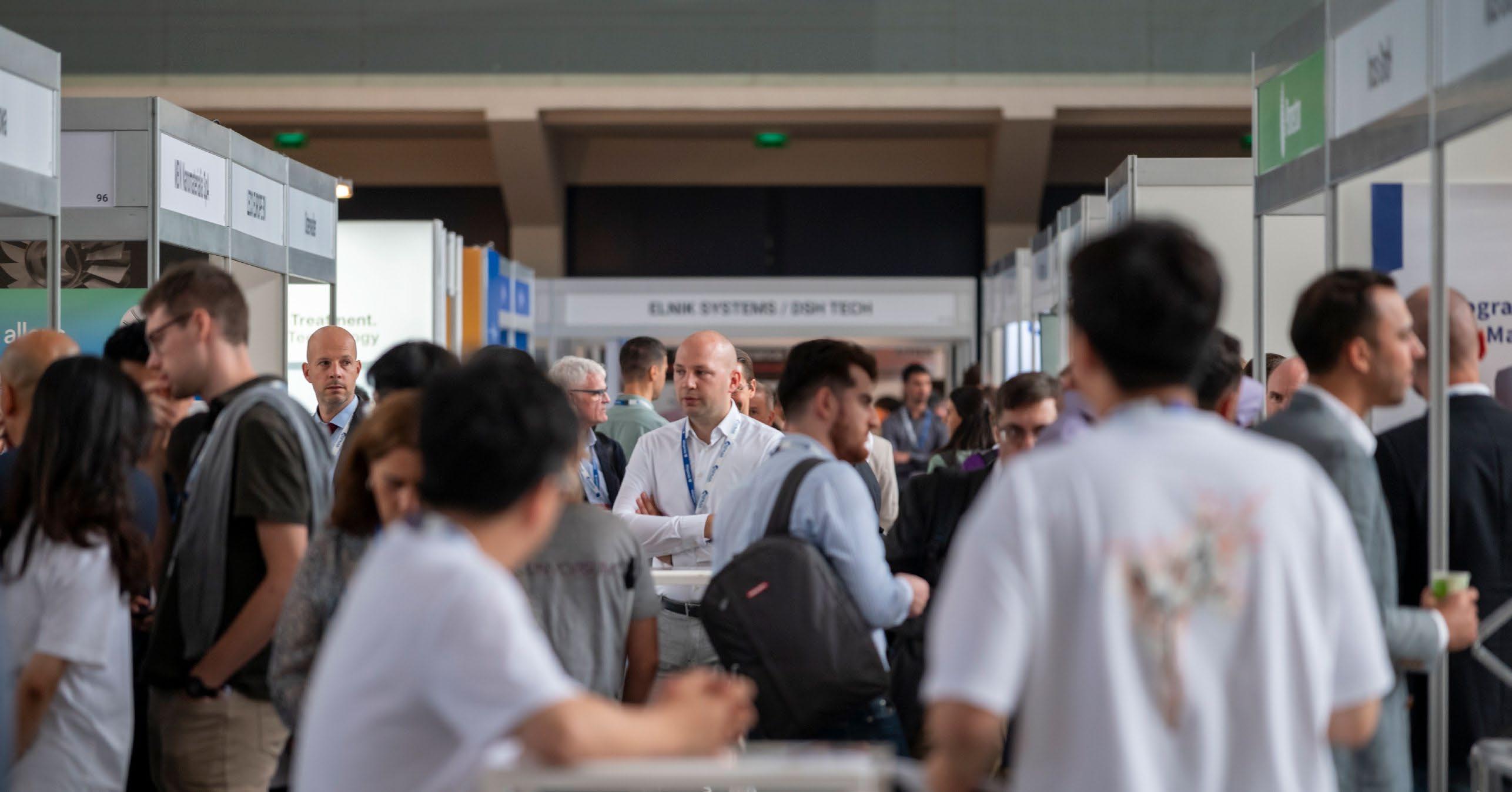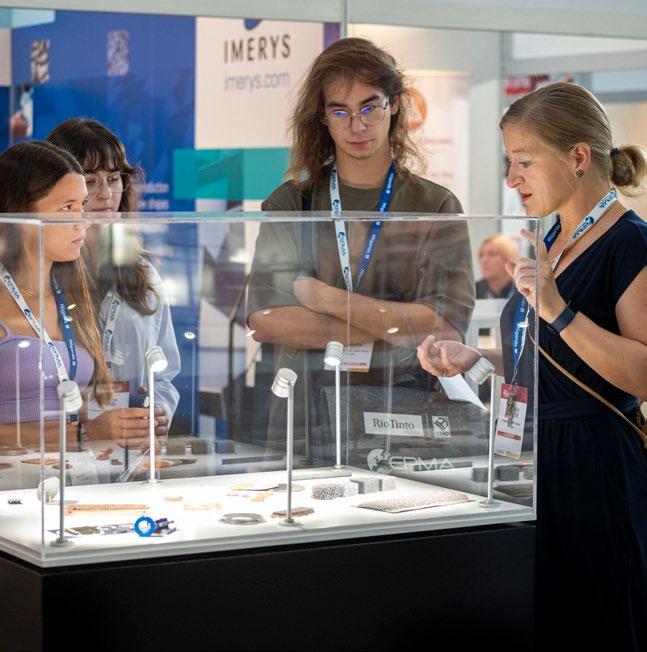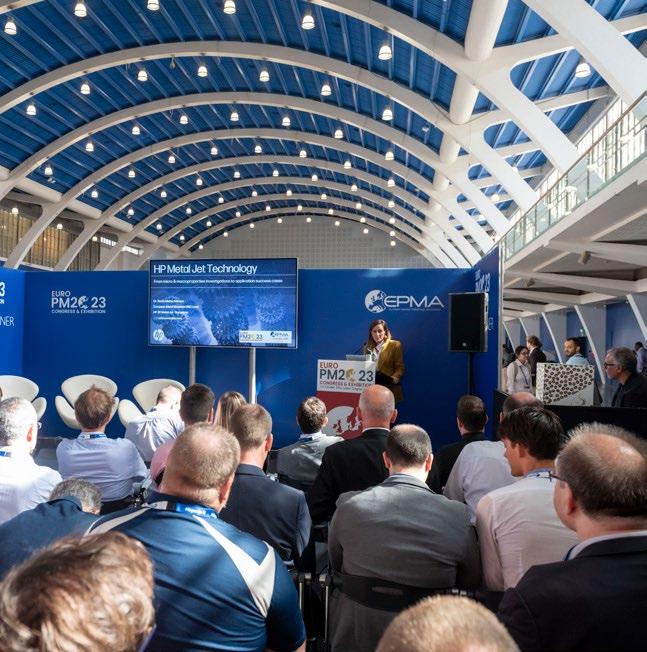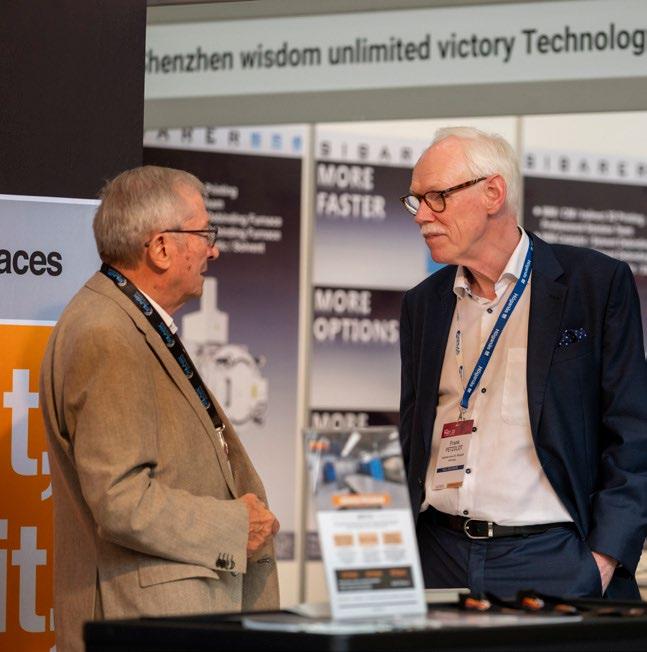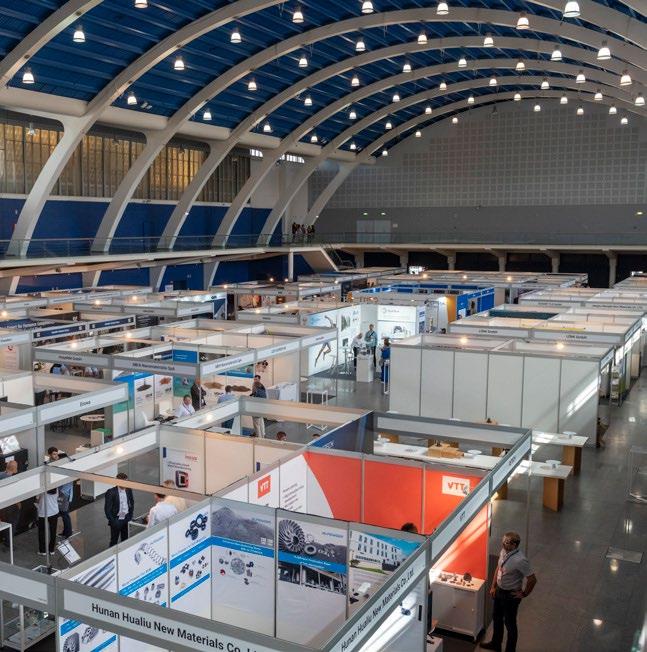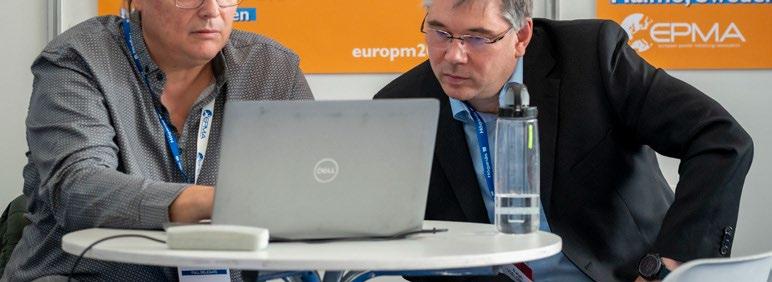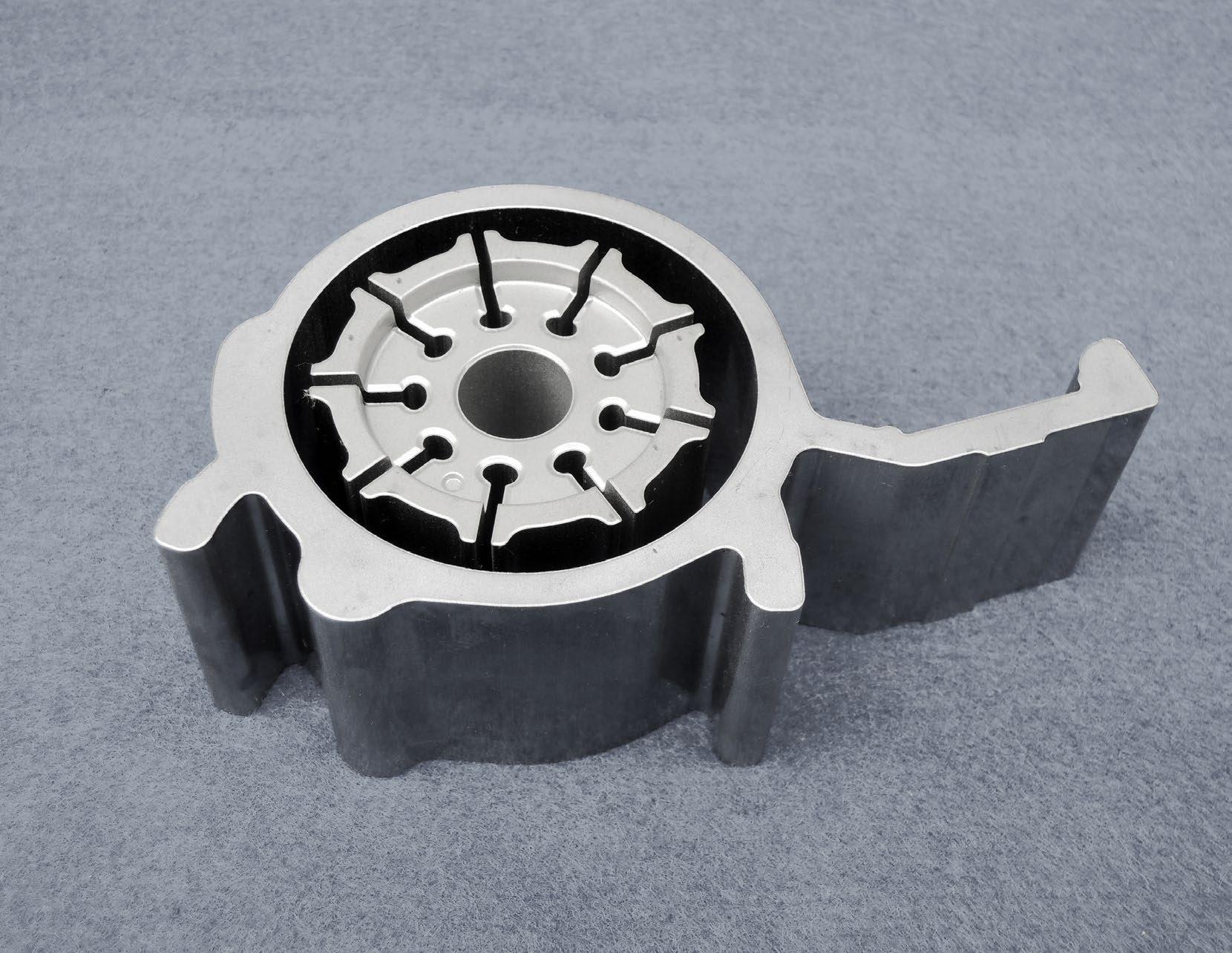

For a sustainable tomorrow

Höganäs AB commits to reduce absolute scope 1 and 2 GHG emissions 51% by 2030 from a 2018 base year.* Höganäs AB also commits to reduce absolute scope 3 GHG emissions from purchased goods and services, upstream transportation and distribution, and business travel 30% within the same timeframe.
*The target boundary includes land-related emissions and removals from bioenergy feedstocks.
Our climate tagret is validated by Science Based Targets initiative.
For more info scan the QR Code
www.hoganas.com

Publisher
11 Park Plaza
Battlefield Enterprise Park
Shrewsbury SY1 3AF
United Kingdom
Tel: +44 (0)1743 469909
www.pm-review.com
Managing Director & Editor
Nick Williams, nick@inovar-communications.com
Group News Editor
Paul Whittaker, paul@inovar-communications.com
Advertising Sales Director
Jon Craxford, jon@inovar-communications.com
Tel: +44 (0)207 1939 749
Assistant News Editor
Charlie Hopson-VandenBos charlie@inovar-communications.com
Editorial Assistant
Amelia Gregory, amelia@inovar-communications.com
Consulting Editor
Dr David Whittaker
Technical Consultant
Dr Martin McMahon
Digital Marketer
Mulltisa Moung, mulltisa@inovar-communications.com
Production Manager
Hugo Ribeiro, hugo@inovar-communications.com
Operations & Partnerships Manager
Merryl Le Roux, merryl@inovar-communications.com
Office & Accounts Manager
Jo Sheffield, jo@inovar-communications.com
Subscriptions
PM Review is published on a quarterly basis. It is available as a free electronic publication or as a paid print subscription. The annual subscription charge is £150.00 including shipping.
Accuracy of contents
Whilst every effort has been made to ensure the accuracy of the information in this publication, the publisher accepts no responsibility for errors or omissions or for any consequences arising there from. Inovar Communications Ltd cannot be held responsible for views or claims expressed by contributors or advertisers, which are not necessarily those of the publisher.
Advertisements
Although all advertising material is expected to conform to ethical standards, inclusion in this publication does not constitute a guarantee or endorsement of the quality or value of such product or of the claims made by its manufacturer.
Reproduction, storage and usage
Single photocopies of articles may be made for personal use in accordance with national copyright laws. All rights reserved. Except as outlined above, no part of this publication may be reproduced or transmitted in any form or by any means, electronic, photocopying or otherwise, without prior permission of the publisher and copyright owner.
Design and production
Inovar Communications Ltd.
ISSN: 2050-9693 (PRINT)
ISSN: 2050-9707 (ONLINE)
© 2024 Inovar Communications Ltd.


PM Review: Championing innovation in metal powder production
The rise of metal Additive Manufacturing is having a significant impact on the metal powder industry, with new powder producers continuing to enter the market on the back of an expected surge in demand for the powders that will supply and support the digital manufacturing revolution.
In turn, the companies that supply powder producers with atomisers and other metal powder manufacturing equipment are also seeing a very positive business environment. Whilst established players can leverage decades of expertise and fine-tune their technology to the needs of new markets, new entrants are also seeing opportunities, with a proliferation of development- and production-scale solutions being offered.
This issue of PM Review features two articles of interest for both metal powder users and producers. The first, on Fluidised Bed Reactors, explores how this technology is finding a place in the optimisation and rejuvenation of metal powders – something that will be of high interest to the AM community, where powder reuse presents specific challenges.
The second article sets out the case for a metal powder production technology that has been in the news recently –Plasma Gas Atomisation. If this technology can deliver on a promise of reducing the cost of titanium powders for AM, will we see a surge in applications utilising this material?
Throughout the year, PM Review will continue to cover innovations in metal powder production, promoting technological advancements to readers of all three of our publications, including Metal AM magazine and PIM International
Nick Williams Managing Director, PM Review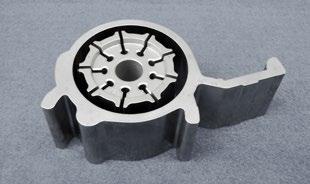
Cover image
Sumitomo Electric Industries’ JPMA award winning rotor and slide improves the efficiency of large engines (Courtesy JPMA)

Our materials, your life
Rio Tinto Metal Powders (RTMP) is committed to finding better ways to provide the materials the world needs now and in the future.
As a producer of iron and steel powders at our plant located in Quebec, Canada, RTMP is a key supplier to the automotive industry, which is undergoing a transition towards electrification. RTMP is contributing to the development of new Soft Magnetic Composite (SMC) materials for electric components, from pump assemblies to small electric motors in e-bikes and EV’s to support the energy transition. Together, we can create a better life for the generations to come.
Find out more at www.riotinto.com
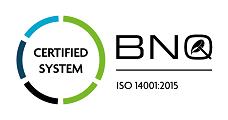

Metal Powders
www.qmp-powders.com


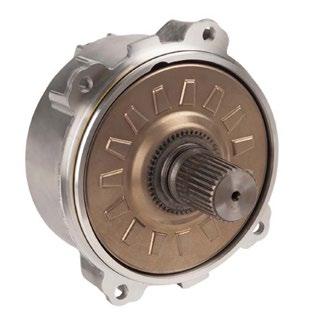
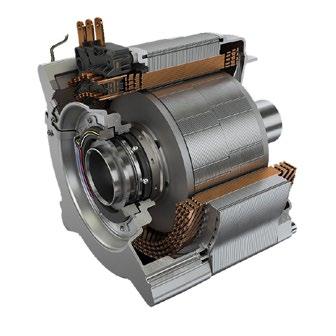
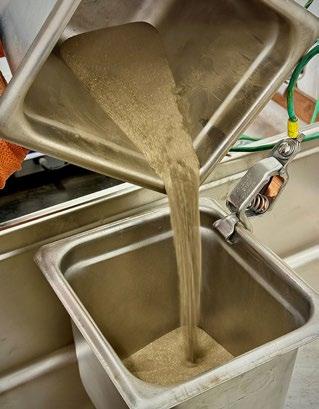

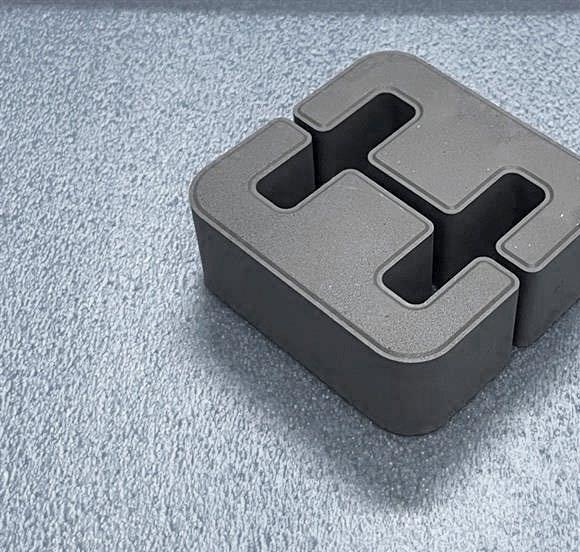
53 From powder modification to rejuvenation: Fluidised Bed Reactors in metal powder production and Additive Manufacturing
Fluidised Bed Reactors (FDRs) will be new to many in the Powder Metallurgy and Additive Manufacturing industries. The technology offers a host of operational features that are useful in both metal powder production and in instances where batches of powder may need to be ‘rejuvenated’, or brought back into specification.
In this article, Bill Hopkins, Managing Director, Phoenix Scientific Industries (PSI) Limited, introduces the concept of FBRs and considers current and future applications for metal powder producers and users.
63 Retech: Enabling the atomisation of reactive and refractory alloys at substantially higher levels of productivity and lower cost
Retech, a division of SECO/WARWICK Group, has developed a method for the gas atomisation of a wide variety of reactive and refractory alloys, amorphous metals, and superalloys. Called Plasma Gas Atomising (PGA), this technology, states the company, promises a significant increase in production rates.
In this article, Retech’s Dr Aamir Abid explores the technology and its advantages for metal powder producers and considers its potential to substantially reduce the cost of metal powders for Powder Metallurgy and Additive Manufacturing applications.
Specialty materials that shape the future
At Kymera, we masterfully blend advanced technology with time-tested metallurgical principles, unlocking a realm of limitless possibilities. Our powders have a powerful influence on both microscopic and large-scale industrial applications, driving innovation and excellence across a wide range of industries.
We’re a leading global manufacturer of engineered materials and surface technologies, specializing in advanced solutions that have a positive impact on the way we live and work.
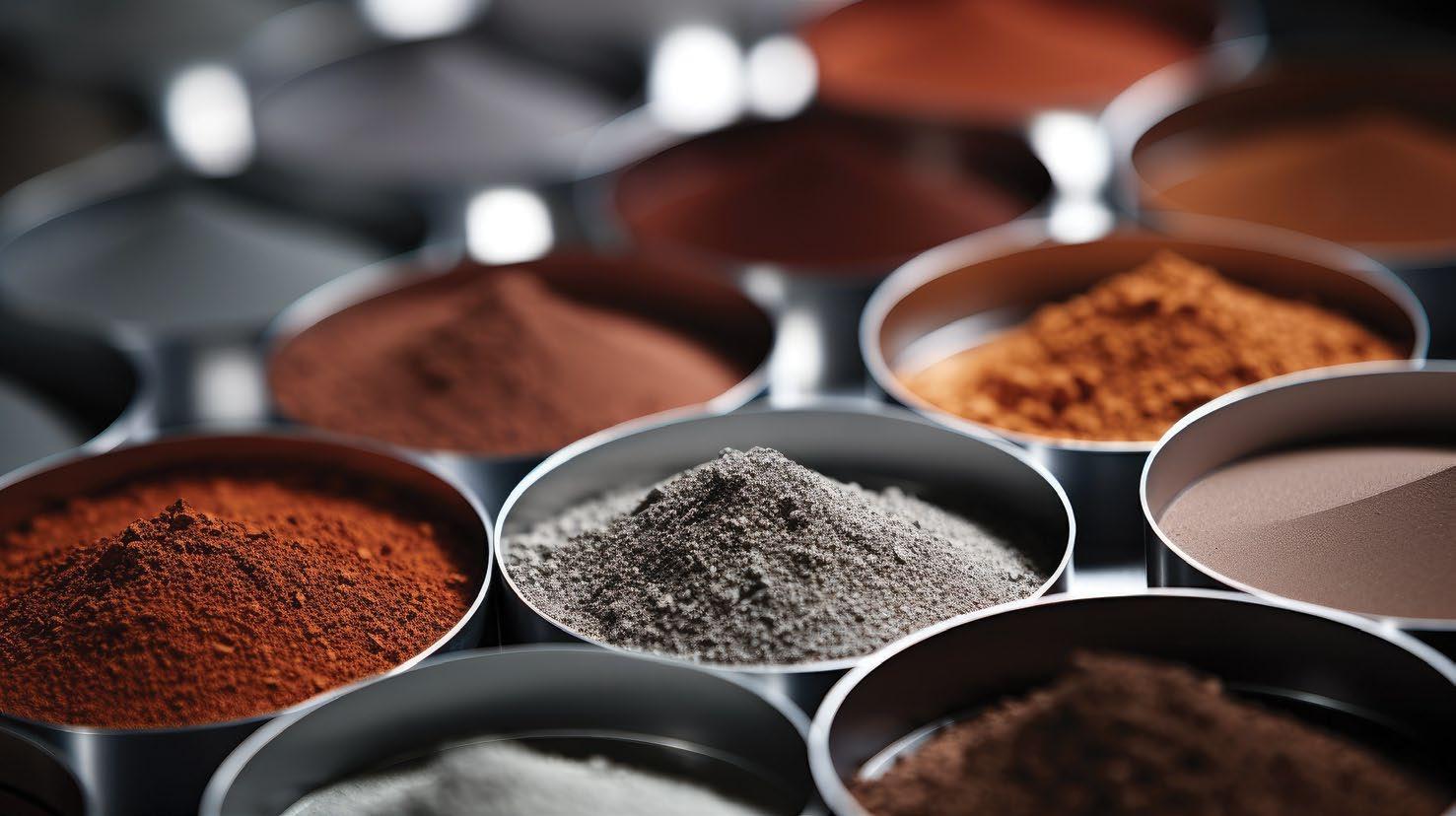
Revolutionizing
Industries with Cutting-Edge Technological Solutions – Unleashing the Power of Material Innovation
73 Sustainability in Powder Metallurgy: Highlights from the 41 st Hagen Symposium
The 41 st Hagen Symposium on Powder Metallurgy, organised by Germany’s Fachverband Pulvermetallurgie (FPM), took place in Hagen from November 30 to December 1, 2023. The event had a focus on sustainability and the changes needed for the PM industry to become greener through improved efficiency, reduced energy consumption and optimised raw materials usage. Dr Georg Schlieper reports on selected presentations that highlight some of the sustainability challenges being met by the industry. He also reports on the 2023 Skaupy Prize Lecture, given by Ruhr University Bochum’s Prof Werner Theisen. >>>
Regular features...
09 Industry news
92 Advertisers’ index & buyer’s guide
85 Innovations from Japan’s Powder Metallurgy industry: award winners highlight novel automotive and healthcare applications
In 2023, the Japan Powder Metallurgy Association (JPMA) celebrated fortyfive years of its PM component awards competition. This year’s competition recognises achievements within the Powder Metallurgy industry across three categories: New Products (New Design/ Materials/Process Development), New Powders and Equipment Development. The organisers also recognised products not covered by the categories with the awarding of the Effort Prize. This year’s innovations ranged from reactor cores for electric vehicles to aluminium bronze powder. >>>
Our advertisers’ index and buyer’s guide serves as a convenient guide to suppliers across the PM supply chain.
In the digital edition of PM Review magazine, available at www.pm-review.com, simply click on a company name to view its advert, or on the company’s weblink to go directly to its website.
94 Industry events >>>


TO OUR WEEKLY NEWSLETTER

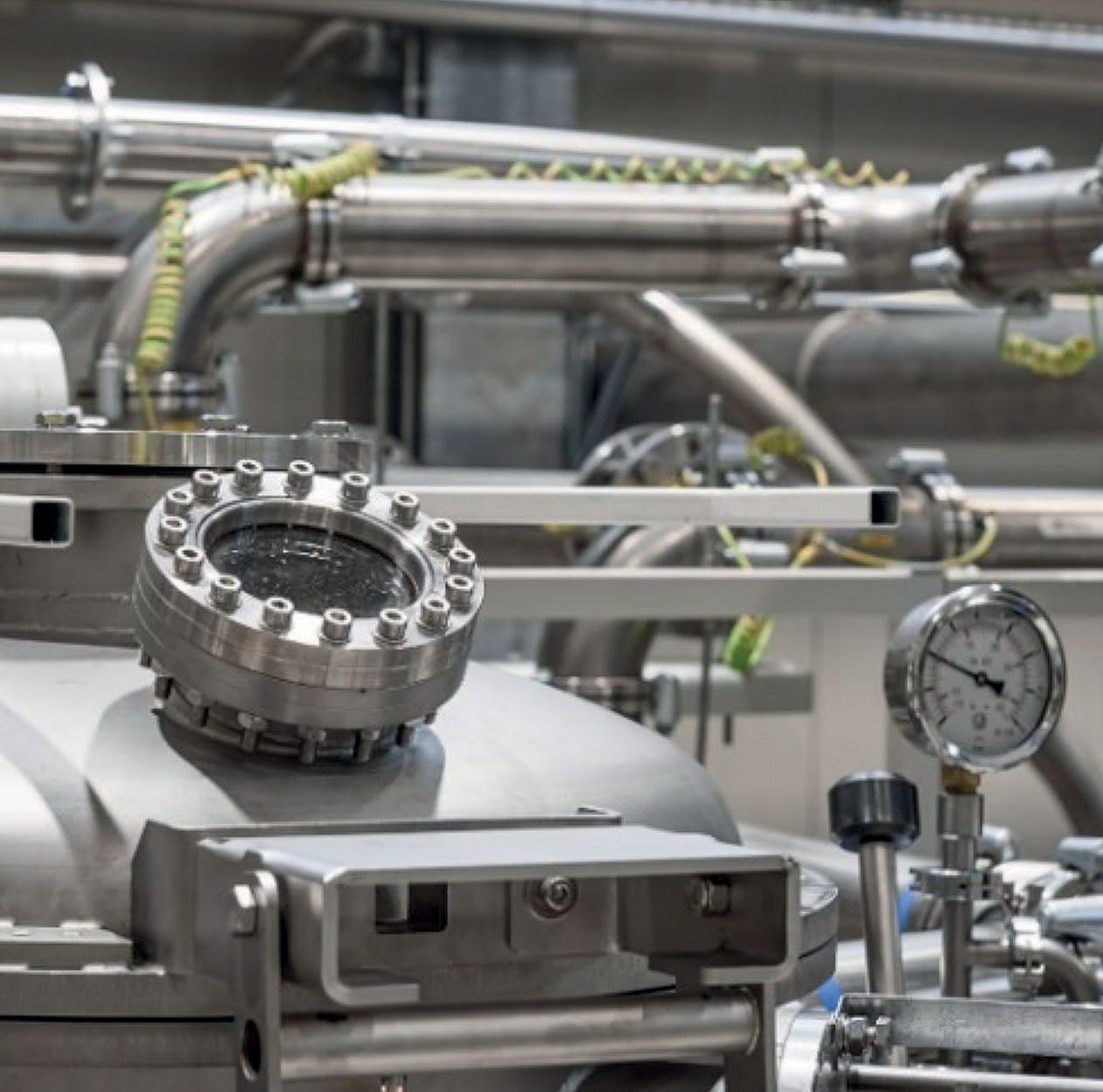
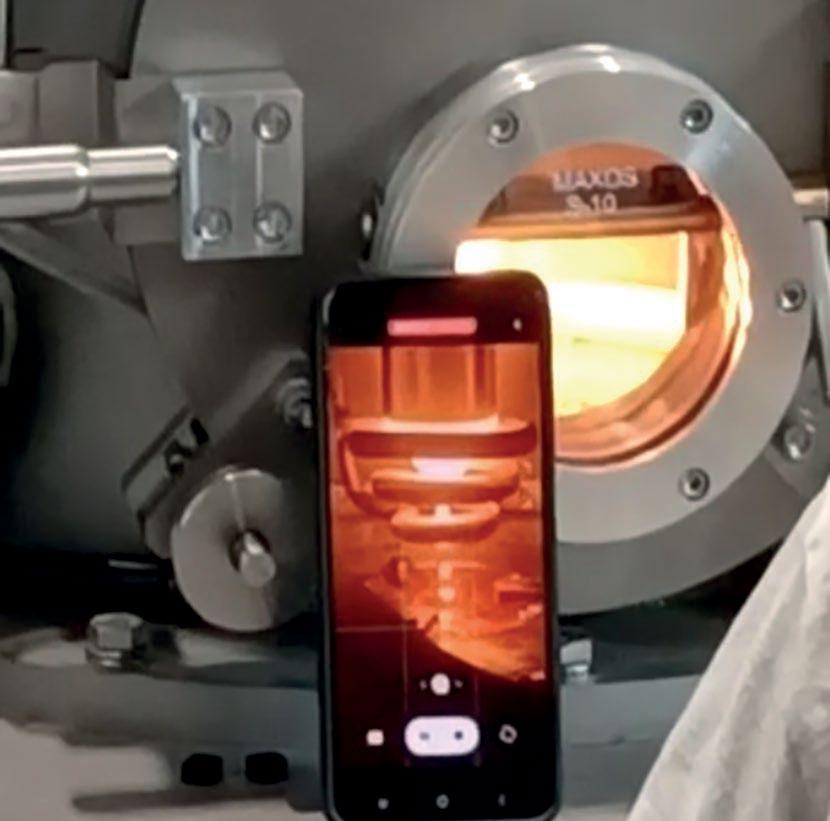

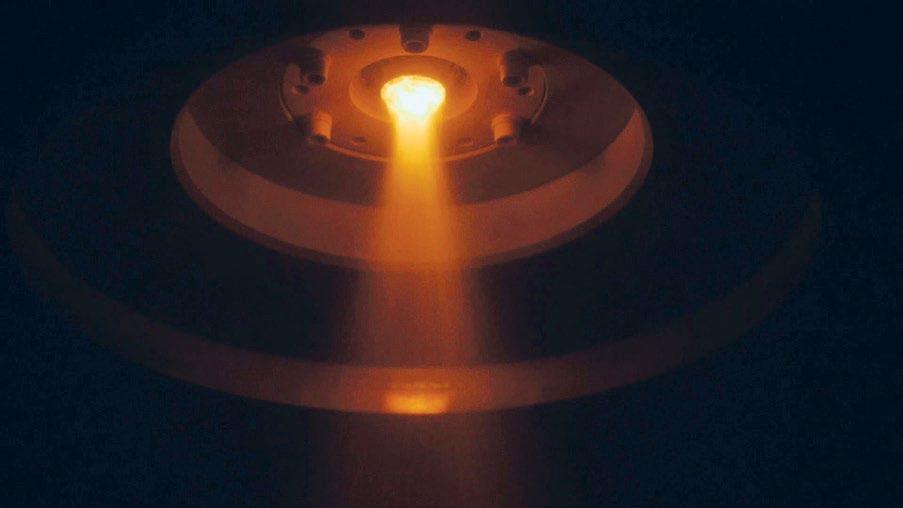
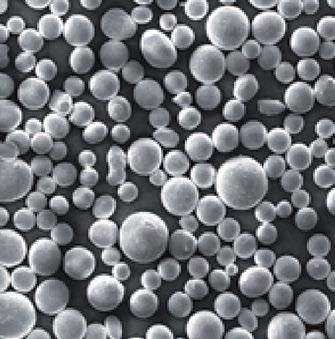








Phoenix Sintered Metals acquires Catalus Corporation
Phoenix Sintered Metals, LLC, headquartered in Brockway, Pennsylvania, USA, has announced it acquired the assets of Catalus Corporation, effective February 1, 2024. The company stated it will continue operations at Catalus Corporation’s Galeton, Pennsylvania, facility under the new name Phoenix Sintered Metals Galeton, LLC.
Blaine Stebik, who is currently serving as Phoenix’s Chief Technology Officer, will also take on the role of General Manager at the Galeton facility. Phoenix Sintered Metals will lead both facilities.
Pete Varischetti, president of Phoenix Sintered Metals, stated,
“The combining of knowledge and resources of these previously separate entities will open up new opportunities and solutions to our current and new customers in a variety of markets.”
Phoenix Sintered Metals, like Catalus, is a family-owned business. Originally founded as St. Marys Carbon in 1939, the company ventured into Powder Metallurgy in the early 1950s, when it began producing powder metal components. SMC Powder Metallurgy was established as a division of the carbon business, later changing its name to Catalus Corporation in 2018.
www.phoenixsintered.com
cataluscorp.com
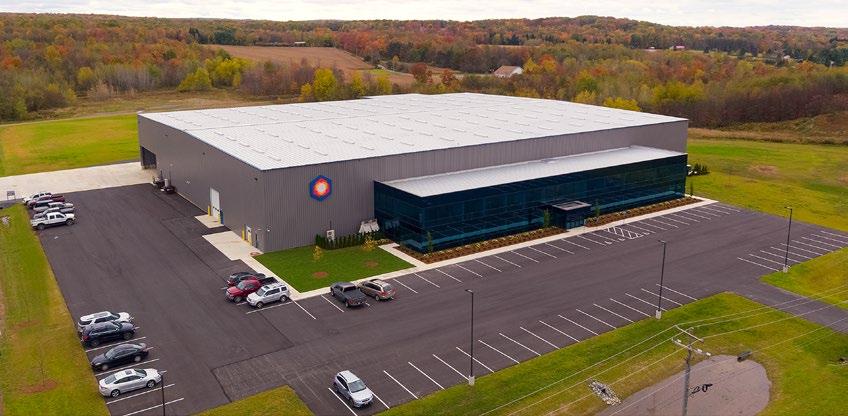
Acerinox to invest €67 million in VDM Metals, boosting powder production
Acerinox Group, Madrid, Spain, has announced plans to invest €67 million in VDM Metals, its high-performance alloys (HPA) division. The funds will be allocated to German facilities in Unna, Altena and Werdohl, with three new remelting units and a second powder atomisation plant being built at the Unna site.
VDM Metals produces nickel alloys and high-alloy special stainless steels in sheet, strip, bar, wire and powder form. The investment will enable the company to expand production capacity across its range of products.
VDM has represented Acerinox’s HPA division since March 2020. In 2022, VDM Metals achieved a turnover of €1.262 billion and a record EBITDA of €125 million; finished goods production amounted to 44,000 tonnes. VDM Metals employs over 2,000 people worldwide, around 1,600 of whom work at the Unna, Altena and Werdohl sites.
www.vdm-metals.com
acerinox.com

Aubert & Duval invests €75 million in new SMS closed-die press
Aubert & Duval has signed an agreement with SMS Group to purchase a new 6,000 ton hydraulic press, in a deal worth a total of €75 million. To be installed at the company’s Pamiers site in Ariège, France, the modular structure of the press means it can accommo -

The new press from SMS Group will have a maximum press force of 60 MN (Courtesy SMS Group)
date an isothermal forging module, enabling the manufacture of high-performance Powder Metallurgy components for aircraft and engines.
The new four-column, hydraulic closed-die forging press is scheduled to be operational in 2027 and will replace one of the company’s older Schloemann presses originally supplied by SMS in 1932. The new press will offer substantial improvements for all the production lines currently operated by the Schloemann press and will contribute to the company’s decarbonisation objectives thanks to its much-improved energy efficiency.
“This major investment paves the way for Aubert & Duval’s medium and long-term future,” stated
Bruno Durand, Chairman and CEO of Aubert & Duval. “In serving our customers, our primary goal is to modernise and drastically improve our industrial performance and
Bodycote completes Lake City takeover, ends Stack deal, announces £60M share buyback programme
Bodycote plc, headquartered in Macclesfield, Cheshire, UK, has, completed its previously announced acquisition of Lake City Heat Treating (HT), Warsaw, Indiana, USA. The company also announced that it had ended the agreement to acquire Stack Metallurgical Group, based in Albany, Oregon, due to a failure to satisfy all closing conditions to the agreement.
Lake City HT is a prominent Hot Isostatic Pressing (HIP) and vacuum heat treatment business, primarily supplying the orthopaedic implant market as well as civil aerospace. The move is expected to significantly increase Bodycote’s customer reach in the medical market.
The consideration paid on closing for Lake City HT was $66.5 million
on a cash and debt-free basis. After expected tax benefits worth approximately $7.5 million, the net price paid was $59 million. Lake City HT is forecasted to have achieved 2023 full-year revenues of around $14 million, with operating profit expected to be around $6 million. The business achieved 30% revenue growth in 2023 and is expected to continue to deliver good progress.
“Completion of the acquisition of Lake City HT is an exciting further step in our strategy to grow our Specialist Technologies businesses and footprint,” stated Stephen Harris, Group Chief Executive of Bodycote plc. “This acquisition is an excellent fit, enhances our profitability and earnings per share in addition to allowing us to capitalise on the
capability. Yet to make Aubert & Duval the metallurgy leader in Europe, we need to look even further ahead and anticipate what technical developments are to come: This is also the task of this new instrument. We would like to thank our shareholders who, by making this investment, demonstrate the trust and ambition they have in the company and its teams.”
Thomas Winterfeldt, Executive Vice President Forging Plants, SMS group, added, “With this new forging technology, Aubert & Duval can process completely new material combinations and thus make a significant contribution to achieving greater drive efficiency for aerospace applications. As a longstanding partner of Aubert & Duval, we are proud, thanks to this new press, to work with them on jointly achieving the company’s goals of becoming one of Europe’s leading metallurgical companies, especially in the aerospace sector.”
www.aubertduval.com
www.sms-group.com
appealing structural growth opportunities in medical and aerospace markets.”
£60 million share buyback programme
Bodycote also reported that, in light of the lower-than-anticipated acquisition spend, the group’s strong balance sheet and balanced approach to capital allocation, it has announced the intention to launch a share buyback programme of up to £60 million. The share buyback programme is expected to commence on March 18, 2024.
“The share buyback programme represents an attractive use of our capital,” Harris continued. “It highlights the strength of the group’s balance sheet, together with our commitment to a balanced and disciplined approach to capital allocation to drive growth and shareholder value.”
www.lakecityheattreating.com
www.bodycote.com
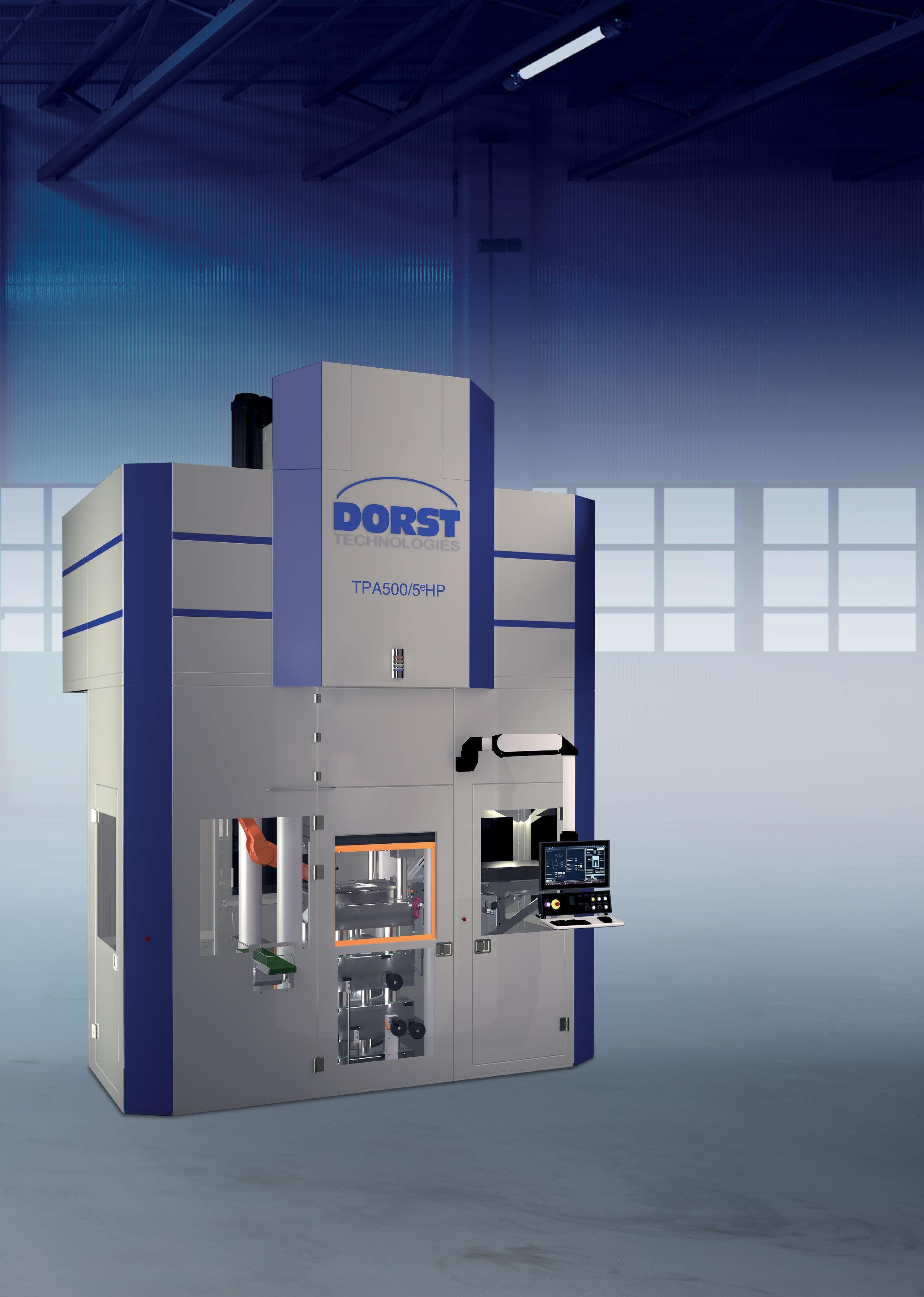

Sandvik AB reports another successful year in 2023 financial results
Sandvik AB, headquartered in Stockholm, Sweden, has released its full-year financial results for 2023, reporting revenues up by 13% to SEK 126,503 million, compared to SEK 112,332 million in 2022. Total order intake saw a growth of 5% to SEK 125,011 million, up from SEK 119,196 million in the previous year.
Adjusted EBITA increased by 12% year-on-year to SEK 25,240 million, with an adjusted EBITA margin of 20.0%. Profit for the full year amounted to SEK 15,301 million, up from SEK 12,854 million in 2022.
“2023 was another successful year in our transformation as a company,” stated Stefan Widing, Sandvik President and CEO. “We continued to make progress in our strategy execution and took important investment decisions to strengthen Sandvik for the future. With the seven acquisitions made this year, we have further enhanced Sandvik’s presence in the customer value chain and improved our position in areas where we see long-term growth opportunities. Great innovations have also been introduced, some being the first of its kind in the industries we serve.”
During the year, seven acquisitions were completed. Sandvik
acquired 95% of the shares in PMT Premier Machine Tools Limited. In addition, Sandvik acquired Polymathian, Norgalv and the remaining 70% of MCB Services and Minerals (MCB). MCB and Deswik, which Sandvik acquired in April 2022, have previously operated on a joint venture basis and Deswik acquired 30% of the shares in 2019. In August, the acquisition of Postability was completed. In November Sandvik acquired esco GmbH engineering solutions consulting and Buffalo Tungsten, Inc, in December.
“We made good progress during 2023 both operationally and financially. We reported record results and a strong cash conversion, despite challenging macro conditions. At the same time, we had a relentless focus on executing on our strategy and strengthened our position to capture growth opportunities ahead. These strategic accomplishments have been very important for the future success of the company and value creation for all Sandvik stakeholders. This is something to be proud of, and I want to close 2023 by extending a warm thanks to all Sandvik employees for another strong year,” Widing concluded.
Gasbarre move to larger St Marys facility underway
Gasbarre has reported that the previously-announced relocation of its St Marys, Pennsylvania, USA, facility is now well underway. The move will take the company to a 14,000 m 2 facility - around triple the size of its current location.
Gasbarre anticipates the upgraded facilities and state-of-the-art equipment will streamline processes and enhance productivity for its growing customer base. The faster turnaround times and expanded services
are also expected to position the company to better serve its local and international customers.
Gasbarre manufactures a wide range of powder compaction presses, including mechanical, hydraulic, high-speed, isostatic, and electric press types. The company also has an extensive line of industrial thermal processing systems, including continuous atmosphere to batch atmosphere and continuous
Sandvik Manufacturing and Machining Solutions
Sandvik Manufacturing and Machining Solutions saw order intake increase by 6% to SEK 49,247 million and a 7% increase in revenue to SEK 49,340 million. The company reported a strong demand in aerospace and positive contribution from automotive, whereas general engineering was stable. While cutting tools divisions and the software business grew by mid-and high-single digits, respectively, powder declined year-on-year.
Sandvik’s acquisition of Buffalo Tungsten, Inc., a US-based manufacturer of tungsten metal powder and tungsten carbide powder primarily operating in North America, is expected to further expand Sandvik’s presence in the North American market and strengthen its regional capabilities in the component manufacturing value chain.
Sandvik Mining and Rock Solutions
Sandvik Mining and Rock Solutions reported that a solid demand for automation solutions translated to a record order for surface drill rigs, valued at SEK 248 million. The division saw order intake decline by 4%. Major orders amounted to SEK 1,150 million. Equipment order intake declined by 10% and was flat for aftermarket.
www.home.sandvik
vacuum to batch vacuum furnaces. Additional product lines include precision tooling, industrial automation, and contract manufacturing.
“Our commitment to excellence and customer satisfaction remains unwavering, ensuring that our clients find the perfect machinery tailored to their specific manufacturing processes,” Gasbarre posted in an update on the move. “As we transition to this larger space, we’re excited about the possibilities it brings for innovation, growth, and continued success.”
www.gasbarre.com
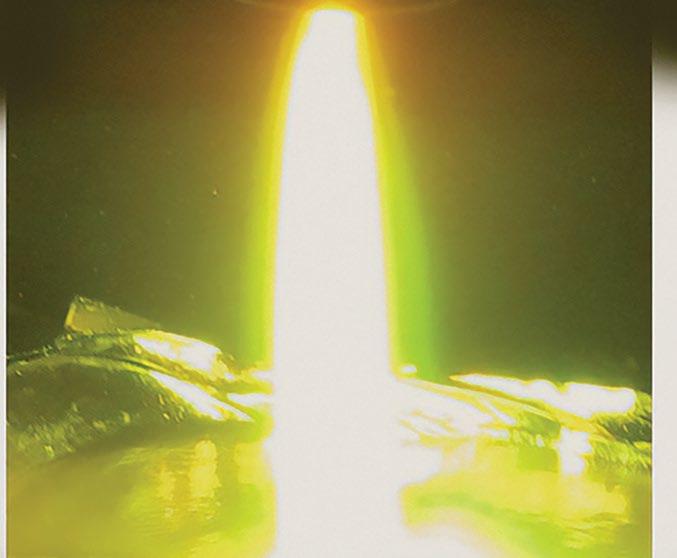

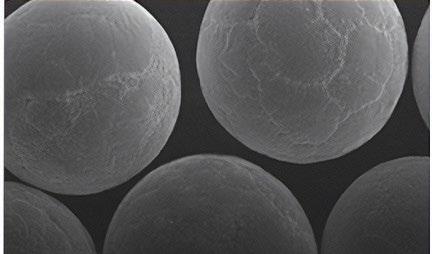
ATOMIZE TITANIUM AT UP TO 1500 KG/HOUR!
Retech’s new Plasma Gas Atomizer will atomize reactive and refractory metals faster, more economically, and better than ever.
Our Plasma Atomization technology not only atomizes reactive and refractory metals at unprecedented rates, but includes features that eliminate many other obstacles to cost effective atomization of titanium and other refractory metals.
• Highest Throughput in the Industry – Produces powders far faster than any other available technology
• Simplified Feedstock Preparation – Accepts elemental feedstock, scrap, sponge, recycled materials and other low-cost feed
• Retech’s Proprietary Hearth Melting Technology – Production of ultra-high purity product
• Versatile Atomization of Multiple Alloys – Suitable for any alloy that can be plasma melted
PMG celebrates completion of new production facility at its Yangzhou China plant
PMG, headquartered in Fussen, Germany, has celebrated the completion of a new production facility at the PMG Leader plant in Yangzhou, China. Representatives from PMG included Friedrich Erfurth, chairman of the board; Jiabin Wang, CEO of PMG China; Zhixian Qian, CFO of PMG China; and Lian Ge, GM of PMG Leader. Government officials also attended the opening, along with other PMG employees and their families.
“We are very proud of the development of our two locations in China and we are aware that the very good site conditions in Yangzhou and Shanghai, as well as the great team on site, make a significant contribution to our success,” stated Erfurth.
“With today’s completion of our new production building, we are celebrating another important milestone in our company’s history: a further expansion of our production capacity in China. An important brick to meet the increasing demand of our customers, to make our contribution to growth markets such as e-mobility and to be able to offer our technology – Powder Metallurgy with all its advantages – to other applications outside automotive as well. Thanks to everyone involved.”
PMG acquired Yangzhou Leader Powder Metallurgy Co, Ltd, a specialist in automotive shock absorber components, in 2022.
www.pmgsinter.com

Globus Metal Powders launched following acquisition of Liberty Powder Metals
Liberty Powder Metals Ltd, has been acquired by a group of private investors and, with immediate effect, will be known as Globus Metal Powders Ltd. The company, based in Middlesbrough, UK, produces a range of metal powders for Additive Manufacturing and Powder Metallurgy technologies.
“Globus Metal Powders and our team of professionals will continue to drive excellence and growth, we are very proud of the successes achieved and are excited about the new opportunities the acquisition will offer in terms of growth, productivity, and profitability,” the company stated.
www.globusmetalpowders.com
TriAlCo and Fehrmann partner to produce AlMgty aluminium alloy in North America
TriAlCo, a leading North American aluminium manufacturer based in Chicago Heights, Illinois, USA, and aluminium alloy developer Fehrmann, headquartered in Hamburg, Germany, have entered into a partnership following the signing of a Know-how and Licence Agreement.
Under the agreement, TriAlCo is now licensed to market and produce Fehrmann’s AlMgty aluminium alloy. AlMgty is noted for its strength and elongation performance. It is corrosionresistant, can be anodised in various colours and can reduce weight by 20-30% without sacrificing strength, making it well-suited to industries looking for lighter and more efficient materials.
“AlMgty is not just a product,” stated Jay Armstrong. “It’s a catalyst for change in the aluminium industry. Its unique blend of strength and ductility, sustainability, and efficiency sets a new standard for what our clients can expect.”
Henning Fehrmann added, “Our collaboration with TriAlCo is a testament to our commitment to innovation and sustainability. AlMgty is the result of years of research and development, and we’re excited to see its impact across North America. It is a milestone for our internationalisation.”
www.trialco.net
www.fehrmann.tech
Submitting news...
Submitting news to PM Review is free of charge.
Contact Paul Whittaker: paul@inovar-communications.com
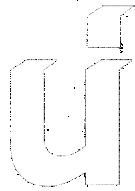
A SOLID LINE OF THINKING: SINTERING WITH A SOLID INFILTRANT
SOLIDIFY YOUR CASE FOR ULTRA INFILTRANT
There’s a solid line of thinking in the copper infiltration of ferrous PM parts and it can change the way you do business. Ultra Infiltrant is a wrought, homogeneous copper-based alloy that offers significant benefits over powder form copper infiltrants. Benefits like less waste, improved productivity, reduced erosion, no adherent residue and increased strength and hardness values. Benefits that affect your production line and ultimately your bottom line. Ultra Infiltrant is available in single and multi-turn wire rings, straight-length slugs, or other configurations to accommodate virtually any automated process. Ultra Infiltrant was designed for copper infiltration of ferrous PM parts in today’s cost competitive manufacturing environments, where the handling of fragile green infiltrant slugs is difficult and can lead to excessive waste. Additionally, it performs well in nitrogen-hydrogen based atmospheres so widely used in sintering operations globally.
SOLIDIFY YOUR INFILTRATION PROCESS FOR ULTRA INFILTRANT
Less waste, easier production, superior product: what more is there? Ultra Infiltrant revolutionizes the PM industry by eliminating all the negatives associated with infiltrant powders and improving on the process as a whole. The net result? How about overwhelmed customers and a boost to your bottom line? That’s what Ultra Infiltrant offers, so put it to work and get started on a solid line of thinking.


GKN Powder Metallurgy reports growth and secures profitable EV business
Dowlais Group plc – the parent company of GKN Powder Metallurgy, GKN Automotive and GKN Hydrogen, formed following the demerger of these companies from Melrose Industries PLC in April 2023 – has issued a trading update for the four-month period ending October 31, 2023.
“Following a strong first half, we have continued to execute well on our strategic priorities and leverage the strength of our operating businesses,” stated Liam Butterworth, CEO of Dowlais. “We have delivered strong growth and continued to expand margins as well as fully absorbing the impact of the UAW strike. Thanks to the outstanding quality of our marketleading businesses, we remain confident of delivering sector leading financial performance, regardless of the speed of electrification transition.”
The group reported profitable growth for the period, with adjusted revenues of £1.8 billion delivering 4.7% growth compared to the same period in the prior year. Adjusted operating margin of 6.8% was recorded, excluding central costs, representing an increase on the equivalent prior year of 100 bps and of 90 bps versus H1 2023.
It was stated that the group is continuing to generate healthy free cashflow, and remains on track to reduce net debt at year-end, whilst continuing to invest in organic growth, expanding its best-costcountry manufacturing footprint and executing ongoing restructuring programmes.
Impact of UAW strike action in North America
The full-year financial impact of the UAW strike action on the group is expected to be in the range of £30-45 million of adjusted revenue and £10-15 million of adjusted operating profit. Despite this, the group’s ability to meet its full year expectations were said to remain unaffected due to strong operational execution within the businesses. This is based on the assumption that union members will ratify the proposed terms and production at the impacted customer plants will smoothly ramp up.
GKN Powder Metallurgy
GKN Powder Metallurgy recorded a growth of 4.2% in adjusted revenues during the period. Its adjusted operating margins of 9.0% matched the previous year’s equivalent period and the first half of the year. Powder Metallurgy has continued to expand its Electric Vehicle (EV) portfolio, securing profitable new business in
the period that sets up the company for medium-term growth. In October, it announced commercial agreements for the supply of magnets with Schaeffler, which were outlined in the interim results. This represents a significant milestone for future growth opportunities.
GKN Automotive
During this period, GKN Automotive’s adjusted revenues increased by 4.8%, leading to adjusted operating margins of 7.6%. This is an increase of 120 bps from the equivalent prior year period and 110 bps compared to H1 2023. The marketleading Driveline and ePowertrain portfolios in automotive both experienced growth slightly exceeding the market. New business bookings remain strong, with the business already setting a new full-year lifetime booking record of £5.4 billion by the end of October. Importantly, the balanced nature of these bookings is said to demonstrate the business’ capability to achieve profitable growth, irrespective of vehicle electrification rates.
www.gknpm.com
www.dowlais.com
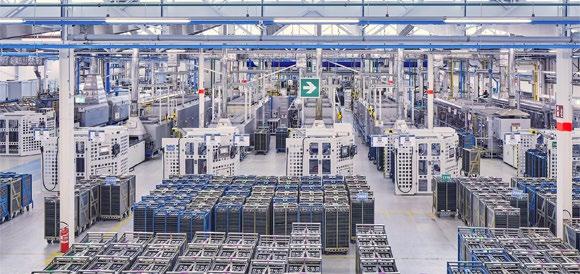
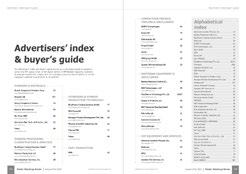

Kymera acquires Metallisation to expand thermal spray solutions
Kymera International, based in Raleigh, North Carolina, USA, has acquired Metallisation Limited, a thermal spray and automation technology company headquartered in Dudley, UK. Metallisation has been introducing metal spray equipment and consumables to the market since 1922.
The acquisition is expected to benefit both Metallisation and Kymera, with the companies combining their relative strengths to become a global leader in thermal spray applications and solutions. It was added that Metallisation will contribute greatly to the continued growth of Kymera’s Surface Technologies business and its ability to deliver high-value, turnkey engineered solutions to global Tier 1 and OEM customers, specifically in the UK and mainland Europe.

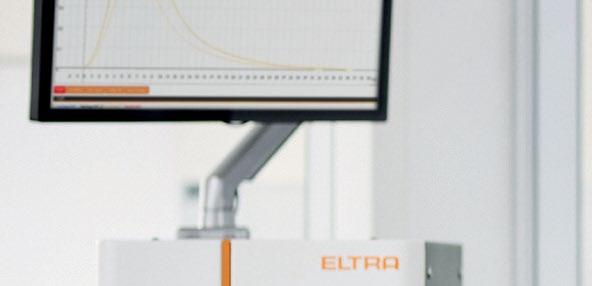

“The acquisition of Metallisation aligns with our strategic initiatives and strengthens Kymera’s position in the thermal spray sector,” commented Barton White, CEO of Kymera. “We will now be able to provide our aerospace customers with a vertically integrated offering that includes equipment, materials and application services. This complete package will undoubtedly benefit the growth and adaptation of the company’s HaloJet™ product offering.”
Adam Shebitz, a Partner at Palladium Equity Partners, added, “The acquisition of Metallisation has compelling industrial as well as strategic logic. This investment represents an exciting opportunity to create value through vertically



integrating surface technology materials and equipment with Kymera’s existing services business.”
This acquisition also expands Metallisation’s product offerings, enhancing its market positioning and growth opportunities.
Stuart Milton, Managing Director of Metallisation, shared, “We are extremely proud of Metallisation’s history and long-standing commitment to excellence in quality, customer service and engineering support. We have no doubt that under Kymera’s leadership, we will be able to not only continue offering great products and service to our customers, but also elevate our offerings and unlock significant growth opportunities. We are excited to be joining a team dedicated to innovation and collaboration.”
www.kymerainternational.com
www.metallisation.com


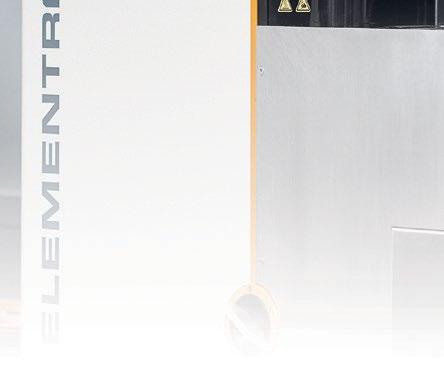
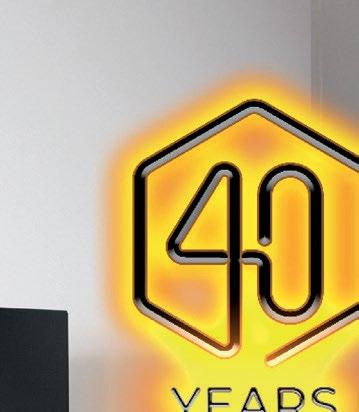




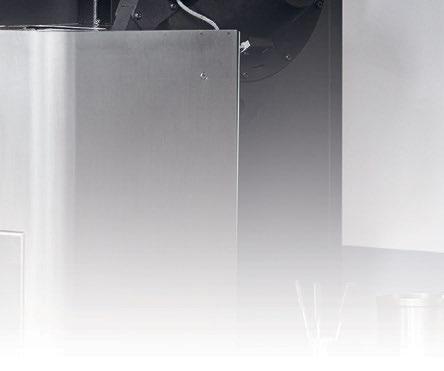


United States Metal Powders appoints Eric Degenfelder president
United States Metal Powders, Inc (USMP), Palmerton, Pennsylvania, USA, has announced the appointment of Eric Degenfelder as its president, effective February 20, 2024.
USMP, founded in 1918, is a global leader in the production of aluminium powder with two aluminium powder production facilities: AMPAL, Inc, also in Palmerton,

Eric Degenfelder has been named United States Metal Powders President (Courtesy LinkedIn)
and Poudres Hermillon, SARL (PH), in Hermillon, France. AMPAL moved its production facility from Flemington, New Jersey, to its current location in 1982 and has been operating in Palmerton for the last forty-two years, growing to be the largest US producer of aluminium powder. The company’s products are sold globally and used in a wide variety of end markets including aerospace & defence, automotive, industrial, consumer, building & construction and energy.
“We are very excited to have Eric join our team and welcome him to USMP,” said Louise Ramsey Thomas, board member and retiring president. “Eric brings a wealth of leadership experience in the specialty materials arena, and a strong track record of enhancing growth through innovation, customer centricity and production excellence. We have great confidence in the USMP leadership team now in place and our ability to continue to deliver in a differentiated way for our customers. Over the
6K Additive’s titanium powder certified as 95% recycled content
6K Additive, a division of 6K Inc based in Andover, Massachusetts, USA, has received independent certification from Scientific Certification Systems (SCS) Global Services. This third-party auditing and certification organisation has confirmed that
6K Additive’s Ti-6Al-4V powder has achieved a minimum of 95% postconsumer recycled titanium content.
The SCS Recycled Content Certification assesses products made from pre-consumer or post-consumer material that has been diverted from the waste stream. This certification quantifies the percentage of recycled content to ensure accurate claims in the marketplace.
“We are thrilled that our commitment to sustainability has been
recognised by a leading organisation such as SCS Global Services through their certification process. We’re seeing a big increase from customers asking for not only data, but thirdparty validation from their suppliers regarding sustainability and having a recognised certification from a global sustainability organisation like SCS is exactly the type of confirmation they are seeking,” shared Frank Roberts, president of 6K Additive. “Our proprietary technology for processing titanium and refractory metals at scale is a benefit to our customers and the environment by recycling scrap streams back into premium powders.”
6K Additive is a global producer of AM powder derived from sustain -
last year, this team has also been enhanced with the additions of Danny Perez as General Manager of AMPAL, and Jean-René Cavaille as General Manager of PH.”
Degenfelder shared, “I am excited to join USMP and lead us into the next phase of growth. I have been highly impressed by the rest of the leadership team at AMPAL and PH, and was attracted to USMP’s strong market position, customer centric philosophy and the orientation toward continued investment and growth enabled by its fortress balance sheet and low financial risk profile. Rest assured we will continue our strong heritage of customer focus and quality in the years ahead.”
Degenfelder has leadership and cross-functional experience in specialty materials. He was CEO of U-C Coatings, headquartered in Buffalo, New York, for the past four years, and prior to that held a series of functional and geographic roles of increasing responsibility spanning product management, sales, marketing and strategy for Axalta Coating Systems, DuPont, Air Products and Millennium Chemicals.
www.usmetalpowders.com
able sources, offering a wide range of premium powders, including nickel, titanium, copper, stainless steel, aluminium alloys, and refractory metals such as tungsten, niobium, and rhenium. The company utilises its UniMelt® microwave plasma process for large-scale production, which enables precise spheroidisation of metal powders, controls the chemistry and porosity of the final product, and ensures zero contamination with high throughput production.
In a study released last year, Foresight Management compared the environmental impact of 6K’s UniMelt microwave plasma technology to conventional atomisation technologies. The results demonstrated a 90% reduction in energy usage and carbon emissions for its nickel-based alloys, and a 75% reduction for its titanium alloys.
www.6kinc.com

KBM’s RocketPowder GRCop-42 qualified
for Velo3D’s Sapphire and now available globally
KBM Advanced Materials, LLC, Fairfield, Ohio, USA, has reported that its RocketPowder GRCop-42 alloy powder has been qualified to run on Velo3D’s Sapphire family of metal Additive Manufacturing machines. Furthermore, KBM stated that parts produced using the company’s RocketPowder were found to have superior thermal conductivity to those additively manufactured in GRCop-42 powders from alternative sources.
GRCop-42 is a copper, niobium and chromium alloy originally developed and produced by NASA. The material is well-suited for space and hypersonic applications due to its high heat transfer and increased strength versus pure copper. Having noticed
an uptick in requests for GRCop-42, KBM invested in developing its own exclusive supply chain for this hardto-source speciality powder.
RocketPowder GRCop-42 reportedly took over nine months to perfect, becoming KBM’s first in-house powder offering.
“We formed a unique technical and production partnership to develop this specialty alloy,” stated Kevin Kemper, KBM’s CEO. “Meeting specifications was a challenge, but we were confident we had a repeatable and reliable process. Having our GRCop-42 added to Velo3D’s list of qualified materials ensures all our customers that we are producing the highest quality powder for their production needs.”
Velo3D was one of the first Additive Manufacturing companies to work with GRCop-42. The company noticed that this material took more energy to melt, with heat dissipating faster and, therefore, undertook efforts to rework process parameters to achieve maximum material properties. As a result of this extensive process, Velo3D has only qualified three companies from which to source this material, with KBM’s RocketPowder GRCop-42 reputedly standing out for its thermal conductivity after Hot Isostatic Pressing (HIP).
KBM’s RocketPowder GRCop-42 is available for distribution to customers across the world. For US customers, all final processing takes place in-house, ensuring a traceable, domestic, supply chain of GRCop-42.
www.kbmadvanced.com
www.velo3d.com



Wallwork invests in second Hot Isostatic Press from Quintus ahead of schedule
Wallwork Group, headquartered in Bury, Greater Manchester, UK, has brought forward plans by two years with the order for a second Hot Isostatic Press from Quintus Technologies, based in Västerås, Sweden. Quintus completed the commissioning of its first HIP in Q3 2023, following the opening of its £10 million Wallwork HIP Centre.
“Demand from customers for processing components in our first Hot Isostatic Press has been astonishing,” explained Simeon Collins, Group Director. “It is prudent to bring forward planned investment for the next HIP, knowing it will take
most of 2024 to build and install. We hope to have it up and running by early 2025. Deciding to prepare pits for expansion during the first installation has proved right.”
David Loughlin, Business Manager, Wallwork HIP Centre, added, “We expected strong demand from UK castings, 3D printing, powder fabrication, and near-netshape manufacturers. Especially as the UK is currently under-served with Hot Isostatic Pressing capacity. More surprising is the amount of international interest we are seeing, coming from Europe but also as far as India.”
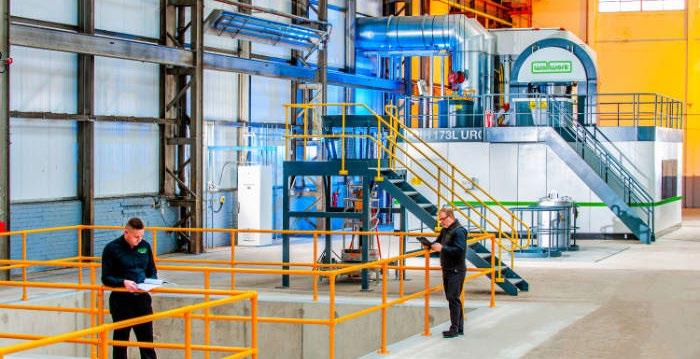
Taiyo Nippon Sanso to market
Constellium’s Aheadd aluminium powders in Japan
Taiyo Nippon Sanso Corporation, Ltd. (TNSC), an industrial gas company owned by Nippon Sanso Holdings Group, based in Shinagawa-ku, Tokyo, Japan, has acquired the sales rights for Constellium’s Aheadd Additive Manufacturing powders in Japan. TNSC already offers a range of products and services for the Additive Manufacturing industry, and will market Aheadd’s aluminium powders to a wide range of sectors,
including aerospace, automotive and semiconductors.
Aheadd powders are specially designed for Laser Beam Powder Bed Fusion (PBF-LB) Additive Manufacturing. Aheadd CP1 is an aluminium-iron-zirconium powder designed without volatile elements, rare earths, silicon or ceramic particle additions. Aheadd CP1 brings multiple advantages, including high strength and ductility,
Adding a second HIP sooner than anticipated is expected to have many advantages for the business. It will provide greater flexibility in processing customer components. It will also allow better contingency during planned maintenance schedules; improving continuity during unexpected business interruptions is an added benefit.
The second HIP will be identical to the first. Operating at pressures from 40-207 MPa (5,800-30,000 psi) and temperatures up to 1,250°C. It will also have the latest rapid cooling technology. The capability to offer increased cycle pressures at elevated temperatures is intended to complement engineering advances in metal Additive Manufacturing amongst other technologies.
Signing for the new hot isostatic press took place at Quintus Technologies’ HQ in Sweden in January 2024. Wallwork directors Simeon Collins and Ian Griffin were met by Jan Soderstrom CEO and Peter Henning Marketing and sales Director of Quintus.
“A Hot Isostatic Press is a major piece of equipment. Quintus Technologies are world leaders in this technology. We are pleased to be cementing our relationship with them by bringing forward this investment. Quintus are a key part of the success of the Wallwork HIP Centre, now and into the future,” Simeon concluded.
www.wallworkht.co.uk
excellent thermal/electrical conductivity, high productivity processing, and simplified post-processing.
Aheadd HT1 is designed specifically for PBF-LB applications that need high strength and service temperatures of up to around 260°C. The high thermal stability of Aheadd HT1 is said to make it an ideal choice to replace AA2xxx aluminium-copper high temperature alloys, as well as bringing possibilities for new designs leveraging the high thermal conductivity and low density of aluminium for service conditions usually requiring titanium or steel.
www.constellium.com
www.tn-sanso.co.jp/en/
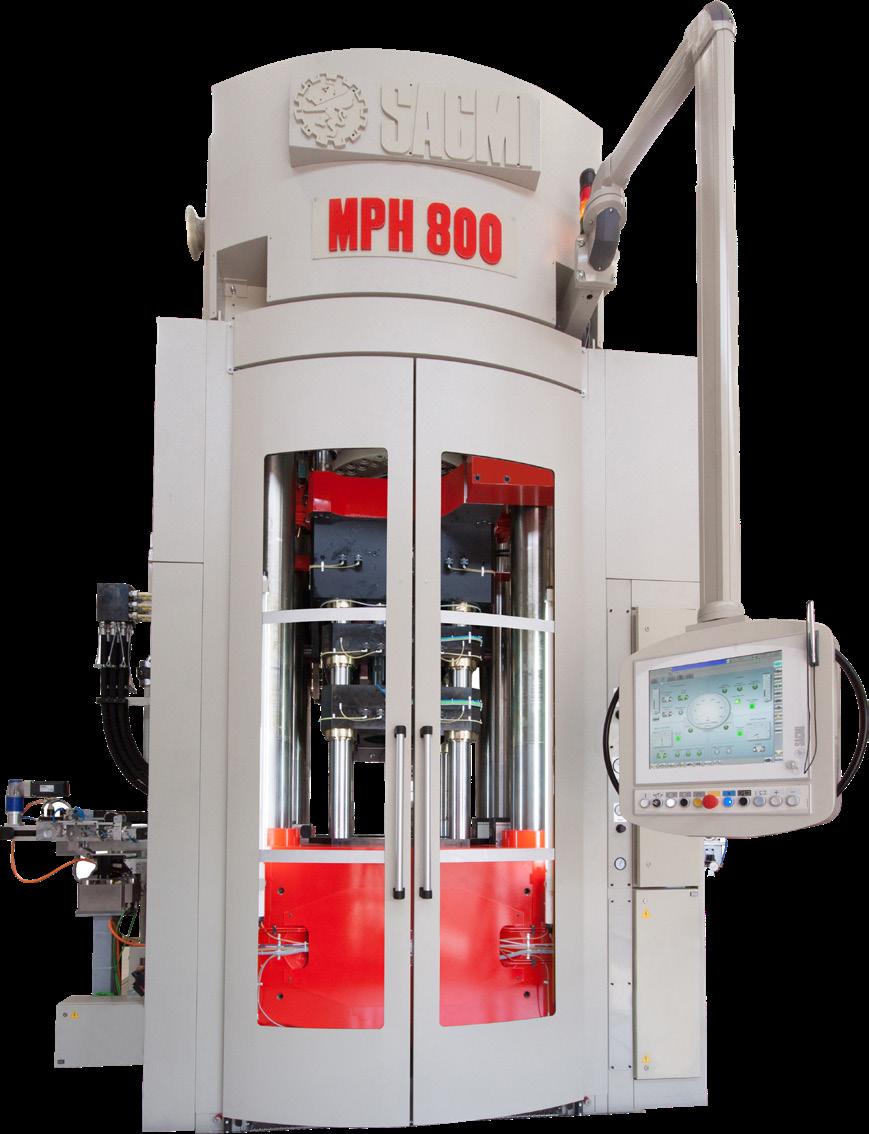
POWDER METAL SOLUTIONS
The transformation of the Automotive Industry toward electrification is driving the Powder Metal world to innovations related to the production of components that had never been produced before.
The result can be observed in the recent production of powder metal parts with full density and helical gears with angles up to 45°, which is a decisive goal for the Press&Sinter technology.
In addition, besides the Automotive industry, even companies involved in different industries have the opportunity to take advantage from these new techologies to enter new sectors.
Follow SACMI in its journey towards electrification.
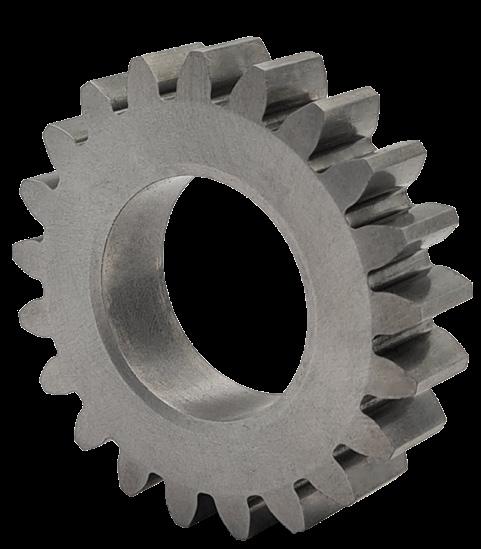

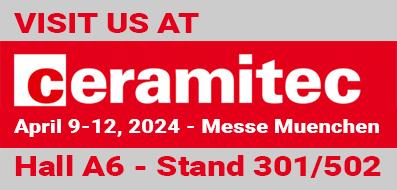 7,71 g/cm3 GREEN DENSITY
UP TO 45° AT HIGH DENSITY
DIE WALL LUBRICATION SYSTEM
HELICAL GEAR SYSTEM
7,71 g/cm3 GREEN DENSITY
UP TO 45° AT HIGH DENSITY
DIE WALL LUBRICATION SYSTEM
HELICAL GEAR SYSTEM
Lauffer Pressen to launch new generation of powder compacting presses at Ceramitec 2024
Lauffer Pressen, headquartered in Horb, Germany, will introduce a new range of powder compacting presses during this year’s Ceramitec, scheduled to take place in Munich, Germany, April 9-12, 2024.
The new Lauffer E-Cell 12 machine generation is designed for the production of precision parts and integrates a powder press with robot-based parts handling. The servo-electric press has a central control panel and a control and visualisation concept for press and handling.
Lauffer’s PM software and humanmachine interface (HMI) offers a range of options, including a unique simulation function allowing machine operators to check virtually if a PM part is fit to press or not.
The Lauffer E-Cell features a specially developed ejection press for compacting and handling carbide green compacts and other materials such as metal and ceramic powder. The press achieves maximum precision in all axis movements and is reported to offer a significant increase in energy efficiency.
www.lauffer.de
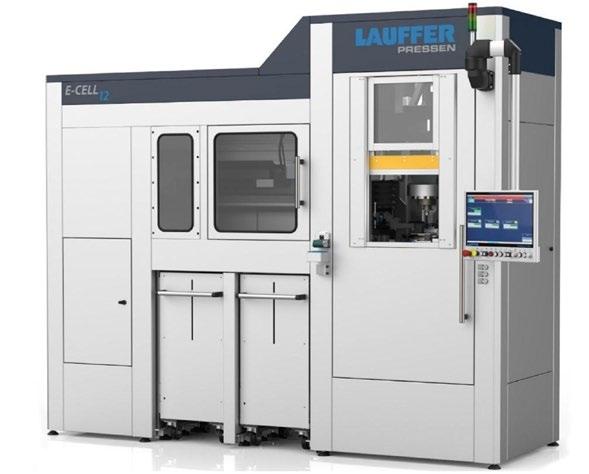
Apply now for EPMA’s 2024 Powder Metallurgy Summer School
The 22nd Powder Metallurgy Summer School, organised by the European Powder Metallurgy Association (EPMA), will take place from July 15-19, 2024. The event will be hosted in partnership with the Politecnico di Torino – Sede di Alessandria in Alessandria, Italy. The programme is intended to provide an in-depth insight into the field of Powder Metallurgy.
The EPMA PM Summer Schools aim to provide advanced teaching on the advantages and limitations
of PM to participants from across Europe. The programme is led by some of Europe’s leading academic and industrial experts. The Summer Schools offer an opportunity for young scientists and engineers to interact with senior figures in the PM industry, allowing them to broaden their knowledge through direct technical discussions.
The application deadline is May 1, 2024.
www.epma.com
Laboratory Testing Inc invests $3M to expand fatigue testing lab
Laboratory Testing Inc. (LTI), Hatfield, Pennsylvania, USA, has invested over $3 million to install sixteen new fatigue testing frames at its facility, bringing the total it now has in the lab to fifty-two. This expansion aims to meet the increasing demand it is witnessing for comprehensive materials testing services, particularly in the aerospace, space, defence and Additive Manufacturing sectors.
Fatigue testing is a critical method for assessing material performance under various conditions, ensuring the reliability and durability of components in mission-critical projects. LTI’s enhanced capabilities will enable engineers and technicians to conduct strain-controlled fatigue testing across a spectrum of temperatures.
Brandon Mcvuagh, LTI President, shared, “We are thrilled to enhance our support for clients in the aerospace, space, defence, and Additive Manufacturing sectors through the expansion of our fatigue testing lab. This investment underscores our commitment to providing highquality, advanced testing solutions to meet the evolving needs of our mission critical customers. As the industry experiences an upturn in the coming years, LTI will continue to lead by developing capacity, investing in expanding technologies, and furthering our capabilities to support the progression of the industry.”
LTI offers a range of complex testing procedures, including metal powder characterisation, non-destructive testing, crack propagation, high cycle fatigue, and low cycle fatigue testing.
www.labtesting.com
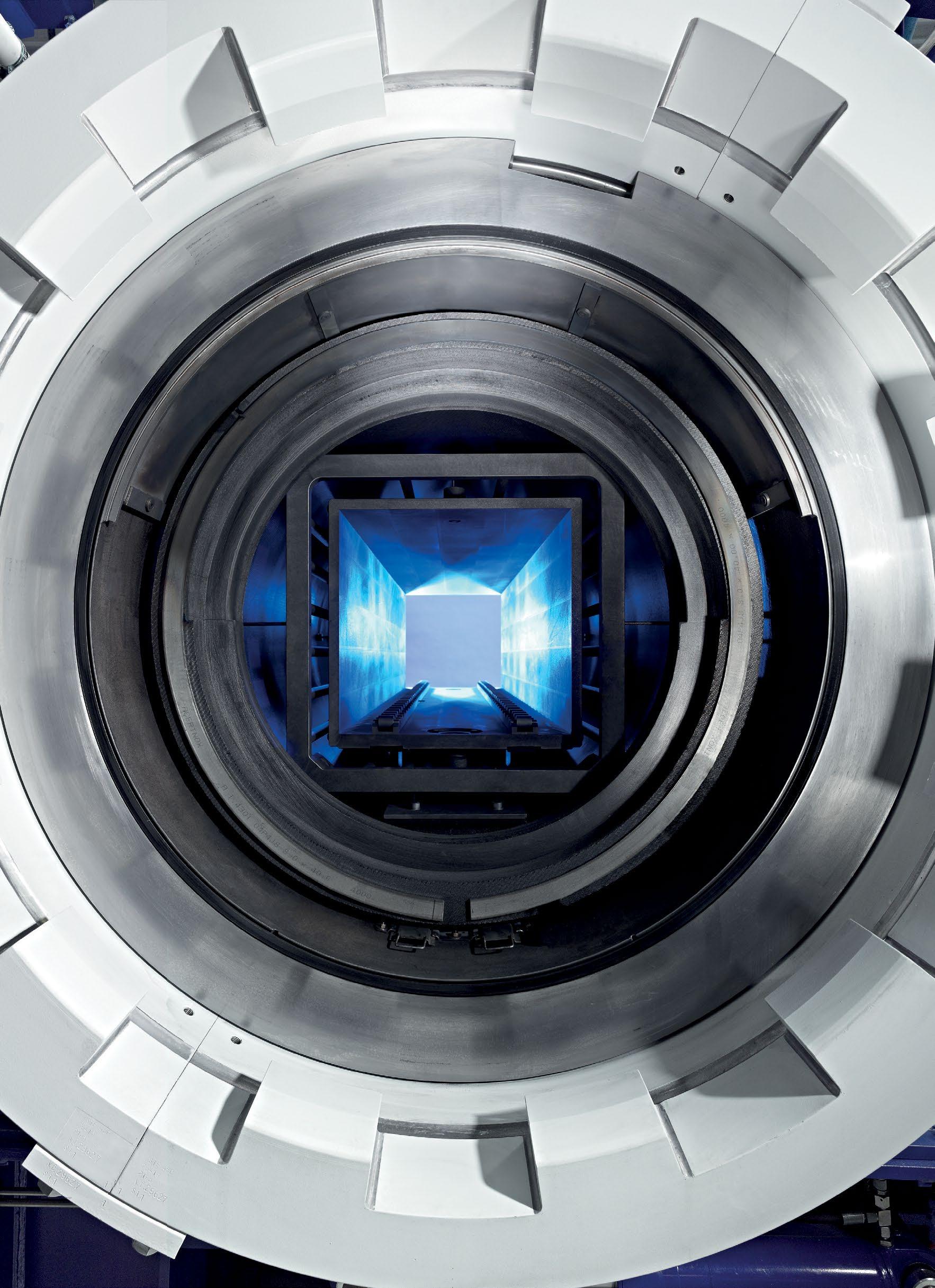

Deepak Madan honoured with 2024 Fellow Award by APMI International
Deepak Madan has been announced as the recipient of the 2024 Fellow Award by APMI International.
This award recognises the significant contributions made by APMI members towards achieving the organisation’s goals, purpose and mission, as well as their high level of expertise in the industry’s technology, practice or business.
The recipient of this award will be elevated to Fellow status at PowderMet2024/AMPM2024, scheduled to be held June 16-19 in Pittsburgh, Pennsylvania, USA.
For over thirty years, Madan is said to have used his expertise in technology assessment and keen eye for capitalisation of business opportunities to use PM as a tool to grow product lines and profits during each step of his career. Madan also championed the opportunity to manage
and collaborate with the US Army to develop magnesium alloy powders for lightweight applications, along with the identification and establishment of a supply base for unique PTFE (Teflon) powders.
Madan’s extensive experience in the PM industry is reflected in his diverse publications, covering areas such as ferro-phosphorous and manganese sulphide additives, activated sintering of ferrous powders, admixed stainless steel powders, magnesium alloys for lightweight applications, and Additive Manufacturing.
Madan has been an active member of various associations and has served on their respective boards. He has also participated in multiple committees related to the PM industry and attended numerous technical conferences. Madan has



also served as the Chair of the Pittsburgh APMI Section, where he organised a full-day technical conference. The conference featured invited industry leaders from across the country who presented papers, allowing local section members to learn from industry experts, especially those who couldn’t travel to national conferences.
www.apmiinternational.org









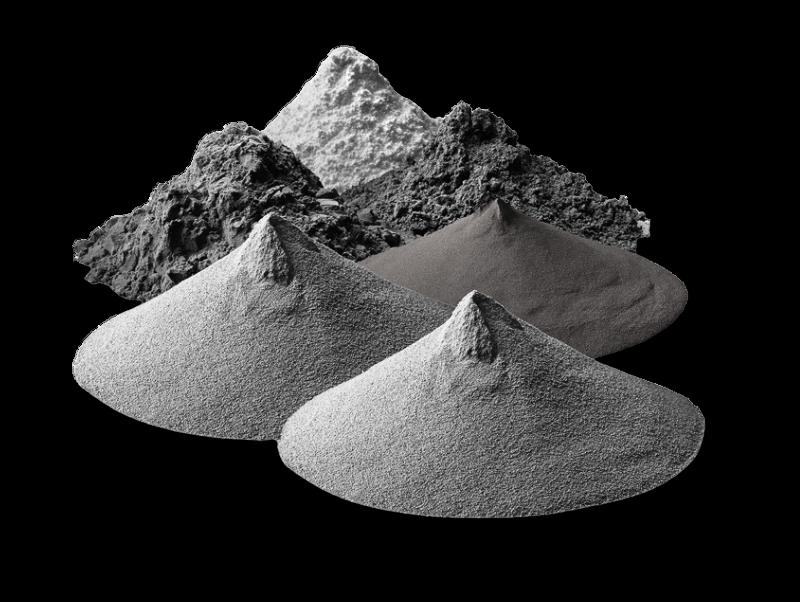
Ajax supplies Atomising Systems with metal powder handling equipment to boost capacity
Ajax Equipment, Bolton, England, UK, reports it has supplied Atomising Systems Limited, based in Sheffield, UK, with an ATEX-rated feed hopper and mass flow screw feeder for metal powder handling, expected to expand production capacity at Atomising Systems’ facility.
The powder handling system is based on a proven design previously supplied to Atomising Systems with increased robustness to allow for the modest pressure rating required. To ensure mass flow, Ajax has incorporated a specially-designed screw feeder below a suitably-stiffened two-stage plane flow hopper, which provides a consistent feed.
Craig Winfield, Project Manager at Atomising Systems Limited, shared, “We’ve used Ajax on several occasions for screw feeders and mass flow hoppers and so when this new requirement came up, we were happy to work with Ajax again and have not been disappointed.”
“Ajax has worked with Atomising Systems successfully on many projects, so we were happy to provide a new system hopper and feeder design, updated to meet their new
capacity requirements and modest pressure needs,” stated Eddie McGee, managing director, Ajax Equipment. “Ajax’s screw feeders are used across a wide range of industries around the world to ensure reliable powder handling from a few grams per minute to hundreds of tonnes per hour.”
www.ajax.co.uk
www.atomising.co.uk
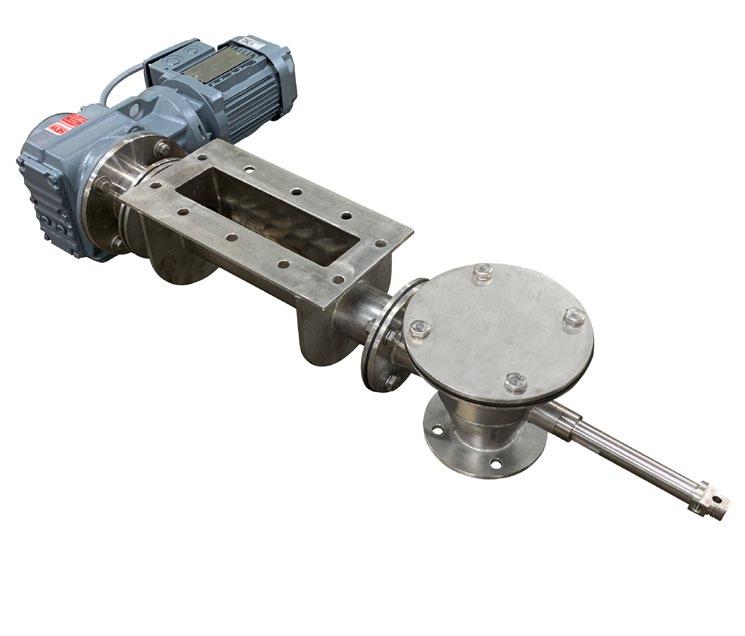
Ajax Equipment has supplied Atomising Systems Limited with an ATEXrated feed hopper and mass flow screw feeder for metal powder handling (Courtesy Ajax Equipment)
Entry opens for the EPMA’s 2024 Powder Metallurgy Component Awards
The European Powder Metallurgy Association is now accepting entries for the EPMA Powder Metallurgy Component Awards 2024. The awards, considered instrumental in promoting and generating interest in PM technology over the years, are open to all manufacturers who produce structural components using metal powder-based processes. The four award categories are:
• Additive Manufacturing
• Hot Isostatic Pressing (HIP)
• Metal Injection Moulding (MIM)
• PM Structural (including Hard Materials and Diamond Tools parts)
Entries for each category will be judged on a strictly confidential basis by a multinational panel of experts who will evaluate each submission according to a number of criteria. Judges will consider the following questions when deciding on the winning entries:
• How do you rate this component in terms of excellence in exploiting PM or in terms of novelty, surpassing borders or bringing new ideas into practice?
• To what extent is the component described in the entry expected to provide environmental benefit?
To what extent is the PM component described in the
entry expected to provide cost savings and/or improved quality?
• To what extent is the entry expected to stimulate further usage of PM materials and technology?
• How well is the entry prepared (description of component, inclusion of diagrams, photographs and other illustrations)?
The awards will be announced and presented at the Euro PM2024 Congress & Exhibition, held September 29 – October 2, in Malmo, Sweden. A short video presentation will be produced by the EPMA covering the background and development of the award-winning components, with the parts then showcased in the exhibition hall.
The deadline for submission is March 31, 2024.
www.componentawards.epma.com
www.epma.com

Amsted Automotive’s EV Dynamic Controllable Clutch with PM parts wins Gold 2024 Merit Award
Amsted Automotive has been awarded Gold in the ‘Electric Vehicles – Overall Vehicle Technology of the Year’ category in the 2024 Automotive and Transportation Merit Awards. The award is in recognition of the company’s Dynamic Controllable Clutch (DCC), an electro-mechanical eAxle Disconnect System designed for electric vehicles. The DCC incorporates a Powder Metallurgy notch plate and pocket plate, produced by Amsted Automotive’s BurgessNorton division in Geneva, Illinois, USA.
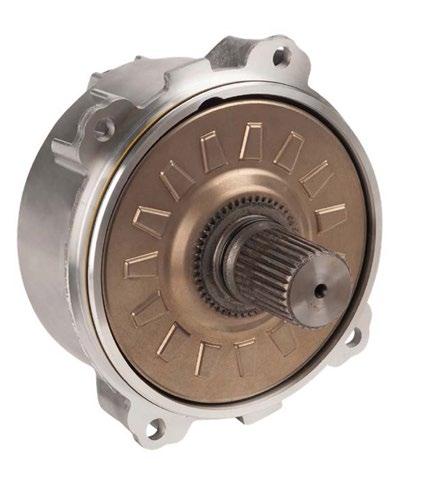
Designed to recognise the efforts put forth by global industries and the markets they serve, the Merit Awards acknowledge companies that have contributed to the continued growth of the market.
The Amsted eAxle Disconnect System engages and disengages the drive axles to conserve energy and maintain on- and off-road capabilities while increasing EV range by up to 10%. The technology is used in commercially available EVs today, providing a seamless engagement and disengagement of all-wheel and four-wheel drive,
making it a real-world solution for global automakers.
The notch plate and pocket plate parts are made from FLNC-4408 sinter-hardened steel to a density of 7.1 g/cm 3. Both parts rotate in the assembly and have balance requirements that are maintained through a combination of tooling geometry, die-fill compensation, and sectional densities to avoid the need for a balance correction operation.
The use of Powder Metallurgy provides a 9% weight saving, and the parts also won a Grand Prize in the MPIF Powder Metallurgy Design Excellence Awards in 2023.
A white paper on DCC functionality can be downloaded from the company’s website.
www.amstedauto.com
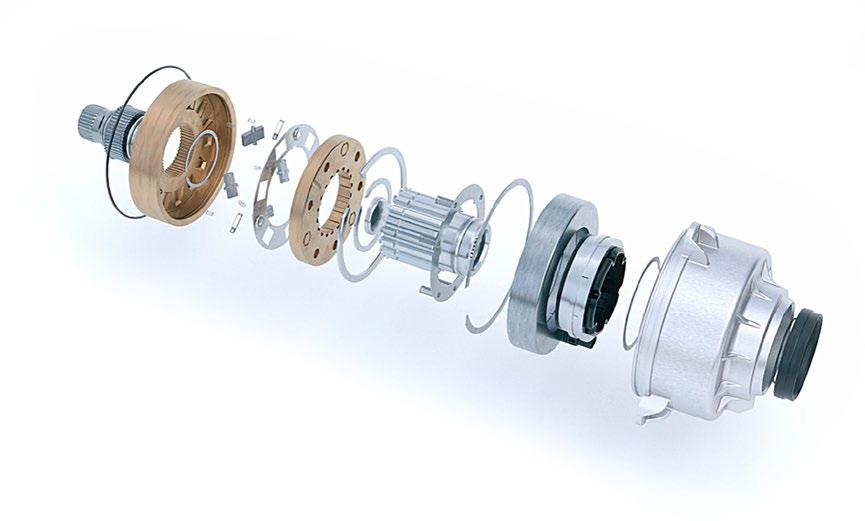
GKN Hoeganaes highlights use of iron powder in LFP batteries for electric vehicles and renewables
GKN Hoeganaes has highlighted the use of iron powders in the development and production of next-generation lithium iron phosphate (LFP) batteries. Promoting the technology on the company’s website, GKN Hoeganaes reports that these batteries show great potential for use in the electric vehicle and renewable energy sectors.
Lithium ion batteries – particularly those incorporating LFP (lithium iron phosphate) as the cathode material – demonstrate exceptional potential for electric vehicles and renewable energy storage applications, GKN Hoeganaes explains. Iron powder is a crucial material in these applications and offers significant
environmental benefits, with GKN Hoeganaes using 100% recycled domestic scrap in the production of its iron powder.
Further benefits of LFP over alternative chemistries include lower cost, increased cycle life, improved safety, less risk of thermal runaway, and a more stable supply chain. With a move to cleaner and more sustainable energy solutions, the integration of LFP batteries is one option that will help deliver a more electrified and environmentally responsible future.
www.gknpm.com
Munson Machinery introduces new abrasion-resistant rotary batch mini mixer for uniform blending
Munson Machinery, Utica, New York, USA, has introduced its new MX-10-AR abrasion-resistant Rotary Batch Mini Mixer. This mixer is able to blend up to 283 litres of aggregates, metal powders, pigments, sand, chemicals, and reinforced thermoplastics, with or without the addition of liquids, in ratios down to one part per million with total uniformity in two to three minutes.
The unit is reported to be equally efficient down to 15% (28 l ) of rated capacity, regardless of disparities in bulk densities, particle sizes or flow characteristics, making it suitable for laboratory testing, pilot production, or documenting outcomes when scaling up to larger rotary batch mixers.
Electrical presses SP and MP
From 80 kN up to 5000 kN
The high-wear internal surfaces are made of abrasion-resistant steel, including proprietary mixing flights welded to the rotating drum. The flights gently tumble, turn, cut and fold the material, achieving homogeneous blends with no shear, while directing the entire batch toward and through a stationary plug gate valve with no residual waste or product segregation.
The mixer is equipped with a large access door and swingaway intake chute. It is powered by a worm-reducer to a chain and sprocket drive with enclosed drive guards as standard.
There are six models of Rotary Batch Mini Mixer with maximum batch capacities ranging from 7-425 litres. For larger-scale

Gasketted door of Rotary Batch Mini Mixer model MX-10-AR allows faster product charging, dust-tight operation, and easier access to all interior product contact surfaces for cleaning and visual inspection (Courtesy Munson Machinery)
mixing, in-line Rotary Batch Mixers are available with maximum batch capacities ranging from 142 litres to 17 cubic metres.
www.munsonmachinery.com
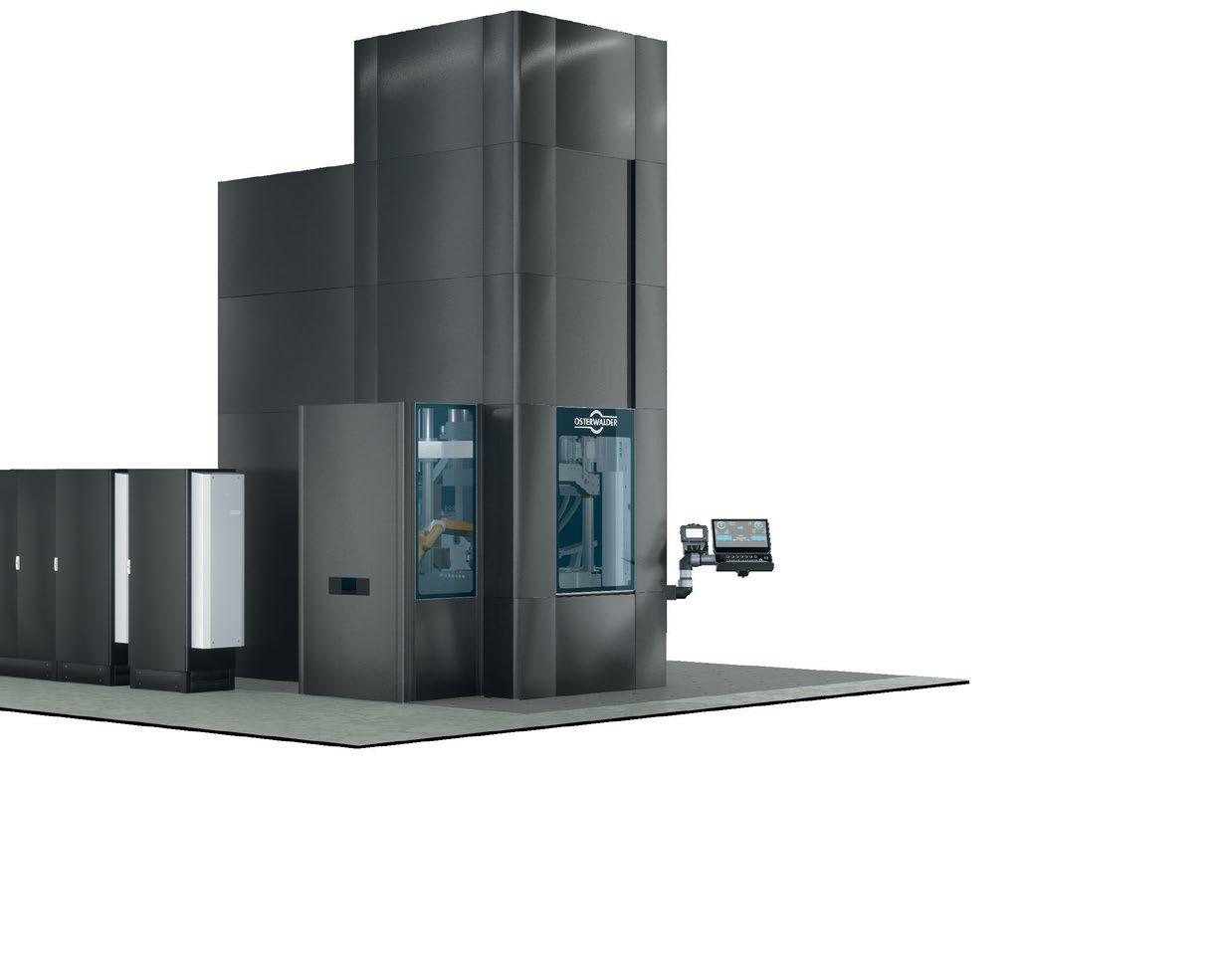

Jalin Ketter appointed as CEO of PVA TePla
PVA TePla AG, headquartered in Wettenberg, Germany, has announced that Jalin Ketter was appointed CEO of the company on January 1, 2024. Ketter, who has been PVA TePla’s Chief Financial Officer since June 2020, was named Spokesperson of the Management Board in July 2023. It was stated that she will fulfil the CEO position in addition to her duties as CFO.
“My goals are clear: together with our excellent team, I will drive PVA TePla’s profitable growth and further expand our market position as a leading technology company in the fields of material solutions and metrology,” Ketter stated.
Ketter has been a member of PVA TePla’s management board since 2015.
“The decision to appoint Jalin Ketter as CEO not only recognises her impressive expertise and leadership skills, but also her many years of valuable work for PVA TePla,” explained Alexander von Witzleben, Chairman of the Supervisory Board of PVA TePla. “She has made a significant contribution to our success in recent years. We are convinced that she will lead our organisation into the future with foresight and determination. This step underlines our confidence in Jalin Ketter, the management team and our shared vision.”
Since Ketter’s appointment as Spokesperson of the Management Board, she has led PVA TePla alongside COO Oliver Höfer. It was
e-VAC to manufacture NdFeB permanent magnets for EV and defence applications in new US facility
e-VAC Magnetics, which is part of the VAC Group headquartered in Hanau, Germany, is set to establish US operations in South Carolina, building its first facility in Sumter County. The project is expected to bring in over half a billion dollars of investment and create 300 new jobs.
e-VAC produces rare earth neodymium-iron-boron (NdFeB) magnets, critical to automotive, defence, industrial and renewable energy applications. The facility, along with VAC’s extensive experience in rare earth magnet technology and process intellectual property, is anticipated to play a significant role in ensuring a resilient, US-based supply chain.
The company intends to build, own, and operate a new facility on 85 acres of land in the Pocotaligo Industrial Park located in Sumter
County. The facility will house the production of permanent magnets for electric vehicles and defence applications. e-VAC has entered into an agreement with the US Department of Defense, which will provide $94.1 million for the acquisition and installation of manufacturing equipment, the establishment of technical infrastructure, and the engineering of production lines for the facility. The company plans to begin operations in late autumn of 2025.
South Carolina’s Technical College System will assist e-VAC in recruiting and training potential employees through the readySC programme. A website with hiring information will be available next year.
The South Carolina Coordinating Council for Economic Development approved job development credits related to this project. Additionally, Sumter County was awarded

added that the finance department has already been bolstered with the appointment of Elke Kleemann as the Head of Finance.
www.pvatepla.com
a $23 million Rural Infrastructure Fund grant to cover the expenses related to land acquisition, site preparation, road improvements, water and wastewater improvements, and building construction related to this project. Another $2 million LocateSC grant was awarded to Sumter County to offset infrastructure improvement costs for the Pocotaligo Industrial Park, which will benefit e-VAC.
“e-VAC is grateful for the support of the State of South Carolina, Governor Henry McMaster, Senator Lindsey Graham, and Representatives Jim Clyburn and Ralph Norman,” stated Dr Erik Eschen, CEO, VAC Group. “We are excited to become a member of the Sumter County community. This project represents a significant commitment by VAC to re-shore critical process and product technology, creating good paying and highly skilled jobs for residents of the community. With this support, we will directly contribute to US energy independence and national security.”
www.vacuumschmelze.com




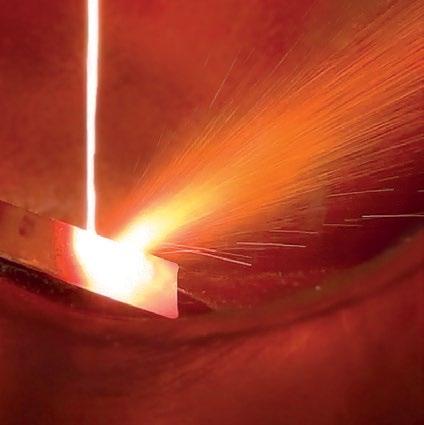
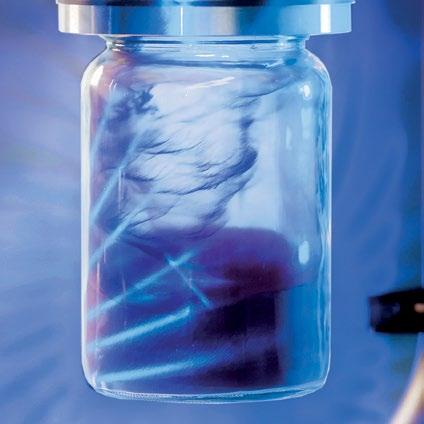
DIFFERENT ATOMIZATION AND SEPARATION TECHNOLOGIES TO MEET YOUR NEEDS:
● GAS OR ULTRASONIC ATOMIZATION FOR SPHERICAL POWDERS WITHOUT ANY SATELLITES
Ideal for LPBF, MIM and other Additive Manufacturing applications with the need for high quality powders with high purity, sphericity and wide range of reproducible particle size distribution.
● WATER ATOMIZATION FOR MORE IRREGULAR POWDERS
Ideal for recycling/refining process, press & sinter process and others.
● MAXIMUM PURITY BY OXIDATION-FREE PROCESSING in the closed-chamber machine by means of de-gassing, vacuum and protective gas features
● FOR A WIDE RANGE OF METALS AND FOR SMALL TO MEDIUM AMOUNTS
AUG series HTC+ gas atomizers with temp. max. up to 2100° C Also versions for high-reactive metals as aluminium or magnesium available!
● AIR CLASSIFIER AC SERIES FOR PRECISE SEPARATION OF METAL POWDERS into fine and coarse powder fractions especially in the range < 25 µm, where conventional sieving operations fail.
● ALL UNITS DESIGNED FOR EASY HANDLING AND CLEANING, QUICK ALLOY CHANGE WITH MINIMUM CROSS CONTAMINATION
www.bluepower-casting.com
Metal Powder Products LLC names Jon Jensen as its new CEO
Metal Powder Products LLC (MPP), a manufacturer of Powder Metallurgy and Metal Injection Moulding parts, has announced the appointment of Jon Jensen as its Chief Executive Officer. MPP is a portfolio company of Mill Point Capital and is based in Noblesville, Indiana, USA.
Jensen brings more than thirty years of global manufacturing experience to MPP. Prior to joining MPP, he served as president and CEO of NAI, leading the business through an operational and financial transformation. His extensive background includes several key executive roles at L-com Global Connectivity,
Group Dekko, Alcoa, ITT, and Eaton, where he had a strong track record of mobilising and collaborating with his teams to achieve key objectives rapidly.
“We are excited to welcome Jon to the MPP team as we navigate the next chapter of our growth journey. He is an accomplished CEO with a proven track record of driving strong financial results, instilling financial and operational discipline, and demonstrating inspirational leadership,” stated Antony Besso, Executive Chairman.
Jensen holds a Bachelor of Science degree in Mechanical
KBM Advanced Materials to distribute Sandvik Osprey metal Additive Manufacturing powders in the USA
Metal powder producer Sandvik
AB, headquartered in Stockholm, Sweden, has announced that KBM Advanced Materials, LLC, based in Fairfield, Ohio, USA, will distribute its range of metal powders for Additive Manufacturing across the USA.
KBM, established in 2021, provides a unique supply network in the United States that helps bridge the gap between a dispersed customer base and metal powder producers. The collaboration will increase the availability of Sandvik’s Osprey metal powders in the region.
“We are thrilled to offer our customers in the United States easy access to our market-leading range of Osprey metal powders,” stated Andrew Coleman, Head of metal powder and Additive Manufacturing at Sandvik. “We are seeing increasing demand for our high-quality powders and have listened to our customers’ needs for a US-based stock with short
delivery times. We are very proud to offer a customer-centric business solution that will enable them to access high-quality alloys fast, without compromising on quality.”
In April 2023, Sandvik announced the launch of its e-commerce platform, Osprey Online, designed to offer the European market a range of metal AM powders directly from stock. The partnership with KBM is expected to bring the same quick access to its Osprey metal powders in the US.
Luke Harris, Sales Director for metal powder business at Sandvik, added, “We often say ‘The Right Partner is Everything’, and that is certainly as true for us as it is for our end users. KBM shares Sandvik’s focus on creating value for our customers and we feel very optimistic having entered this partnership to provide the US market premium metal powders quickly and efficiently. Our wide range of Osprey metal powders is wellknown and trusted across several

Engineering Technology from Lake Superior State University. His educational background, leadership experience, and understanding of diverse industrial sectors are said to make him ideally-suited to lead MPP.
www.MPPinnovation.com
demanding industries, thanks to our long-standing experience, unique level of traceability, and overall quality. I’m convinced our metal powder offering in combination with KBM’s attractive platform will prove beneficial to our US customers.”
KBM offers a wide range of ready-to-order metal powders to customers in the metal AM and Metal Injection Moulding (MIM) sectors through its online shop system.
“KBM is excited to partner with Sandvik to increase accessibility of Osprey metal powders in the United States,” stated Kevin Kemper, KBM CEO. “On-demand availability of products drives growth in the metal powder industry, and our e-commerce solution features an easy-to-use interface, secure online transactions, detailed product information, pricing transparency, and the ability to ship products within a day of purchase. Our customers will embrace the addition of Sandvik’s quality products to the KBM marketplace increasing demand for Osprey metal powders.”
www.metalpowder.sandvik/en/ kbmadvanced.com

BMW to invest €650 million converting Munich plant to all-electric production by 2027
BMW has announced it is investing €650 million to convert its main manufacturing facility in Munich, Germany, to exclusively produce electric vehicles from the end of 2027. Four new buildings are being constructed on-site, including a new vehicle assembly line and body shop.
Internal combustion engine manufacturing has been moved to the UK and Austria, with around 1,200 employees being retrained or relocated to other facilities. Unlike other car manufacturers, BMW has not set a specific date for discontinuing the production of vehicles with combustion engines, but will face European Union regulation which effectively bans the sale of new petrol and diesel cars in the bloc from 2035.
All-electric vehicles accounted for 15% of BMW’s sales in 2023, with the ratio expected to increase to one-third by 2026.
BMW presented its Neue Klasse EV concept at the IAA car show in September 2023, representing a multibillion-euro effort by BMW to close the technology gap with competitors like Tesla and other EV makers. The car, which will be roughly the size of BMW’s current 3-series model line, is scheduled to be manufactured in Munich starting from 2026 alongside combustion engine vehicles. It will also be produced at BMW’s new plant under construction in Debrecen, Hungary, as well as in Shenyang, China, and San Luis Potosi in Mexico.
“We want to make this vehicle generation so modern that it looks like we skipped one generation,” BMW Chief Designer Adrian van Hooydonk stated at the concept launch. “That is necessary because of those new players that are coming in. You know the debate that’s been going on: Oh, traditional OEM over 100 years old, can you make this step? We can and we want to.”
Neue Klasse vehicles are expected to be powered by 48-millimetre-diameter cylindrical batteries in different lengths. The batteries are similar in size and shape to those Tesla plans to use in its Cybertruck and other models. The Neue Klasse is targeting a 50% reduction in battery pack costs and 25% more range per kilowatt-hour, executives said.
“Neue Klasse is by far the biggest investment in our history. Because the technology we are using all over BMW is all new in all areas, without exception,” Frank Weber, BMW’s Chief Technology Officer, was reported to have said in an interview ahead of the IAA event.
www.bmw.co.uk
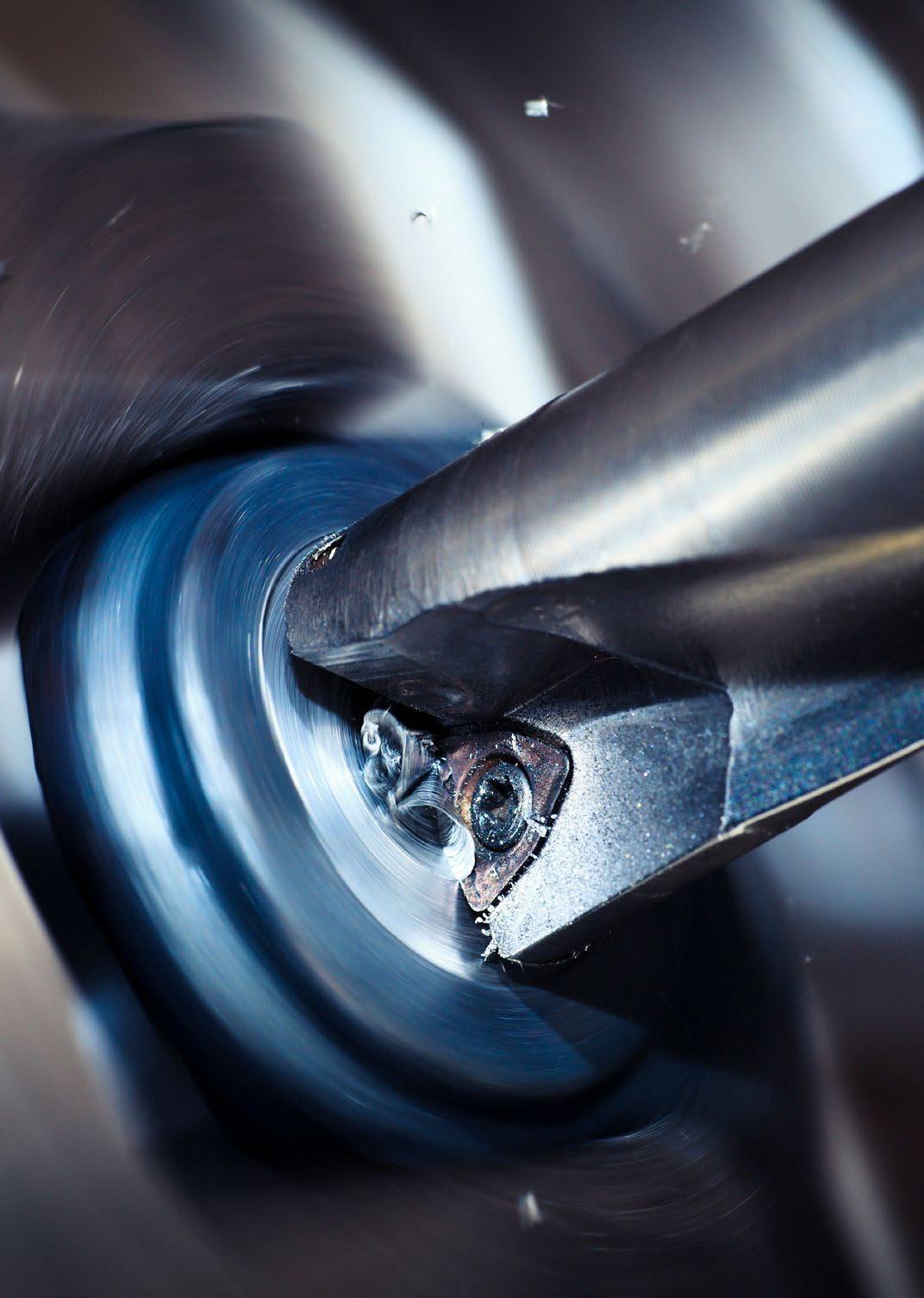
Powder engineering expertise.
GEA is a worl-leading specialist in powder engineering with exceptional patented Spray Drying Solutions. Be it a powder, a granulate or an aglomerated product, our solutions define and deliver superior quality powders to your exact specifications in the most energy-and-costefficient way.
Get in touch today
gea.com/contact
Tooling for Powder Compacting Technology
• Simple, quick set-up
• High accuracy
• Low scrap rate
• Maximal machine utilization
• Increased productivity
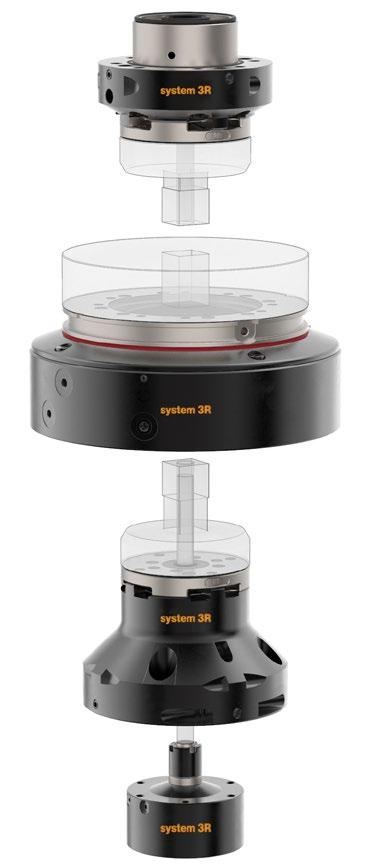
MPIF releases 2024 edition of its Standard 35 for PM Structural Parts
The Metal Powder Industries Federation (MPIF) has published the 2024 edition of MPIF Standard 35-SP – Materials Standards for PM Structural Parts. The document provides design and materials engineers with the latest engineering property data and information available to specify materials for structural parts made using the Powder Metallurgy process.
The MPIF explains that each user-friendly section of the standard is clearly distinguished by easyto-read data tables (inch-pound and SI units) and provides explanatory information for each material listed. Revised and expanded, this standard was developed by the Powder Metallurgy commercial parts manufacturing industry and includes new material data on prealloyed steel FL-5008 and stainless steel SS-409L-25, revised typical values for iron-copper and copper steel FC-0205-HT & FC-0208-HT, revised typical TRS values for ironnickel and nickel steel FN-2025-HT & FN-0208-HT, and updated processing conditions for soft magnetic alloys.
The MPIF stated that this standard does not apply to materials for PM self-lubricating bearings (SLB), powder forged (PF) or Metal Injection Moulding (MIM) products that are covered in separate editions of MPIF Standard 35. It was added that publication of the 2024 edition of this standard now renders the 2020 edition (and prior editions) obsolete. www.mpif.org
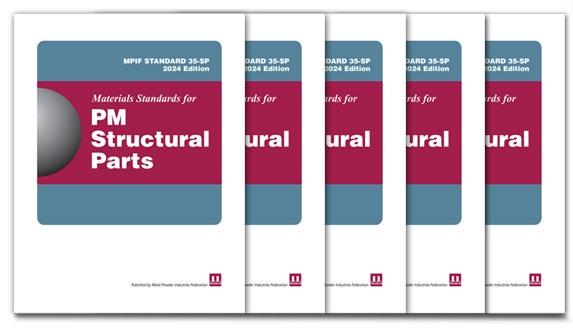
The 2024 edition of MPIF Standard 35-SP – Materials Standards for PM Structural Parts (Courtesy MPIF)
Submitting news...
Submitting news to PM Review is free of charge.
Please contact Paul Whittaker: paul@inovar-communications.com

Elkem develops iron silicon soft magnetic powder for electrical motor components
Elkem, headquartered in Oslo, Norway, has developed a new specialised iron silicon soft magnetic powder through an EU-funded SOMA project with partners VTT (coordinator), Siemens, Stellantis and Gemmate Technologies. The new powder is expected to enable the Additive Manufacturing of components for electrical motors.
The soft magnetic powder is reportedly easy to magnetise and de-magnetise, making it an important component in electrical motors. It is currently created in a small-scale pilot atomiser located at the Future Materials, Norwegian Catapult Centre in Kristiansand. The powder has been used to additively manufacture components
that were evaluated for quality and manufacturing of demo devices. The Additive Manufacturing and part qualification were conducted at VTT in Finland and Siemens in Germany.
The three-year project, supported by EIT Raw Materials and funded by the EU, began on January 1, 2021, with a total budget of €5.6 million.
“This is a project with potential to transform motor parts manufacturing. We have successfully created a new specialised powder with good printability based on silicon-steel (with additives). 3D-printed components show enhanced ductility and competitive magnetic properties,” stated Tomi Lindroos at VTT.
The final use-case was to produce a motor for an electric scooter.
Ceratizit wins environmental award for its sustainable upGRADE carbides
Ceratizit, part of the Plansee Group and headquartered in Mamer, Luxembourg, has received the Prix de l’Environnement 2023 from the Luxembourg industry association FEDIL for the process used to manufacture the carbide grades in its upGRADE product family. By using secondary raw materials from an optimised recycling process, the upGRADE carbide grades offer high performance at a particularly low carbon footprint.
“Mining ore containing tungsten already pays off starting at a content of 0.06%. This means that around 200 tonnes of ore have to be transported to obtain one tonne of metallic tungsten, which requires a lot of energy,” stated Dr Ralph Useldinger, Head of Group Analytics and Fundamental R&D.
This energy requirement is why Ceratizit only uses secondary raw materials from the zinc recycling process for the upGRADE grades, in order to minimise the carbon foot-
print of the products. This means that emissions are almost exclusively the result of necessary electricity, which, since the beginning of 2023, Ceratizit has purchased exclusively through sustainable sources.
Frank Thomé, executive board member, also emphasised the role of the upGRADE in the company’s sustainability strategy, “They prove that more sustainable carbide products are possible without having to compromise on performance.”
To ensure this, Ceratizit only feeds high-quality, meticulously sorted carbide scrap into the recycling process. Useldinger explained, “In zinc recycling, the structure of the tungsten carbide remains unchanged. This means that the quality I put in is the quality I get out.”
The upGRADE product family currently features two carbide grades. CT-GS20Y for metalworking, which has already won the Best of Industry Award, and KLC20+ for
This was supported by modelling carried out by Gemmate Technologies and VTT, giving more novel design opportunities for electrical motor components.
“The powder developed in the SOMA project will now be introduced to the market by Elkem for evaluating the product for future commercial production. The product is currently available in small test volumes,” shared Jan Ove Odden, project leader at Elkem.
As the world shifts towards more sustainable modes of transportation, electrification has become a key priority for automakers, governments, and consumers alike. Elkem is a provider of advanced siliconbased materials and will continue to provide silicon-based products across mobility and transportation sub-sectors.
www.elkem.com

knives, rods and saw teeth for woodworking, which was presented at LIGNA in May.
“Our goal is to be the leader in sustainability in the cemented carbide and cutting tool industry by 2025,” Thomé stated. “That’s why we are not only actively working to further reduce our corporate carbon footprint, but are also gradually adding more products with a particularly low product carbon footprint to our product portfolio.”
www.ceratizit.com
NASA’s GRX-810 alloy undergoes successful hot-fire testing for liquid rocket engines
NASA first reported the development of its GRX-810 powder in 2022, an oxide dispersion strengthened (ODS) alloy specifically for use in extreme temperatures. This Ni-CoCr based alloy was designed for aerospace applications, including liquid rocket engine injectors, preburners, turbines, and hot-section components, where it is required to withstand temperatures up to 1100°C.
The alloy was created using integrated computational materials engineering techniques to focus on a new class of materials that provide exceptional temperature and oxidation-resistant properties. GRX-810’s aim is to bridge the temperature gap between traditional nickel-base superalloys and refractory alloys.
The GRX-810 alloy utilises Additive Manufacturing to incorporate nanoscale yttria particles throughout its microstructure and, compared to traditional nickel-base superalloys, is said to provide a two-fold increase in tensile strength, 1,000-fold better creep properties, and two-fold improvement in oxidation resistance.
As discussed in a paper presented at the 2024 AIAA Science and Technology Forum and Exposition (AIAA
SciTech Forum), January 8-12, 2024, Orlando, Florida, USA, a team of NASA researchers led by Paul R Gradl, Combustion Devices Manufacturing and Design Engineer at NASA’s Marshall Space Flight Center in Huntsville, USA, confirmed a successful series of hot-fire tests using liquid oxygen/liquid hydrogen (LOX/LH2) and liquid oxygen/liquid methane (LOX/LCH4) propellants. Rigorous high-duty cycle testing of various injectors and nozzles was reported to have demonstrated improved life compared to traditional nickel-base superalloys.
The authors explained that a coating process for the powder feedstock was refined to enhance the high-temperature properties of GRX-810. This involved coating pre-alloyed base powder with <1 wt.% Y 2O 3 nanoparticles, ensuring even dispersion when additively manufactured using Laser Beam Powder Bed Fusion (PBF-LB).
The ODS coating, achieved through AM, was said to address the historical cost challenges associated with traditional ODS alloy production and resulted in a well-distributed and stabilised microstructure at elevated

Various components built using GRX-810 PBF-LB: A) turbine blisk, B) inducer with internal features, C) impinging injector, D) regeneratively-cooled nozzle, E) shrouded turbine blisk, F) larger-scale turbine blade with integral instrumentation ports (Courtesy NASA/AIAA SciTech 2024)
temperatures. It was stated that a single heat treatment using Hot Isostatic Pressing (HIP) minimises grain growth, further enhancing the material’s structural integrity.
The GRX-810 components used in the hot-fire test were additively manufactured on an EOS M280 using atomised feedstock from Praxair. Testing was conducted at NASA MSFC test stand 115 under the Optimised and Repeatable Components using Additive (ORCA) development project and Reactive Additive Manufacturing for the Fourth Industrial Revolution (RAMFIRE) collaboration. The RAMFIRE test series incorporated the GRX-810 injector, whereas the ORCA test series used both a GRX-810 injector and nozzle.
Liquid oxygen/liquid hydrogen and liquid oxygen/liquid methane versions of GRX-810 pentad injectors using a centre-mounted torch igniter were built. Two truncated ideal contour GRX-810 nozzles were fabricated as well. The injectors accumulated 3,117 seconds of hot fire across pressures of 37.4 to 57.2 bar, and the nozzles accumulated over 2,458 combined seconds.
The authors concluded that the successful application of GRX-810 alloy in hot-fire testing, particularly in LOX/LH2 and LOX/LCH4 environments, demonstrated its robustness and readiness for aerospace applications.
Future work involves additional scaling and analysis of the GRX-810 alloy feedstock and both PBF-LB and laser powder-based DED builds for large-scale production and broader applications. NASA plans to continue the maturation of the GRX-810 alloy into component applications, with the final goal of commercialisation. Research efforts are said to be exploring additional applications within aerospace and the energy industry.
The full paper, “Extreme Temperature Additively Manufactured GRX-810 Alloy Development and Hot-fire Testing for Liquid Rocket Engines,” is available from the American Institute of Aeronautics and Astronautics.
www.nasa.gov

Thomas F Murphy to receive Lifetime Achievement Award at PowderMet2024
Thomas F Murphy, FAPMI, Senior Scientist, Research and Development, at Hoeganaes Corporation in Cinnaminson, New Jersey, USA, has been chosen to receive the Kempton H Roll Powder Metallurgy Lifetime Achievement Award by the Metal Powder Industries Federation (MPIF). The award, named after the founding executive director of the MPIF, acknowledges the exceptional accomplishments and achievements of individuals who have dedicated their careers and lives to the field of PM and related technologies.
Murphy is only the fifth person to be presented with the award since its inception in 2007.
The award ceremony will take place during the opening session of PowderMet2024 International Conference on Powder Metallurgy & Particulate Materials and AMPM2024 Additive Manufacturing with Powder Metallurgy events, held in Pittsburgh, Pennsylvania, USA, June 16–19, 2024.
Murphy is a renowned expert in the field of ferrous PM microscopy. He has played a crucial role in developing sample preparation, characterisation methods and testing
for metal powders and PM components. He continues to educate the industry about the impact of microstructure on the entire PM process. Recently, his research has expanded to include the effects of microstructure on the Additive Manufacturing process.
Murphy organised and coordinated the APMI International (APMI) PM Metallography Competition from 1989 to 2008. He also oversaw the Excellence in Metallography Awards from 2009 onwards. Additionally, he has served on the Board of Directors for the International Metallographic Society (IMS) and has been actively involved as a judge for the IMS Metallography Contest. In recognition of his contributions, Murphy received the MPIF Distinguished Service to Powder Metallurgy Award in 2005 and the APMI Fellow Award in 2007.
Murphy has been an enthusiastic MPIF Technical Conference Program Committee member since 1990. He co-chaired PowderMet2007, assisted with the development of the online Guide to PM Microstructures, and has been a longtime instructor at several MPIF seminars and courses.
Tekna’s $20 million government funding plan extended
Tekna Holding ASA, Sherbrooke, Quebec, Canada, has announced the extension of a CA $20 million contribution agreement with the Canadian federal government’s Strategic Innovation Fund (SIF) programme. Under the terms of the reported amendment, the maximum amount to be disbursed remains unchanged at CA $20 million, however the programme has now been extended to March, 2027.
To date, CA $6.6 million has been disbursed.
“This amendment is a significant milestone, confirming Tekna’s posi -
tion as an industry leader,” stated Luc Dionne, CEO of Tekna. “The extended support and enhanced financial framework under the SIF programme are instrumental in driving forward our strategic initiatives. We are committed to leveraging this opportunity to further our technological advancements and market leadership.”
The SIF programme aims to stimulate high-quality business investments across various sectors. It supports R&D initiatives that enhance technology transfer, commercialisation of innovative

Additionally, he is a member of the APMI International Journal of Powder Metallurgy Editorial Review Committee.
Murphy has authored or co-authored more than seventy-five technical publications, four of which were recognised as Outstanding Technical Papers by MPIF. Many of these publications serve as guidebooks for proper sample preparation, etching, and analysis techniques. From 1983 to 1990, he also served as an adjunct faculty member at Drexel University Evening College. www.mpif.org
products, services, and processes, and encourages the growth of innovative firms.
“The SIF’s contribution has been pivotal in our growth journey,” added Espen Schie, CFO of Tekna. “The amended terms not only provide us with financial flexibility but also affirm the value of our ongoing projects. We are grateful for the support of Innovation, Science, and Economic Development Canada (ISED) throughout the amendment process. This collaboration is a testament to our commitment to innovation and sustainable development in the advanced materials sector.”
www.tekna.com
Höganäs Brazil receives sustainability award for use of plastic pallets
Höganäs AB’s Brazilian operation has been awarded a prize in the environmental category of the AGFE 2023 ESG Awards for its project to exchange wooden pallets for plastic alternatives. The AGFE business development agency is a nonprofit entity whose purpose is to generate opportunities for social and economic development in the Mogi das Cruzes region, where Höganäs’ Brazilian operations are located.
Compared to wood, the lifecycle of plastic pallets is said to be around 17-22 times longer. At just
12.5 kg each, the plastic pallets are also 17.5 kg lighter than the wooden alternatives used at Höganäs, which weigh in at 30 kg each. The company stated that the expected payback time is twenty-four months, with savings of approximately $29,000 per year. Additional benefits, such as increased durability, hygiene, uniformity, sustainability, and safety, were also reported.
The AGFE award included a social prize of approx. $1,000, which Höganäs donated to APAE – the Association of Parents and Friends of the
Microtrac and Mark & Wedell partner to offer online particle size analysis solutions
Microtrac MRB, a manufacturer of instruments for particle characterisation, and part of Verder Scientific, a division of Verder Group headquartered in Haan, Germany, has entered into a strategic partnership with Mark & Wedell, Kvistgård, Denmark.
Under this partnership, Microtrac’s Camsizer Online products will be available worldwide as part of Mark & Wedell’s JAWO Sampling business unit.
The Camsizer Online products are based on Microtrac’s patented 3D digital image processing technology and offer a wide measurement range, high resolution, and robust performance in harsh environments. By integrating the Camsizer Online products into Mark & Wedell’s representative sampling systems, customers in industries such as mining and steel may be able to optimise their processes, improve product quality, and reduce energy and material consumption.

Exceptional of Mogi das Cruzes, who have been operating in the city for almost fifty years and offer education, health and social assistance. APAE works to guarantee the rights of people with disabilities and offers support for families with leisure, sport and cultural activities.
“Knowing that our operations are becoming more sustainable every day due to the ideas and desire of our employees motivates us to do more and more. Being able to contribute to society through the recognition of internal projects makes us even happier,” stated Adriano Machado, president of Höganäs in Brazil.
www.hoganas.com
Mark & Wedell is an automated sampling solutions provider and has, since 1982, engineered and produced a full range of sampling equipment and complete solutions for obtaining representative samples from bulk materials and powders through its wholly-owned subsidiary JAWO Sampling A/S.
“We are very excited to partner with Mark & Wedell, a company with a strong reputation and a long history in providing innovative and customised sampling solutions to various industries,” said Markus Pauli, CEO of Microtrac MRB. “This partnership will enhance our global presence and enable us to offer our customers a complete solution for their online particle size analysis needs.”
“We are delighted to join forces with Microtrac, a company with a proven track record and a leading position in the online particle size analysis market,” said Bjarke Palsson, co-CEO/owner of Mark & Wedell. “This partnership will strengthen our JAWO Sampling business unit and allow us to leverage Microtrac’s cutting-edge technology and know-how to provide our customers with the best possible representative online particle size analysis solutions.”
www.microtrac.com
www.mark-wedell.com
ADDING VALUE TO ADDITIVE MANUFACTURING
Bodycote provides a complete service solution for metal parts built by the additive manufacturing process, including stress relief to minimise distortion and residual stress, EDM to prepare the component for hot isostatic pressing (HIP), heat treatment or HIP to remove microporosity, and associated quality assurance testing.
Reduction in rejection rates and inspection costs
Fatigue properties on par with wrought material
Significant improvement in fatigue strength, fracture toughness, and tensile ductility
100% reduction in porosity possible
Improved machined surfaces and consistency in properties
Improved microstructure
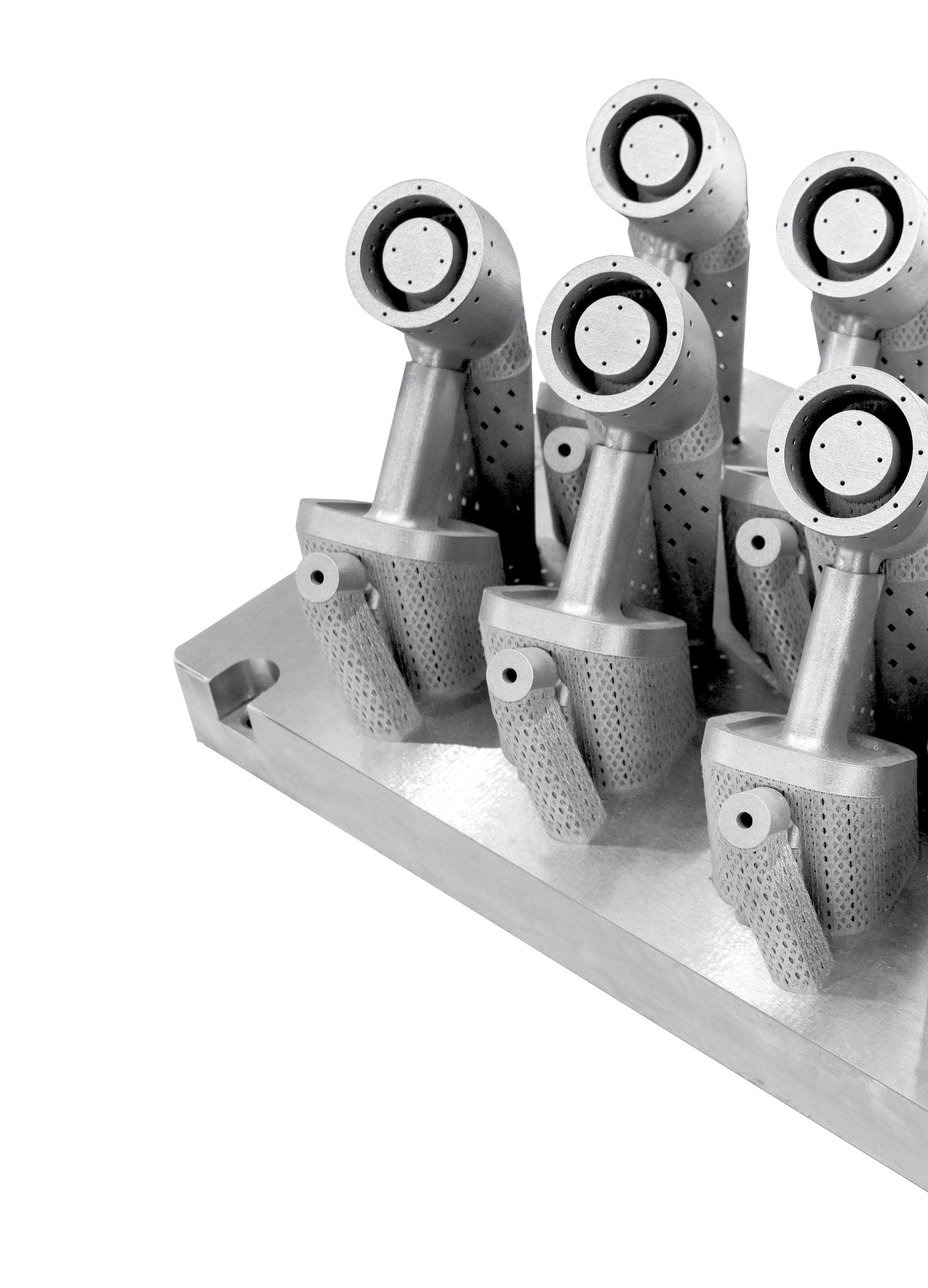
the partner of choice for additive manufacturing heat treatment | metal joining | hot isostatic pressing | surface technology
www.bodycote.com
Mkango reports UK production of recycled rare earth magnets under HyProMag
Mkango Resources Ltd, headquartered in Vancouver, Canada, has announced the first production runs of recycled rare earth magnets completed at the Tyseley Energy Park rare earths hub in Birmingham, UK. The announcement marks the first UK production of sintered rare earth magnets on commercial scale equipment in over twenty years, and it was stated that commercial production is now targeted for mid-2024.
Production of recycled rare earth magnets at Tyseley is being developed by the UK’s University of Birmingham and HyProMag, which is owned by Mkango’s 79.4% held subsidiary, Maginito Limited.
Will Dawes, Chief Executive of Mkango shared, “This is a major milestone for the Company, HyProMag
and for the UK, creating a strong platform to advance to commercial production and for the scale-up and roll-out of HPMS technology into Germany, United States and other jurisdictions. HyProMag’s recycling technology has major competitive advantages versus other recycling technologies, and is a key enabler for the cost-effective and energyefficient separation and recycling of rare earth magnets, avoiding the need for dismantling, and enabling the production of magnets with a significantly reduced carbon footprint.”
Further production runs are planned in the coming weeks to provide customer and project partner samples. Commercial production at Tyseley will start with
an initial throughput of 20 tonnes per annum of rare earth magnets and alloys. This will be scaled up to a minimum of 100 tpa in the following months. Larger scaleup scenarios of up to 1,000 tpa are currently under evaluation.
HyProMag is the main industrial partner for the Tyseley development and holds the exclusive license for underlying the Hydrogen Processing of Magnet Scrap (HPMS) technology. This technology, originally developed at the University of Birmingham, is now being commercialised by HyProMag. HPMS is a new recycling technology that preserves the quality of the original magnets for reprocessing, offering a cleaner and more energy-efficient alternative to traditional dismantling, thermal demagnetisation, and cleaning processes. This technology also lends itself to automated and efficient processing. The resulting recycled magnets are being made to recognised industrial grades.

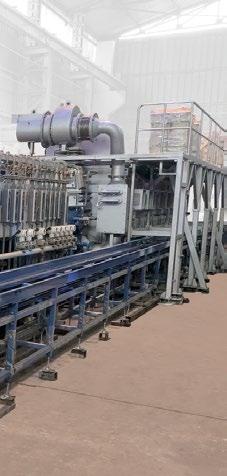
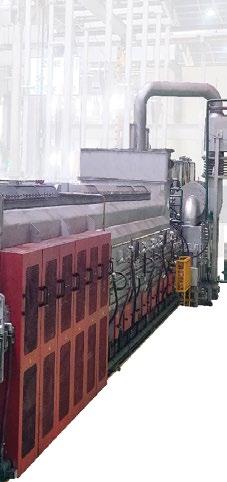

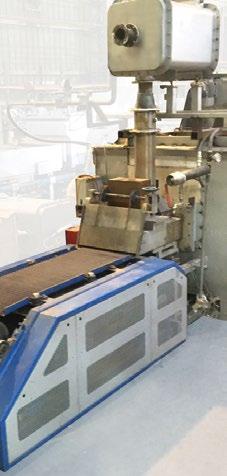
Nick Mann, Operations General Manager of HyProMag commented, “Beginning production on commercial scale equipment is very exciting for all of us at HyProMag. We are receiving strong market interest to begin delivering recycled magnets to customers at scale – being able to start that over the coming months will be extremely positive. We also look forward to implementing the lessons learned as we see equipment arriving in Germany next year and in the USA soon afterwards.”
The Tyseley model forms the basis for the development of magnet recycling and manufacture in Germany by HyProMag in 2024. It also serves as the foundation for the 2025/2026 development of a multi-spoke and hub operation in the United States through the joint venture with CoTec Holdings Ltd.
The remaining equipment and infrastructure at Tyseley are expected to be commissioned in the coming weeks, underpinning the subsequent transition to commercial production. The recycled raw material used for these initial production runs came from wind turbine magnets, voice coil assemblies from hard disk drives, and production scrap which was processed through the existing recycling pilot plant commissioned at the University of Birmingham in 2022, and subsequently transported for short loop magnet manufacture at Tyseley.
Professor Allan Walton, Head of the Magnetic Materials Group, University of Birmingham, and founding Director of HyProMag added, “A huge amount of work has been carried out over the last year on the existing pilot plant at the University of Birmingham to produce a spectrum of NdFeB magnets with a range of magnetic grades. This has allowed us to test recycled magnets in a range of products for the first time with extremely encouraging results. The installation of the new equipment at Tyseley Energy Park has allowed us to prove that these properties can be achieved on a commercial scale for the first time on automated equipment. This is a

massive step forward and re-introduces commercial sintered magnet manufacturing back into the UK for the first time in over twenty years.”
HyProMag is reportedly attracting considerable interest from potential customers for its recycled magnets, paving the way for the transition to commercial operations, and for recycling solutions from original equipment manufacturers, and automotive and recycling companies looking for a low-cost and energy efficient circular solution for magnet recycling that does not require dismantling.
The magnets produced at Tyseley were of commercial grade, featuring a square loop with good coercivity (resistance to demagnetisation) and remanence (magnet strength), which are key measures of magnetic performance.
In addition to providing feed during the commissioning phase of the Tyseley development, the pilot plant at the University of Birmingham has enabled the testing of various scrap streams and the production of a diverse range of products since its commissioning in 2022. This has generated operational data to aid the scaling up and commercialisation of operations.
Furthermore, over 3,000 finished rare earth magnets have been
produced by HyProMag and the University of Birmingham from recycled HPMS powder produced for project partners and potential customers from the pilot scale equipment to date. These magnets are being tested in a wide range of applications including multiple automotive, aerospace, electronics applications, and others planned. This provides invaluable marketing and technical information, further supporting the scaling up and commercialisation of operations.
In addition to producing finished magnets, the University of Birmingham’s pilot plant has created alloys for remelt testing and chemical processing, maximising the flexibility of the product suite and the ability to process different scrap streams. Mkango is also developing another pilot plant at Tyseley for long-loop recycling through a chemical process. This complements the HyProMag short-loop recycling process and will also be commissioned in the coming weeks. Materials for chemical processing, including swarf (the powder produced from grinding and finishing magnets), will be processed either in-house by Mkango or in partnership with third parties.
www.mkango.ca
www.hypromag.com

Custom Powder Systems introduces new metal powder packaging solution
Custom Powder Systems, Springfield, Missouri, USA, has introduced the Metal Powder Packaging System, designed to address the specific challenges of dispensing and packaging large quantities of metal powders. With its advanced features, it aims to improve packing efficiency in the Additive Manufacturing industry.
Problems in traditional dispensing processes are intended to be solved by transitioning from bulk manufacturing lines to a manual dispensing step. This step involves weighing precise quantities into smaller containers for shipping. The system utilises a manual conveyor and an integrated scale with a digital readout under the discharge tubes,

Custom Powder Systems has introduced the Metal Powder Packaging System, its latest innovation in powder handling (Courtesy Custom Powder Systems)
Kanthal and Ceba form strategic partnership for sustainable electric solutions in heating processes
Kanthal, headquartered in Hallstahammar, Sweden, and Ceba, located in Trescore Balneario, Italy, have formed a strategic partnership to provide sustainable electric solutions for heating processes such as ladle and tundish preheating, thereby advancing the shift towards green technology.
The steel and metal industry is seeking ways to decarbonise production, increasing the demand for sustainable heating solutions. Currently, processes such as ladle and tundish preheating and drying rely on fossil fuels and open flames powered by gas burners. Through
this partnership, Kanthal and Ceba aim to broaden their capabilities and resources, offering electrified alternatives to these processes. This advancement will not only help reduce carbon emissions but also enhance workplace safety. This collaboration combines Kanthal’s advanced industrial heating technology with Ceba’s expertise in engineering and manufacturing industrial heating equipment. This partnership delivers all-encompassing electrified solutions for industrial heating needs across different sectors. Ceba will develop equipment incorporating
enabling high measurement accuracy.
The design prioritises safety by incorporating a vacuum exhaust filtering system to maintain a clean and controlled environment during the packaging process. A lift-up gull wing door design provides easy access. Moreover, in-and out-feed airlocks actively prevent cross-contamination, whilst a manually-controlled inert environment helps to preserve product quality.
The primary application of the Metal Powder Packaging System is at the end of manufacturing processes. Here, atomised products are mixed, screened, and dispensed into containers for distribution. This design is intended to significantly benefit high-purity powders used in industries like aerospace and medical fields.
This system is engineered for environments where contact with oxygen is restricted or undesirable. It safeguards the integrity of metal powders and includes optional features for automation and customisation based on specific industry needs. By mitigating the risks of oxidation, static discharge, and off-gassing, it enables powders to maintain their quality throughout the packaging process.
www.custom-powder.com
Kanthal’s existing heating technology.
“We’re thrilled about this partnership as it will enable the market introduction of electric ladle and tundish heaters, which is something that the industry is asking for,” shared Rickard Dahlgren, Acting President – Heating Systems.
“We are proud of this strategic partnership which is the result of a shared vision and commitment to reduce carbon emission in the metal industry, providing a significant step for a more sustainable future. We look forward to sharing the innovative systems that will emerge from this partnership,” stated Cesare Baldassari, chairman of the board of directors and founder of Ceba.
www.kanthal.com
www.cebasrl.com
Navigation and Support
In a complex industry, we’ll guide you the entire way.
We’ve got one mission, to support as many metal part makers in the MIM and Metal AM industry as possible. Our team of processing experts utilize 20+ years of experience to share all our knowledge and help you overcome challenges, develop better processes and become successful part makers. We help develop real world, practical solutions based on many lessons learned along our journey. Being the ONLY debind and sinter service provider with full sized production equipment, we are honored that we have been able to support every industry currently utilizing MIM and Metal AM. DSH is the only source for the best process support, toll processing and educational resource for your MIM and Metal AM applications.
We offer:
Remote Process Engineering, Small/Large Toll Processing, R+D projects, Educational Support on Total Process Management.



IperionX’s commercial-scale titanium production on schedule
IperionX Limited, based in Charlotte, North Carolina, USA, has announced that its titanium furnace has completed final mechanical assembly and successfully passed factory acceptance tests with the IPX technical team. The Hydrogen Assisted Metallothermic Reduction (HAMR) titanium industrial furnace is now being transported to the US, with anticipated delivery to the Titanium Manufacturing Campus during the first quarter of 2024.
Installation and commissioning of the HAMR titanium furnace is expected during the second quarter before producing the first titanium metal in mid-year 2024.
The application of this conventional furnace technology for titanium production has undergone a comprehensive furnace test work programme. In 2023, the IperionX technical team successfully completed two full-scale titanium production test runs that reportedly surpassed the core target production parameters for the Titanium Production Facility.
Construction progress
Construction of the Titanium Production Facility is advancing to schedule, it was stated, with the construction of the Advanced Manufacturing Center also on schedule and anticipated to be commissioned during the second quarter of 2024.
Further, IperionX has received the first $2.4 million payment from the $12.7 million US Department of Defense DPA Title III grant to fund Phase I ramp-up of its Virginia Titanium Production Facility, comprising the Titanium Production Facility and the Advanced Manufacturing Center.
This advanced manufacturing unit will utilise angular and spherical titanium powders from the Titanium Production Facility to manufacture a wide range of low-cost and highperformance titanium products using Powder Metallurgy, Hydrogen Sintering & Phase Transformation (HSPT) forging and Additive Manufacturing. It will also leverage its CNC machining, post-processing equipment and R&D laboratories.
“IperionX is nearing an important milestone designed to revitalise the US titanium supply chain with a unique end-to-end solution that spans from recycled scrap titanium to high-performance forged titanium products,” stated Anastasios (Taso) Arima, IperionX CEO. “Our patented titanium technologies can produce a wide range of high-performance titanium products – including angular and spherical titanium powders, semi-finished titanium products, near-net titanium shape products and additively manufactured titanium components – with superior energy efficiency, lower costs, and lower environmental impacts.”
www.iperionx.com

Elementum
3D
adds high-strength A5083-RAM2 to its aluminium alloy range
Elementum 3D, Thornton, Colorado, USA, has announced the expansion of the 5083 aluminium alloy product line. The latest addition to the line is A5083-RAM2, a high-strength aluminium alloy that offers excellent manufacturability, good corrosion resistance and ductility, and does not require any post-build heat treatment.
The material is said to offer exceptionally consistent properties with minimal build orientationdependent property variation following stress relief. Manufactured A5083-RAM2 also has significantly greater strength than work hardened wrought 5083 aluminium.
A5083-RAM2 has essentially the same advantages as A5083-RAM5, but the lower RAM content (2% vs 5%) gives A5083-RAM2 greater ductility with only a small debit in strength.
Since the official release of A5083-RAM5 aluminium alloy at Rapid + TCT 2023, Elementum 3D’s team of materials development experts have been working to engineer a RAM formulation to maximise the elongation of A5083-RAM5 without jeopardising its strength. The desired combination of strength with increased ductility became a reality by leveraging the versatility of RAM technology to customise properties.
Manufactured A5083-RAM2 and A5083-RAM5 are designed for use in any application where wrought 5083 alloy is traditionally used. This includes pressure vessels, marine components, aerospace components, energy sector applications, as well as applications that benefit from the higher strength and design complexity offered by the A5083-RAM product line and AM processing, respectively.
www.elementum3d.com
China’s BYD to construct electric car manufacturing facility in Hungary
Electric automaker BYD, headquartered in Shenzhen, China, has announced plans to construct a new manufacturing and production facility in Szeged, Hungary. Reported to be the next stage of its European strategy, the state-of-the-art facility will be the first of its kind to be built by a Chinese automotive company in Europe.
The factory will be built in phases and is expected to create thousands of local jobs, boost the local economy and support regional supply chains. It was stated that the production facility will incorporate advanced technology and highly-automated production processes.
Situated in central Europe, Hungary serves as an essential transportation hub and boasts a rich history of expertise in the automotive industry. With a mature infrastructure and a well-established industrial foundation, Hungary has been chosen by several European manufacturers as a production location for passenger cars.
BYD added that it has already made significant progress in launching its passenger car operations in Europe. Within its first year, the company established 230 retail stores across nineteen countries and introduced five new models, including hatchbacks, sedans, and SUVs (BYD Han, BYD Tang, BYD Seal, and BYD Dolphin). Three new models are expected to be launched in the next twelve months.
www.byd.com

Sandvik completes Buffalo Tungsten acquisition
Sweden’s Sandvik AB has completed its previouslyannounced purchase of Buffalo Tungsten, Inc (BTI), headquartered in Depew, New York, USA.
BTI was established in 1987 and has been a leading independent manufacturer and global supplier of high purity tungsten powder. With over three decades of experience, its sole focus has been on producing powdered tungsten materials through a hydrogen reduction process. The company reports customers in over forty countries.
In addition to pure tungsten powder, BTI also produces tungsten carbide powder and tungsten carbide-based thermal spray powders.
The acquisition of BTI is set to expand Sandvik’s presence in the North American market and strengthen its regional capabilities in the component manufacturing value chain. In 2022, the company generated approximately SEK 333 million in revenue.
BTI will be reported under the business area segment Sandvik Machining Solutions (SMS).
www.home.sandvik
www.buffalotungsten.com
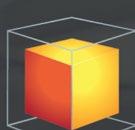
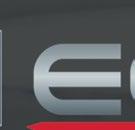
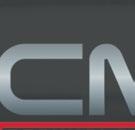


Granutools introduces GranuPack Permeability Unit to measure powders under different packing conditions
Granutools, based in Awans, Belgium, a developer of advanced instruments to measure powder behaviour, has introduced its GranuPack Permeability Unit, designed for measuring the permeability of powders under different packing conditions. The tool provides detailed insights
into how powders behave when subjected to varying levels of consolidation and density.
The GranuPack Permeability Unit offers users the ability to measure permeability and density simultaneously, providing a more holistic view of powder behaviour. It also is capable of measuring

Oxford Instruments launches Innovation Centre for advanced material analysis
Oxford Instruments plc, a materials analysis solutions provider headquartered in Abingdon, Oxfordshire, UK, has established the Oxford Instruments Innovation Centre at the company’s High Wycombe site. The centre is said to form part of the company’s ongoing contribution to scientific advances, in line with its goal of enabling a greener, healthier, more connected, and advanced society.
To mark its inauguration, individuals from the scientific, research and local communities were invited to the new facility. After a welcome speech from Dr Ian Wilcock, the Managing Director of Oxford Instruments’ Materials
Analysis group, attendees were given demonstrations of the centre’s material analysis technologies and a tour of its facility.
“Understanding the nature, structure and property of materials is fundamental to advancement in many fields of scientific research and product development, from renewable energy and advanced communications to healthcare and food science, and a wealth of areas in between,” stated Dr Wilcock. “The centre allows us to showcase our world-leading analytical instrumentation and facilitate the provision of training by our technique experts. It is also intended
permeability at low consolidation levels and in static conditions.
It features a permeability measurement cell, with a porous frit at its base, that allows air to pass through the powder sample; this design ensures precise and controlled measurements of permeability. A mass flow controller regulates the flow of air within the cell at controlled air flow rates; this precise control over the air flow enables accurate and repeatable measurements.
The unit employs a distinctive measurement technique whereby alternating the application of taps to the powder with air insufflation through the powder bed, it is possible to measure the powder permeability at various packing fractions; this enables a comprehensive understanding of how powders behave under different conditions.
The GranuPack Permeability Unit is retrofit-compatible with the GranuPack Classic and can be included in the All-In Maintenance Plan. This solution allows users to upgrade existing equipment without the need for a complete overhaul.
www.granutools.com

Attendees were given demonstrations of the centre’s material analysis technologies and a tour of its facility (Courtesy Oxford Instruments)
as a hub for collaboration, where invited scientists and researchers can access both the technology and the expertise at the core of the Innovation Centre.”
www.oxinst.com
KDF acquisition expands Kymera’s capabilities into the water treatment segment
Kymera International, a speciality materials company headquartered in Raleigh, North Carolina, USA, has acquired KDF Fluid Treatment Inc, Three Rivers, Michigan, USA, a provider of sustainable media for water and industrial treatment systems. KDF’s media consists of high purity copper-zinc formulations and is used in pretreatment, primary treatment, and industrial applications.
“Kymera’s acquisition of KDF aligns with our strategic initiatives and positions us in a growing market segment, where our complementary product capabilities in brass powder media will support significant expansion,” stated Barton White, Kymera CEO. “KDF’s unique industrial and commercial water treatment systems provide supplemental or replacement technology to dramatically extend product cycle life, decrease maintenance, reduce heavy metals, microorganisms and scale, and lower total costs. Their technology, history and strong customer partnerships have secured them a prominent presence in the industry, and we are excited to add their capabilities to Kymera’s portfolio, capitalising on growth and expansion into new markets.”
Adam Shebitz, a Partner at Palladium Equity Partners, added, “The momentum at Kymera is accelerating, as the company continues to expand its value-added capabilities through organic and inorganic growth. The acquisition of KDF is an ideal fit for Kymera as it represents a specialty material solution with seamless vertical integration opportunities in a specialised and growing end-market.”
Issa Al-Kharusy, CEO of KDF, stated, “We are thrilled to continue expanding the KDF technology. We believe that our businesses are a natural fit and we are confident that the partnership will result in exceptional service for our current and ever-growing customer base. Kymera’s focus on specialty materials aligns with our unique offering and their track record of commercial and operational success positions KDF to support the growing water filtration market.”
www.kymerainternational.com
www.kdfft.com

PM Tooling System
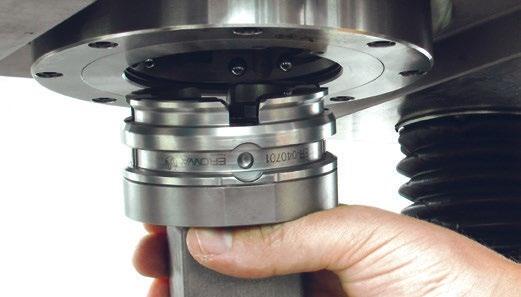
time also enables you to produce small series profitably.

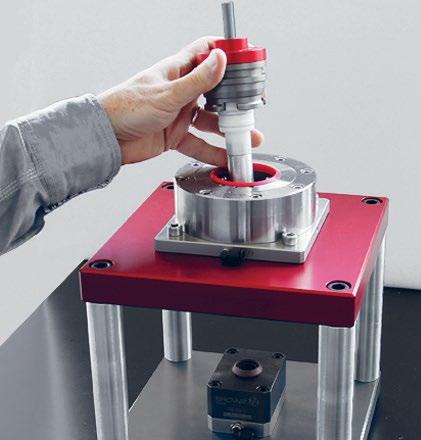
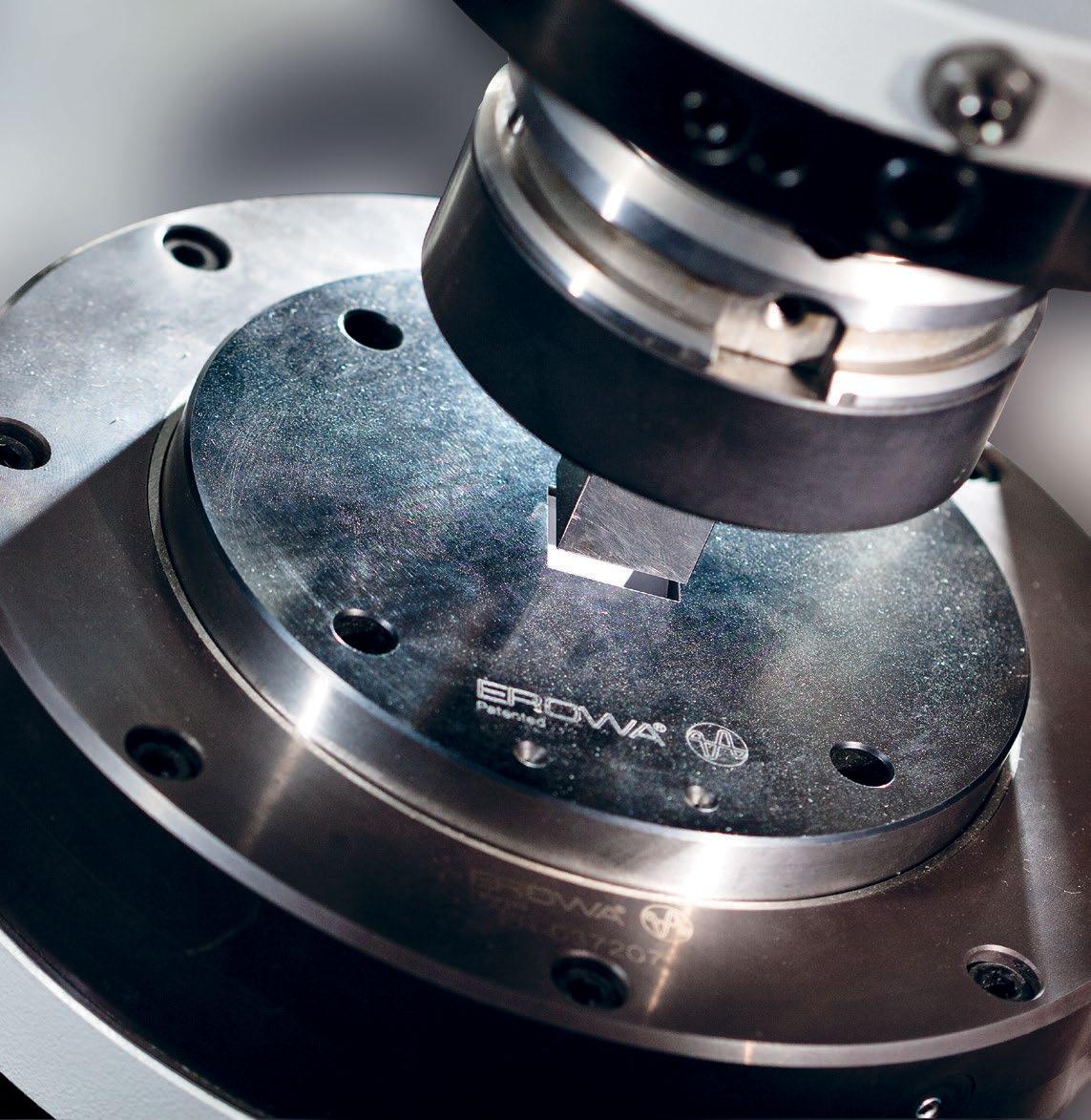

REASSERT project to develop strategies for remanufacturing and recycling electric motors
To address problems that arise at the end of an electric motor’s life, researchers from the Fraunhofer Institute for Manufacturing Engineering and Automation IPA, located in Stuttgart, Germany, and industry partners are working together on the REASSERT project. This project aims to explore various concepts, including repairing, remanufacturing, and reusing electric motors, as well as developing new designs that fit within the principles of a circular economy.
As electric use increases in popularity, the number of electric motors also increases; however, when electric motors reach the end of their useful life, they are often shredded and recycled as their individual components and assemblies cannot be reused. Unfortunately, there are currently no sustainable strategies for retaining value in
the form of remanufacturing and recycling electric motors within a modern circular economy.
The electrification of the automotive powertrain is continuously progressing. The electric motors used often contain valuable raw materials such as copper and rare earth metals like neodymium. Hence, it has become increasingly important to extend the usage phase of these motors. Moreover, the raw materials used in these motors have a larger carbon footprint than combustion engines.
“Innovative value retention strategies offer significant potential for emission reduction in terms of sustainability,” stated Julian Grosse Erdmann, scientist at the Fraunhofer Institute for Manufacturing Engineering and Automation IPA in Bayreuth.
As part of the REASSERT project, a team of researchers

are working in collaboration with Schaeffler (the consortium leader), the Karlsruhe Institute of Technology, BRIGHT Testing GmbH, iFAKT GmbH, and Riebesam GmbH & Co. KG to develop innovative methods for remanufacturing electric motors and reusing them in vehicles. They focus on the value retention strategies of reuse, repair, remanufacture and raw material recycling. These are key elements for a circular economy, enabling the reduction of natural resource consumption and minimisation of waste. The project is funded by the German Federal Ministry for Economic Affairs and Climate Action (BMWK).
Reducing environmental impact
At present, recycling of raw materials is the established value retention strategy. Copper and aluminium in particular are recovered by manual or automated recycling methods. Electric traction motors are disassembled, shredded, sorted into individual material fractions, and melted down for this purpose. However, the recycled material, which is often contaminated, can no longer be used for motor applications, and individual components and assemblies are destroyed. Therefore, raw material recycling should only be chosen as a last resort and replaced by high-quality value preservation strategies such as reuse, repair, remanufacturing, and material recycling.
“We want to establish a closedloop system in which valuable resources are reused in order to eliminate dependency on raw material imports and to minimise raw material extraction,” explained Grosse Erdmann.
The project partners define reuse as reusing the entire engine for secondary use and repair as the replacement of defective components and assemblies. In ‘remanufacturing,’ all components are disassembled, cleaned, reconditioned, and reassembled.

“With these strategies, fewer raw materials like rare earths, copper, and others are needed, perhaps only for spare parts,” Grosse Erdmann elaborated.
The project partners aim to recycle raw materials from motors by disassembling them and sorting the individual materials before shredding. They are analysing and selecting value retention strategies for a given application using reference motors from the passenger car sector.
Building a process chain from inbound inspection to end-of-line testing
The project involves establishing a complete process. Each step of the process is designed for different purposes, starting with the inbound inspection of the motor for classification, followed by disassembly, demagnetisation, cleaning,
component diagnosis, and remanufacturing. The process ends with the reassembly of the motor and its assessment for functionality at the end-of-line testing phase.
“For instance, during this process, a motor housing with minor wear might be classified for reuse and, if necessary, reconditioned using machining processes to ensure functionality. Depending on the chosen value preservation strategy, different process steps and chains are involved, so the effort for reconditioning may vary,” explained Grosse Erdmann.
An example of a challenge would be the disassembly and reuse of magnetic materials from motors.
“A rotor with permanent magnets is difficult to disassemble into its components even in a manual disassembly process due to the coating and bonding of the
magnets. Here, the goal is to establish non-destructive disassembly methods,” Grosse Erdmann added.
AI decision-making tool helps with the selection of a value retention strategy
As part of the project, an AI tool has been developed to assist in selecting the most suitable strategy for retaining the value of a given application. The tool has access to the product and process data for the electric motor, which are stored in a digital twin.
The knowledge gathered in the project is intended to be used for the design of new electric motors. The goal is to develop a prototype motor for the circular economy that can be easily disassembled and onto which the four mentioned value preservation strategies can be effortlessly applied.
www.fraunhofer.de















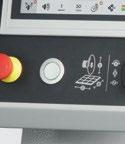










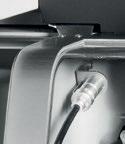

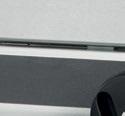






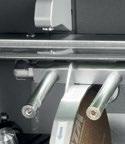
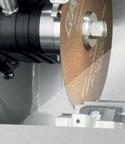




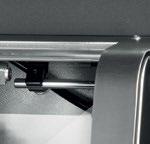


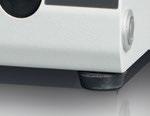




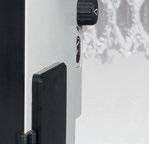




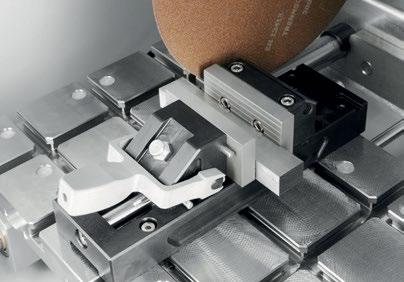
Tesla Model Y to be best-selling vehicle of 2023 JATO data shows
JATO Dynamics, an automotive business intelligence agency based in Uxbridge, UK, has reported that its preliminary data indicates that the Tesla Model Y is on course to secure the top spot across the majority of global markets. The car has seen 1.23 million units sold between January and December 2023, a 64% increase year-on-year.
“The increase in global sales of the Model Y is unprecedented, particularly for a vehicle in the top ten best-sellers,” stated Felipe Munoz, Global Analyst at JATO Dynamics. “What Tesla has been able to achieve with the Model Y in such a short space of time is simply remarkable.”
The Model Y led the way for sales in both Europe and China, the world’s two largest EV markets.
According to data from the China Association of Automobile Manufacturers (CAAM), more than 456,000 units were shipped to China in 2023 – an increase of 45% from 2022. In Europe, registrations of the Model Y soared above consistently high performers such as the Dacia Sandero, Peugeot 208, and Volkswagen T-Roc. Data from thirty markets shows that more than 255,000 units of the Model Y were registered, 19,000 units more than the second-most popular vehicle (the Dacia Sandero).
Munoz added, “The average retail price of a Tesla Model Y in November 2023 was 18% and 23% lower than the average cost of an EV in Germany and USA respectively. The price cuts over the course of the year combined with Tesla’s reputa -
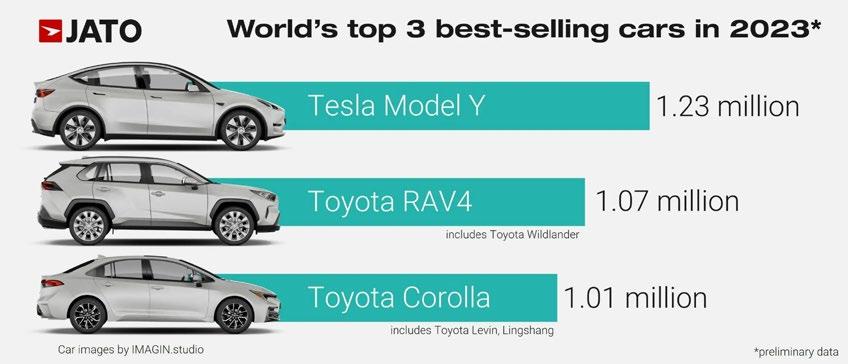
Tesla’s Model Y has risen to the top amongst the majority of global markets, according to JATO’s preliminary data (Courtesy JATO)
Russell Finex launches AMPro Sieve Station Connect for optimised powder handling in Additive Manufacturing
Russell Finex, headquartered in Feltham, Middlesex, UK, has announced its new AMPro® Sieve Station Connect automated powder handling system. First launched in 2010, the AMPro Sieve Station has been re-engineered to incorporate the latest technology. Now, with its ‘connect’ feature, it allows remote
operation and data logging for system optimisation.
The AMPro Sieve Station Connect is designed to provide optimum powder convey times and sieving efficiency, ensuring the powder is ready for use when needed.
The design of the new system is reported to significantly enhance its functionality and user experience.
tion as a reliable and competitive EV manufacturer, helped to fuel already high demand. As a result, Tesla is front of mind for many consumers looking to purchase an EV.”
Official delivery data from Tesla also show that the Model Y accounted for two in three deliveries by the OEM in 2023.
Toyota moves from top-rank
According to the preliminary data from JATO, 2023 will mark the end of Toyota’s top position in the model ranking, with the RAV4 and Corolla having led the global rankings in recent years.
“Toyota has a strong presence worldwide, with the RAV4 (an SUV) and the Corolla (a compact car) making the brand attractive with a diverse offering. However, both models lack pure electric options, with only offer hybrid alternatives,” Munoz continued. “While Toyota still experienced a strong year in 2023, the RAV4 and Corolla are simply unable to compete in the electric car market, which is becoming increasingly established and important across Europe and China.”
Despite this, the second bestselling vehicle in 2023 is set to be the Toyota RAV4, with 1.07 million units currently sold globally – up from 1.02 million units in 2022, when it led the global market. With all body types included, Toyota’s Corolla occupied third place in the rankings, according to the preliminary data.
www.jato.com
New plug-and-play functionality allows users to easily expand their AM fleet or increase powder consumption with additional peripherals. Cloud monitoring facilitates remote access to information and support.
“The AMPro Sieve Station has been completely redesigned, offering advanced system monitoring and control, enhanced ergonomics, maintenance efficiency and performance,” stated Richard Kay, Sales & Marketing Director at Russell Finex.
www.russellfinex.com
PyroGenesis granted US patent for NexGen powder
PyroGenesis Canada Inc., Montreal, Quebec, Canada, has announced that the United States Patent and Trademark Office (USPTO) has issued a new US Patent No. US 11839918 encompassing the company’s NexGen plasma atomisation powder.
This US Patent – ‘Method and Apparatus for Producing High Purity Spherical Metallic Powders at High Production Rates From One or Two Wires’ – describes the company’s NexGen plasma atomisation technology for producing metal powder for use in Additive Manufacturing. The patent describes the features of the NexGen machine, which can potentially lead to higher and more efficient production rates. One such feature is the use of a two-wire simultaneous feedstock approach where the wires are electrically charged before reaching the plasma atomisation step.
Pierre Carabin, PyroGenesis’ Chief Technology Officer and Chief Strategist, and the co-inventor of the technology, shared, “The NexGen process is a significant departure from conventional plasma atomisation, as the improved efficiency from NexGen not only targets higher production rates, but also narrower particle size distribution for more uniformity and consistency, and an ability to tailor particle size distribution (PSD) to customer requirements.
“For PyroGenesis, that means producing more powder in a single system and with only a single plasma torch – in accordance with our commodity security and optimisation business strategy. For our customers, that means they receive the finest, most spherically-consistent, and densest powders from typical plasma atomisation, but with the added benefits of buying from a North American-based source that offers higher yield and less waste of a
recognised critical mineral, while also being more energy efficient –helping them to reduce their carbon footprint and meet their Scope 3 emissions targets,” continued Carabin.
Plasma atomisation, which involves feeding a single wire through a plasma torch or using three plasma torches to aim at a centrally-positioned wire, has a significant drawback in terms of production rate in comparison to water and gas atomisation, due to the fact that plasma atomisation is a very energetically inefficient process.
To combat this, PyroGenesis Additive’s NextGen machine feeds two separate spools of metal wire, such as titanium. These wires are first electrically charged, which creates an electrical arc that melts them. The melted wire is then atomised into powder particles using a supersonic plasma stream from a plasma torch. This results in a more efficient atomisation of the metal, increasing production output.
“Plasma atomisation is considered the gold standard for the production of Additive Manufacturing powder,” stated Massimo Dattilo, Vice President of PyroGen -
esis Additive. “PyroGenesis not only invented the process, but coined the name, which is now widely-used in the industry. Because of our dedication to continuous improvement, when we decided to re-enter the market, we did so with a mandate to advance plasma atomisation to the next level through a redesigned system we named NexGen. The confirmation of this US patent for NexGen is a key validation of our approach and another major box checked in our market re-entry progress.”
The company has patents pending in Canada and other global jurisdictions for the same NexGen plasma atomisation process.
“The substantially improved efficiency of NexGen, which has shifted the particle size distribution of our production runs, means the larger average amount of finer cut powder we can produce per run also includes fine powders in the 5–20μm range suitable for use in Binder Jetting and Metal Injection Moulding (MIM). We see MIM – in addition to the fine powders we can offer for laser bed applications – as a key market ahead, as more companies especially in consumer electronics continue to move from stainless steel to titanium to achieve weight and corrosion reduction,” added Dattilo.
www.pyrogenesis.com
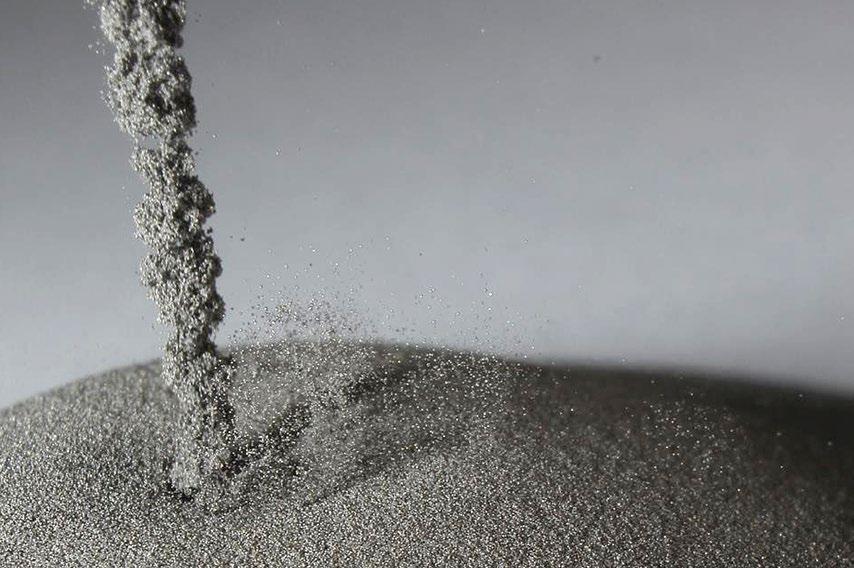

hGears Suzhou plant earns ISO 45001 certification
hGears AG, a global manufacturer of high-precision gears and components headquartered in Schramberg, Germany, has announced that its Chinese facility, located in Suzhou, has earned ISO 45001 certification.
ISO 45001 is an international standard that specifies requirements for an occupational health and safety (OH&S) management system. It provides a framework for organisations to manage risks and improve OH&S performance.
The Suzhou plant, with around 200 employees, offers both Powder Metallurgy and machining operations.
“This certification recognises our dedication to maintaining the highest standards of occupational health and safety management systems and reflects our ongoing efforts to ensure a safe and secure work environment for our valued employees,” the company said in a statement. “Congratulations to our exceptional Suzhou team for their hard work in attaining this milestone!”
Earlier this year, the company celebrated its twentieth anniversary in Suzhou.
www.hgears.com
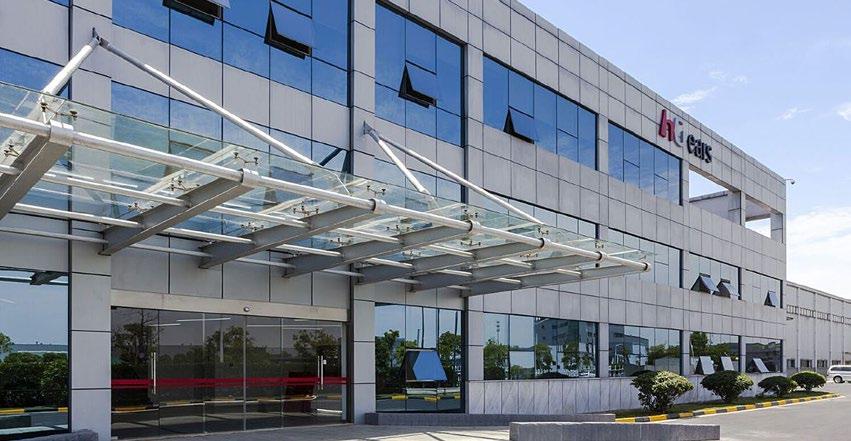
Plastometrex partnership brings its mechanical testing systems to Japan
Plastometrex, headquartered in Cambridge, UK, has announced its strategic expansion into the Japanese market through partnerships with Kobe Material Testing Laboratory (KMTL), based in Harima, Hyogo, and AeroEdge, based in Ashikaga, Tochigi.
“This strategic collaboration with KMTL and AeroEdge is a testament to our commitment to innovation and to our continued global expansion,” stated Mike Coto, CCO, Plastometrex. “Japan represents a vibrant and dynamic market, and our partnership with these two esteemed companies
will allow us to deliver cutting-edge solutions that drive progress and transformation in metal testing and Additive Manufacturing.”
Under the partnership, KMTL has taken delivery of a Benchtop Plastometer, the first Plastometrex device to be shipped to Japan. With the new testing equipment, KMTL will now be able to obtain metal stress-strain curves, measured by the device from indentation test data, in less than five minutes.
“We are delighted to be able to introduce the Plastometer to our client base across Japan,” added Nobuhito Tsurui, Executive Vice
Mimete partners with CIM 4.0 network for transition to Industry 4.0
Metal powder manufacturer Mimete SrL, a division of the Fomas Group headquartered in Osnago, Italy, reports it is now a partner on the Competence Industry Manufacturing (CIM) 4.0 network. CIM 4.0 is aimed at supporting Italian businesses in the transition to Industry 4.0.
In an effort to develop a worldclass innovation hub, CIM 4.0 has established numerous strategic partnerships, connecting national and international industrial and service players. The collaboration agreement with Mimete will enable CIM 4.0 to incorporate additional expertise, helping to foster the development of sustainable applications.
“For Mimete, sharing ideas, knowledge and passion is fundamental to inspire significant innovation and to promote change. Being part of CIM 4.0 – Competence Center is another step in this direction,” stated Jacopo Guzzoni, Managing Director of Mimete.
www.mimete.com
President, KMTL. “The technology will allow our customers to measure critical mechanical property data from small and challenging-to-test samples for the first time. This will enable them to design, manufacture, and repair their products with greater efficiency and confidence.“
AeroEdge will be among the first to use KMTL’s new Benchtop Plastometer. “We are excited to support the introduction of this transformative testing technology to the Japanese market where it will play an important role in supporting the continued adoption of AM in the region,” stated Kazuhiro Mizuta, Managing Director, AeroEdge.
www.plastometrex.com
www.kmtl.co.jp
www.aeroedge.co.jp

Plansee China celebrates its tenth anniversary
The Plansee Group, headquartered in Reutte, Austria, has celebrated the tenth anniversary of Plansee China’s Shanghai production site with an official ceremony attended by representatives from the Austrian consulate in Shanghai and the Lingang Special Area government, as well as customers, partners, the management team, and long-term employees.
The Shanghai plant has been crucial to the company’s global expansion strategy since its inception. In 2013, around fifty Plansee employees from around the world contributed to establishing the site, implementing the latest technologies.
Andreas Feichtinger, Managing Director at Plansee HPM, emphasised that a clear vision, hard work,
and tenacity have played key roles in a company’s success. “Plansee’s success comes down to our proximity to our customers,” he stated. “We have formed strong relationships within our global network that allow us to develop innovative material and technological solutions based on molybdenum and tungsten.”
Richard Cheung, Managing Director at Plansee Shanghai, added, “We want to be a secure, attractive, and reliable employer while also doing our part to protect the environment. In addition, we want to help our customers achieve their sustainability targets. That’s why we are focusing on ongoing innovations, both at our production site in China and at our locations around the world.”
www.plansee.com
Registration opens for PowderMet2024 and AMPM2024
The Metal Powder Industries Federation (MPIF) has announced that registration is now open for PowderMet2024 and AMPM2024. The events are scheduled to be held June 16-19 in Pittsburgh, Pennsylvania, USA.
PowderMet2024 serves as a platform for professionals from the complete Powder Metallurgy supply chain, including metal powders, compacting presses and sintering furnaces, as well as consulting and research service providers.
AMPM focuses on metal Additive Manufacturing and will feature industry experts presenting the latest technology developments in the field.
www.mpif.org










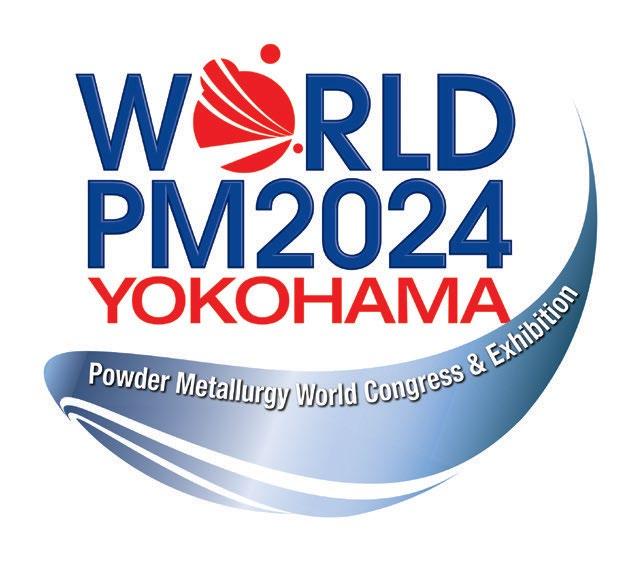


From powder modification to rejuvenation: Fluidised Bed Reactors in metal powder production and Additive Manufacturing
Fluidised Bed Reactors (FBRs) will be new to many in the Powder Metallurgy and Additive Manufacturing industries. The technology offers a host of operational features that are useful in both metal powder production and in instances where batches of powder may need to be ‘rejuvenated’, or brought back into specification. In this article, Bill Hopkins, Managing Director, Phoenix Scientific Industries (PSI) Limited, introduces the concept of FBRs and considers current and future applications for metal powder producers and users.
It is just over a hundred years since Fritz Winkler made the first industrial application of a Fluidised Bed Reactor (FBR) for a coal gasification process [1]. This was followed by applications in catalytic cracking of oils and processing of arsenopyrite ores in the late 1940s and the calcination of aluminium hydroxide on an industrial scale in the 1960s.
By no means is the application of fluidised beds confined to metals or mineral processing. Fluidised beds are extensively used in the food processing industry for the drying and freezing of small-scale food items such as peas, shrimp and powdered products.
This article is not intended to be exhaustive in terms of describing the thermophysics or fluid mechanics of FBRs – a good reference work is provided by [2]. Rather, it is intended to introduce the Powder Metallurgy practitioner to the characteristics and applications of FBRs in the PM and engineering ceramics industries.

PSI)
-
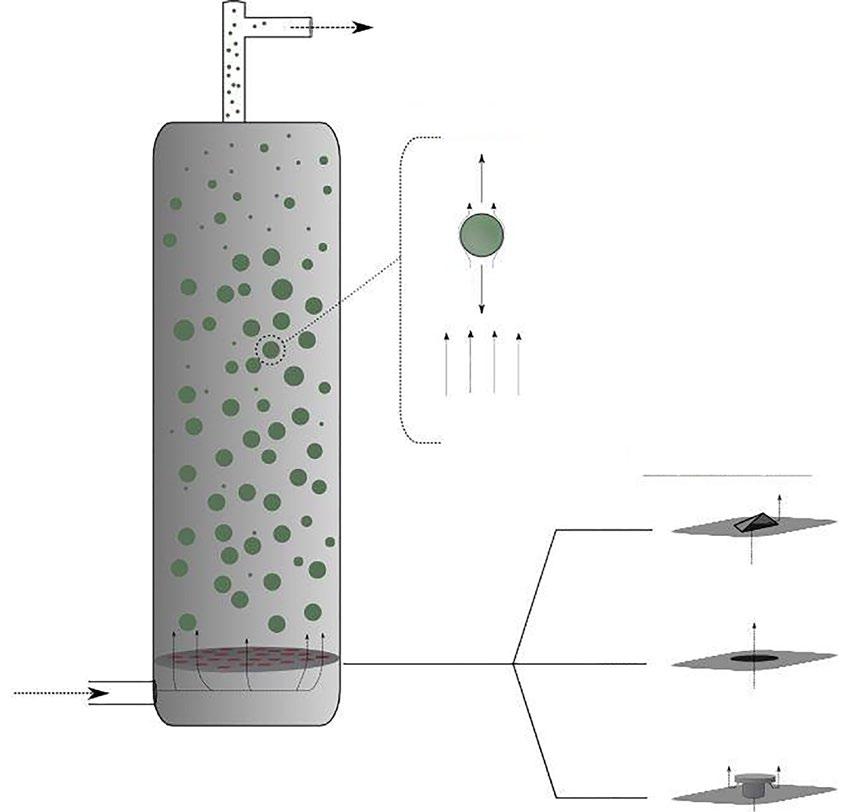
“An important point to consider is that FBRs scale, meaning that they can be designed and constructed to provide small research units to test new applications up to the largest production facilities that the Powder Metallurgy industry could demand.”
The FBR process
The basic concept is simple and is shown in Fig. 2 [3]. A container, normally cylindrical and equipped with a distributor plate near the base, supports a bed of particles. Gas is fed into the base and flows upwards, suspending the particles in various states of agitation. The gas exits the top of the container and may or may not carry some of the
particulate with it, depending on the design objective.
The conditions in the FBR can be varied over a wide range of parameters, including gas flow rate, gas type, temperature, pressure and methods of introduction/extraction of powders from the bed.
An important point to consider is that FBRs scale, meaning that they can be designed and constructed to provide small research units to
test new applications through to the largest production facilities that the Powder Metallurgy industry could demand. In the author’s opinion, there is little point in developing a novel materials process without keeping industrial-scale production in mind (the laser is one obvious exception when considering its initial development and then its much later multiple applications.)
Powder processing
So, why are FBRs so attractive when processing powders? The answer is threefold: Firstly, the fluidising gas makes instant and uniform contact with the particulate phase it is suspending in the gas flow. Secondly, the gas moves very quickly in relation to the particles, meaning that, if a chemical or thermal interaction between the two is intended, then this is rapid. Finally, because the particles are moving very quickly and mixing well, they experience the intended thermal and chemical environments in a very uniform manner, with no untreated particles.
Powder sitting in a heated cylindrical retort is supported by a distributor plate, which may be a gas-permeable ceramic or metallic disc, through which the fluidising gas is pumped and which levitates the powder. Separate pipes or drilled holes may also be employed.
The bed can be heated, either by an external gas heater or by heating the containing retort walls. Reactive gases can be introduced below the distributor plate or by separate pipes (not shown in Fig. 3) directly into the bed. Powders can be introduced from above by a hopper and later extracted by the same pipework and passed through a cyclone for permanent collection or returned to the bed for further processing. Gas flow rates may be controlled by the judicious control of gas ingress, exhaust and bed operating pressure, thus also enabling sub-atmospheric operation.
Rapid quenching facilities may be incorporated before the powder
Fluidiser gas out
Recirculate
Filter Vent Pump
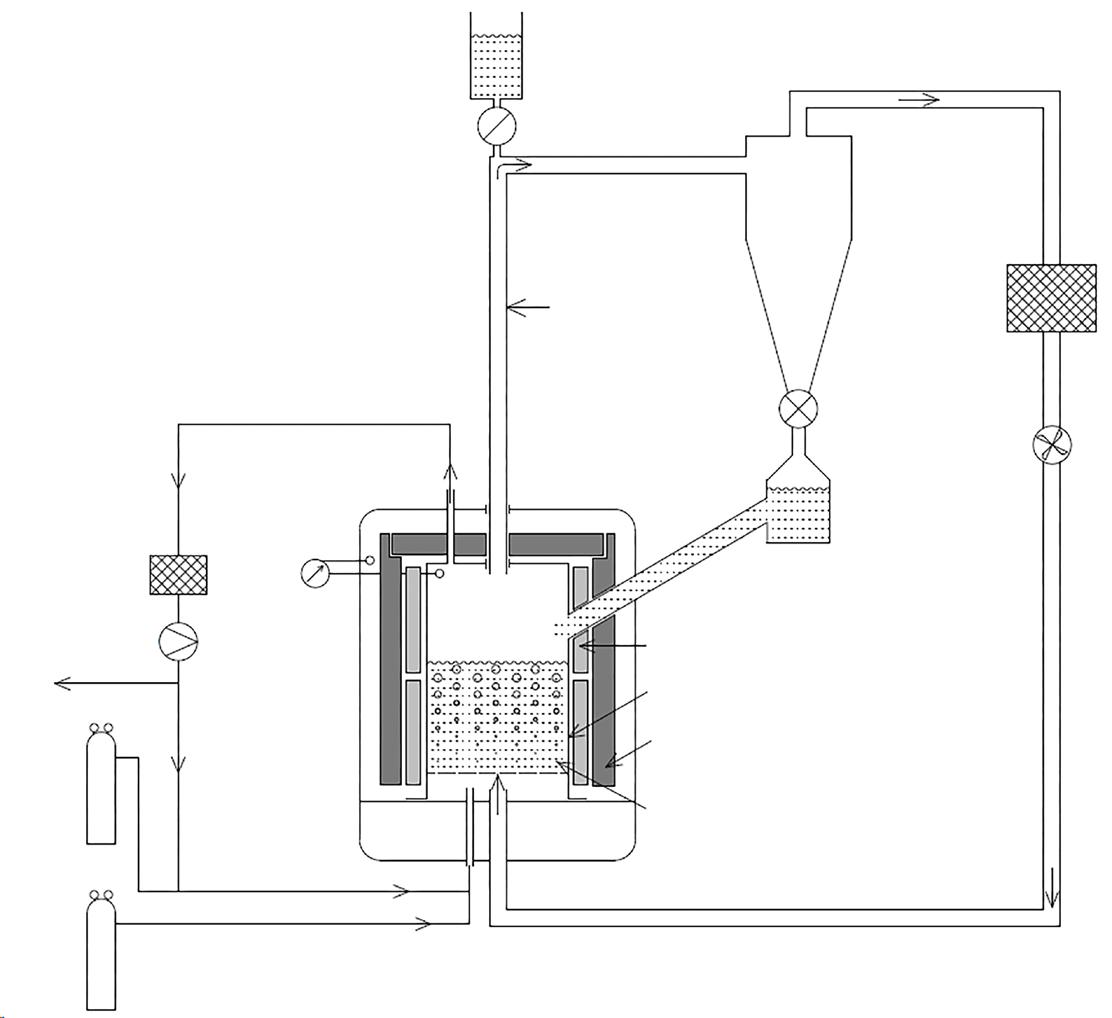
Fluidiser gas in Reactive gas in
enters the cyclone (Fig. 3). Other mechanical means, such as stirrers and ultrasonic agitation, can be added to refine the dynamic interaction between particles and the gas. Needless to say, sophisticated process control facilities can also be added to allow automatic control and process data capture.
FBRs can operate under a wide range of flow conditions in terms of the velocity and kinetic energy of the vertical component of the gas stream velocity suspending the particles. These can range from very low velocity flows, which barely distort the bed apart from the removal of fines, through ‘bubbling’ fluidised beds, to those with gas flows so rapid that powders are continuously
Powder hopper
Cyclone
Filter
Extract tube
Fan
Powder collection
Heating elements
Retort
Thermal insulation
Gas bubbles
removed from the bed and returned – completely or partially – to match fresh powder input to generate what is, in effect, a continuous process.
As stated above, the size of particles processed in FBRs can vary
from a few microns to several millimetres in size, although the PM industry is mostly concerned with sub-150 μ m particles. Geldart helpfully characterised particulates into several types depending on their size
“Rapid quenching facilities may be incorporated before the powder enters the cyclone. Other mechanical means, such as stirrers and ultrasonic agitation, can be added to refine the dynamical interaction between particles and the gas.”


and the density difference between the particulate and the fluidising gas. Fig. 4 shows four categories [4].
A powder technologist will quickly recognise that most powders of interest are of the Cohesive Type C category with some in the Aeratable Type A category. Type C powders are ‘cohesive’ because the motion of powders in the bed is dominated by subtle interactions between the particles, relating to surface energy and, on a smaller scale, interatomic effects (e.g. Van der Waals force). If modification of the characteristics of fine metallic
and ceramic powders is to be attempted by FBR treatment, these forces need to be considered and understood.
Another characteristic of FBRs is the ‘minimum bubbling velocity.’ In simple terms, this relates to the minimum flow of gas passing through the bed that agitates the particles sufficiently to allow the intended process reaction to take place quickly and efficiently.
The encouraging news, however, is that the physics of FBRs is well developed, leaving the PM developer only the task of applying this science to their chosen application.
“...the ability of FBRs to chemically modify the existing surface of powders and then coat powders with a wide range of compositions can be one of the most powerful applications of their capabilities.”
Operational features of FBRs useful for metal powder producers and users
The heat treatment or chemical modification of powders
Powders can be heat treated, meaning heating and cooling at the desired rate without the sintering that might be expected in a static bed of powder. Quench rates in the region of 10 5 - 10 6 Ks -1 are used in the author’s research facility. This simple heat treatment is used to modify the bulk properties of powders. However, the ability of FBRs to chemically modify the existing surface of powders and then coat powders with a wide range of compositions can be one of the most powerful applications of their capabilities.
The semi-vacuum processing of metal powders
FBRs can also be operated at subatmospheric pressure as required to enable semi-vacuum processing. Naturally, as pressure reduces, fluidising gas velocities have to be substantially increased to keep powder agitation and processing rate in a commercially viable regime.
If processing powders using reactive gases with the intention of coating them, then many useful reactions are accelerated in a low-pressure regime for thermodynamical reasons.
Post-atomisation powder improvement
Many primary powder production processes result in a particulate that is ‘caked,’ ‘agglomerated’ or ‘satellited’ – all practical expressions of powders that need improvement before proceeding to the next process step. FBRs can take products from the previous powder production process and usefully condition it to make it more amenable to the next. An example is water-atomised metal powder that requires drying and can benefit from oxide reduction.
Custom mixing of different powder types
Processing of powders in an FBR does not preclude the mixing of powder types. If an intimate mix of two powder types is required, then a simple mechanical blender might be the instinctive response. FBRs, by readily controlling temperature and gas chemistry, can offer advantages.
The removal of ‘nuisance’ fines
Although size grading of powders is typically achieved using sieves and cyclonic gas classification techniques, FBRs can also assist. In the process of suspending powders in an FBR, the smaller particles naturally rise to the top of the bed. With careful adjustment of flow characteristics, nuisance fines can be ‘vacuumed’ off. This in itself is not suggested as commercially useful, but, as an adjunct to other processing steps, performed simultaneously, it may be valuable.
Additive Manufacturing: opportunities for powder rejuvenation
Practitioners of Powder Bed Fusion metal AM will be familiar with the increase in oxygen levels in unfused powder that is reused in subsequent builds. This occurs because any oxygen in the build atmosphere that contacts a metal particle close to the melt pool, but not incorporated in the build, is heated and will tend to oxidise.
Eventually, oxygen levels rise to an unacceptable level and powders have to be partially or completely replaced. Powders, particularly if they contain valuable alloying elements, can be recycled (for example, by melting and re-atomisation), but the scrap value is often minimal and powders are difficult to remelt.
In a world of high energy costs and strategic scarcity of certain metals, it is advantageous to recondition powders and thus short-circuit the recycling process if this can be achieved using FBRs. It is easy to
“In a world of high energy costs and strategic scarcity of certain metals, it is advantageous to recondition powders and thus short-circuit the recycling process if this can be achieved using FBRs. It is easy to imagine the use of reducing reagents contained in the fluidising gas of an FBR to lower oxygen levels to bring metal AM powders back into specification and allow their immediate reuse.”
imagine the use of reducing reagents contained in the fluidising gas of an FBR to lower oxygen levels to bring metal AM powders back into specification and allow their immediate reuse.
This thinking need not be confined to used powders. It can be applied to various metal powders which – by virtue of their method of manufacture (e.g. air- or water-atomised powders) – have undesirable surface oxide levels to start with, thus precluding their use when more expensive gas-atomised powders are the conventional choice.
Another advantage is that a powder supplied by a known and reliable manufacturer may have particular characteristics (e.g. close tolerances on composition or morphology) that a second supplier may not reliably meet. On the basis of ‘better the devil you know’, the ability to get more use from a powder that has been through a costly QA and qualification process by the application of a powder ‘refresh’ operation has cost advantages.
Although not particularly commercially advantageous to primary powder manufacturers, the ‘green’ element of this methodology may attract support from many directions. ‘Better to recycle than replace’
is increasingly popular with funding agencies supporting the circular economy.
Fluidised beds – although not as vigorous as blenders in terms of particle:particle kinetic interactions – have a milling effect in terms of de-satelliting and reduction in agglomeration.
Powder coating from the gas phase
Readers may be familiar with CVD (Chemical Vapour Deposition), the process whereby solid surfaces are exposed to a reactive gas and a chemical reaction occurs at the interface, causing a solid layer of a desirable composition to be deposited.
If progressive oxidation of a metal powder in PM processing is a problem, then it is easy to imagine a range of coatings which resist oxidation and are compatible with the overall desired alloy chemistry. Likewise, in sintering processes, the presence of a transient liquid phase can enhance the sintering rate and final density in the product.
Certain high-performance powders alloys require alloying elements that are problematic to incorporate in the basic melting and


atomisation process for thermodynamic reasons. Some alloying elements are aggressive to the ceramic crucibles in which they are melted, so introducing a desirable alloying element into the bulk powder composition by a CVD coating can be advantageous.
Of course, diffusion distances and available times in the molten pool during Additive Manufacturing must be suitably arranged if coatings are to be efficiently incorporated.
The degree to which powders in a fluidised bed absorb the energy of a laser or electron beam in metal AM is strongly influenced by the emissivity and absorptivity of the powder surface, demonstrated by Sih and Barlow [5]. For example, the emissivity of aluminium varies from 0.09 for polished sheet to 0.77 for a black anodised surface, so it is easy to see that CVD coatings applied in a FBR to modify emissivity of powder can be advantageously applied to modify melting behaviour and enhance build speeds in metal Additive Manufacturing.
Powder coating with solid phases
“FBRs can be used conveniently to coat metal powders with hard phases in the manufacture of dispersionstrengthened alloys. Smith et al [6] demonstrated the fabrication of an oxide dispersion-strengthened alloy named GRX-810 by inventors the NASA Glenn Research Centre.”
FBRs can be used conveniently to coat metal powders with hard phases in the manufacture of dispersion-strengthened alloys. Smith et al [6] demonstrated the fabrication of an oxide dispersionstrengthened alloy named GRX-810 by inventors the NASA Glenn Research Centre. This is an equiatomic NiCoCr ‘medium entropy’ gas-atomised alloy powder in the size range 10–45 μ m coated with 100–200 nm Y 2O 3 powder in an acoustic mixer at the rate of one weight percent of dispersoid.
The powder was additively manufactured via Laser Beam Powder Bed Fusion (PBF-LB) into test pieces, which demonstrated exceptional high-temperature performance. The notable features of the fabrication method are the ability to incorporate useful
amounts of dispersion hardening components without expensive and time-consuming milling and that the second phase was dispersed in the melt pool to a satisfactory extent.
This is a useful adjunct to the inherent economic advantages of AM to manufacture complex shapes in high-temperature engine components.
FBRs can be equipped with highenergy acoustic transducers to increase the energy of interparticle collisions which, in combination with heating and active gas additions, can accelerate the adhesion of dispersoid additives to the bulk metal powder to provide a scalable and low-cost method to manufacture these powders in bulk.
FBRs installed at PSI and recent activity
PSI maintains an in-house capability at its base in Hailsham. The FBR shown at the start of this article (Fig. 1) has a capacity of 75 kg of steel-density powder and a temperature capability of 1,100°C. It is equipped with extraction facilities to remove powder particles from an actively fluidising bed and quench them at the rate of 10 5 - 10 6 Ks -1 for powder heat treatment.
It is also equipped with facilities for active gas addition and, by virtue of having a process retort contained inside a vacuum and pressure-rated water-cooled chamber, gaseous products of CVD reactions can be safely controlled and disposed of.
Recent projects undertaken by the R&D division of PSI include:
Solution heat treatment of an Al alloy for Cold Spray
We have undertaken the solution heat treatment of an aluminium alloy powder designed for Cold Spray repair of battle-damaged equipment, enabling rapid redeployment in the field. Welding repair might cause a heat-affected zone (HAZ), which may compromise the parent structure and stress-bearing capability. A naturally ageing,
“We have enabled the recovery of tonnes of copper alloys used to manufacture rocket motor components by AM by virtue of these containing out-of-spec oxygen levels. This was a rapid way of short-circuiting the alternative expensive and energyintensive method of remelting scrap AM powders.”
precipitation-hardening composition applied by Cold Spray avoids these compromising alternatives.
Copper AM rocket alloy recovery
We have enabled the recovery of tonnes of copper alloys used to manufacture rocket motor components by AM by virtue of these containing out-of-spec oxygen levels. This was a rapid way of short-circuiting the alternative expensive and energy-intensive method of remelting scrap AM powders.
Optimising EV battery materials
The electric vehicle industry is currently hampered by the low energy density of Li-ion batteries used in electric cars. The anode of such batteries is carbon-based. Silicon is theoretically able to contain many times the amount of lithium ions, which travel to and fro in the charge-discharge cycle, thus offering the potential of batteries to carry much more charge. The drawback is that the absorption of lithium ions into silicon causes a volume change, which destabilises the physical structure of the anode components. PSI has used its in-house FBR to coat anode powders with a range of carbon allotropes via CVD, which moderates this destabilising effect.
Current activity and developments
Current projects include the removal of hydrogen from irregular titanium hydride powders before spheroidisation to produce powders suitable for Additive Manufacturing into aerospace components. Powders of particle sizes commercially attractive to the PM market are challenging to process in FBRs because of their cohesive nature as identified in Geldart’s classification (type C).
Following the helpful advice of and support from Professor M Bradley of Greenwich University in the UK, PSI’s in-house system is equipped with a low-temperature analogue of an FBR. This is simply a plastic tube (Fig. 5), where the behaviour of powders in terms of their cohesive fluidisability can be assessed simply and quickly at room temperature.
For example, the determination of U mf, the minimum velocity of fluidising gas to enable a powder bed to function advantageously in the PM process terms, can be measured. At higher temperatures, the prediction of bed behaviour, with different fluidising gas mechanical properties (e.g. altered viscosity and density) can be predicted, thus enabling higher temperature fluidising behaviour to be quickly assessed.

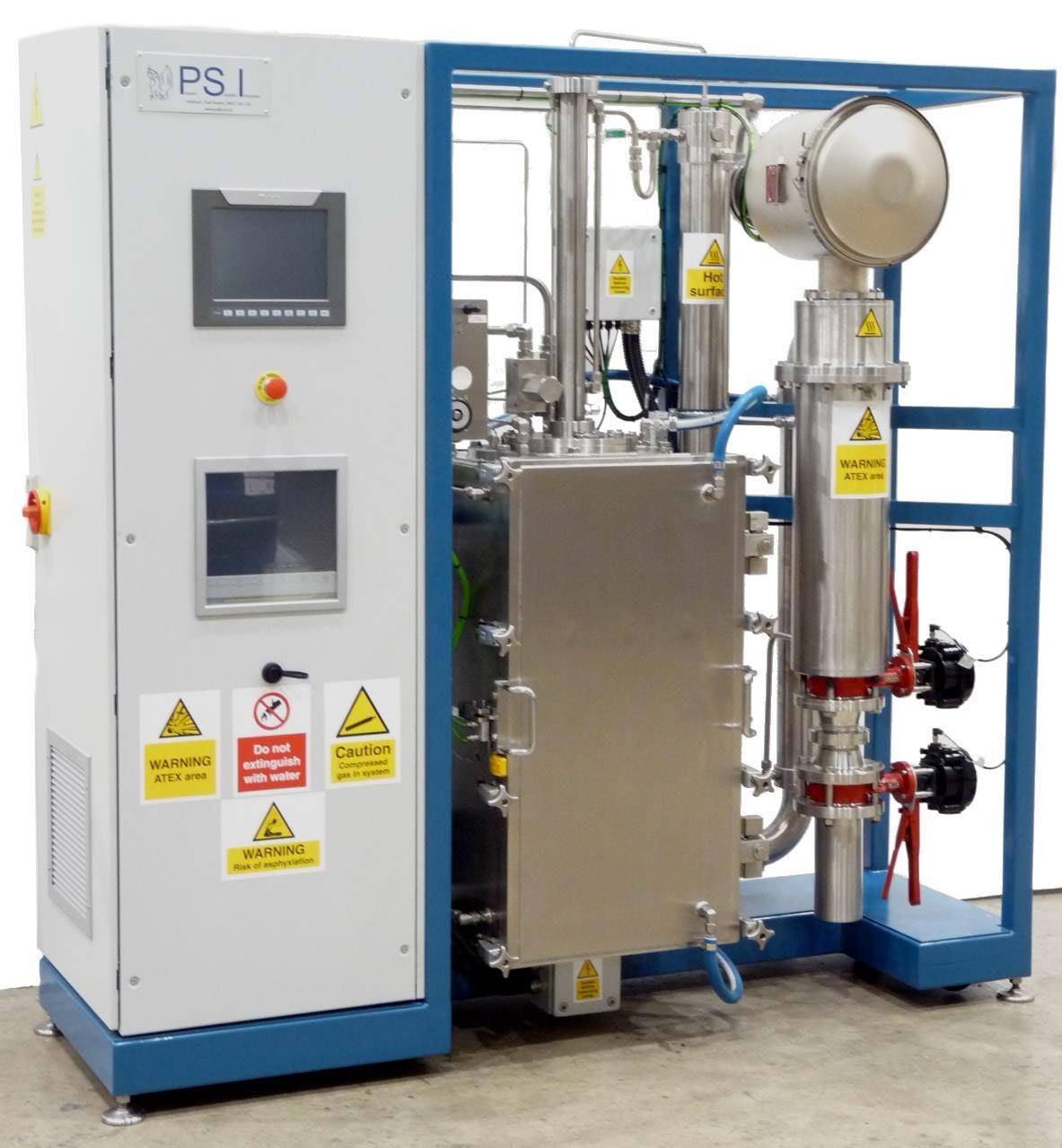
Available equipment
PSI has commenced the commercialisation of FBRs for the PM industry. Its first offering, an R&D scale unit named Flowbed, seeks to offer a range of capabilities to satisfy a wide number of research topics within the PM industry (Fig. 6). The first unit is due to be shipped to a Canadian university for the heat treatment of metal powders.
PSI’s business approach to developing technology for Advanced Materials aimed at the PM industry is that, if a novel process technology emerges, it must demonstrate from the outset the ability to scale to the extent that commercial production is attractive.
As befits any R&D machine, the full range of process conditions anticipated for the future must be provided. Flowbed can be configured to provide parameters such as temperatures to 1,800°C, pressures from vacuum to positive pressure, subject, of course, to the fluidising properties of the gas flow, and a range of inert and active process gases.
Finally, although Flowbed is targeted towards Powder Metallurgy researchers, those in control of R&D capital budgets might consider that the tool is also capable of processing materials other than powders under vacuum and high-temperature for processes such as sintering, vacuum brazing, CVD coating of bulk components and many others.
“PSI’s business approach to developing technology for Advanced Materials aimed at the PM industry is that, if a novel process technology emerges, it must demonstrate from the outset the ability to scale to the extent that commercial production is attractive.”Author Bill Hopkins Phoenix Scientific Industries Ltd –Advanced Process Solutions
15 Apex Business Park, Hailsham, East Sussex, BN27 3JU United Kingdom
+44 (0)1323 449 001 info@psiltd.co.uk www.psiltd.co.uk
References
[1] Grace, J.R., Leckner, B., Zu, J. and Cheng, Y. (2005). Fluidised Beds. In: C.T. Crowe, ed., Multiphase Flow Handbook. Boca Raton, Florida, United States: CRC Press, p.71.
[2] Yang, W.-C. (2003). Handbook of Fluidization and Fluid-Particle Systems. CRC Press.
[3] User A1. (2008). A diagram of a fluidized bed. Available at: https://en.wikipedia.org/wiki/Fluidized_bed#/ media/File:FluidisedBed.svg [Accessed 16 Jan. 2024].
[4] Khawaja, H. (2015). Geldart classification of particles. Available at: https://www.researchgate.net/figure/ Geldart-classification-of-particles-solid-lines-showsthe-boundaries-of-Geldart-A-B-and_fig1_284705731 [Accessed 15 Jan. 2024].
[5] Sih, S.S. and Barlow, J.W. (2004). The Prediction of the Emissivity and Thermal Conductivity of Powder Beds. Particulate Science and Technology, 22(4), pp.427–440. doi: https://doi.org/10.1080/02726350490501682
[6] Smith, T.J., Thompson, A.S., Gabb, T., Bowman, C.L. and Kantzos, C. (2020). Efficient production of a highperformance dispersion strengthened, multi-principal element alloy. 10(1). doi: https://doi.org/10.1038/ s41598-020-66436-5

Accelerate
We Convene...
The most brilliant minds from industry and academia We
High-value, high-impact collaborative projects
America Makes is the leading collaborative partner for additive manufacturing and 3D printing technology research, discovery, and innovation in the U.S. Structured as a public-private partnership, we innovate and accelerate AM/3DP to increase global manufacturing competitiveness.
Focused on additive manufacturing, America Makes is the first institute of the Manufacturing USA® network.





Retech: Enabling the atomisation of
reactive and refractory
alloys at
substantially higher levels of productivity and lower cost
Retech, a division of SECO/WARWICK Group, has developed a method for the gas atomisation of a wide variety of reactive and refractory alloys, amorphous metals, and superalloys. Called Plasma Gas Atomising (PGA), this technology, states the company, promises a significant increase in production rates. In this article, Retech’s Dr Aamir Abid explores the technology and its advantages for metal powder producers and considers its potential to substantially reduce the cost of metal powders for Powder Metallurgy and Additive Manufacturing applications.
As readers of this publication are well aware, Powder Metallurgy has become an increasingly popular solution for the manufacture of complex parts that would not be feasible via traditional manufacturing methods such as casting, subtractive manufacturing (machining), or forging. Historically, PM was a sensible solution only if making enough parts to justify the overhead of compaction dies.
More recently, however, the advent of Additive Manufacturing (AM) has changed these economics, making many Powder Metallurgy applications a viable solution, especially for small batches and prototypes. In some instances, however, the cost of metal powder production still makes PM prohibitively expensive for all but the most high-value products. This is particularly the case for reactive and refractory metals, the class of metals requiring vacuum or inert gas atmosphere metallurgy; titanium will frequently be used here as the representative example.
What makes titanium a fitting bellwether? It has the highest demand within this class of metals. It is emblematic of the controlled atmosphere melting industry in general. Furthermore, it has even
become something of a status symbol and a luxury signifier.
Despite growing interest in titanium, the cost of producing it – including its many alloys – has stood in the way of widespread
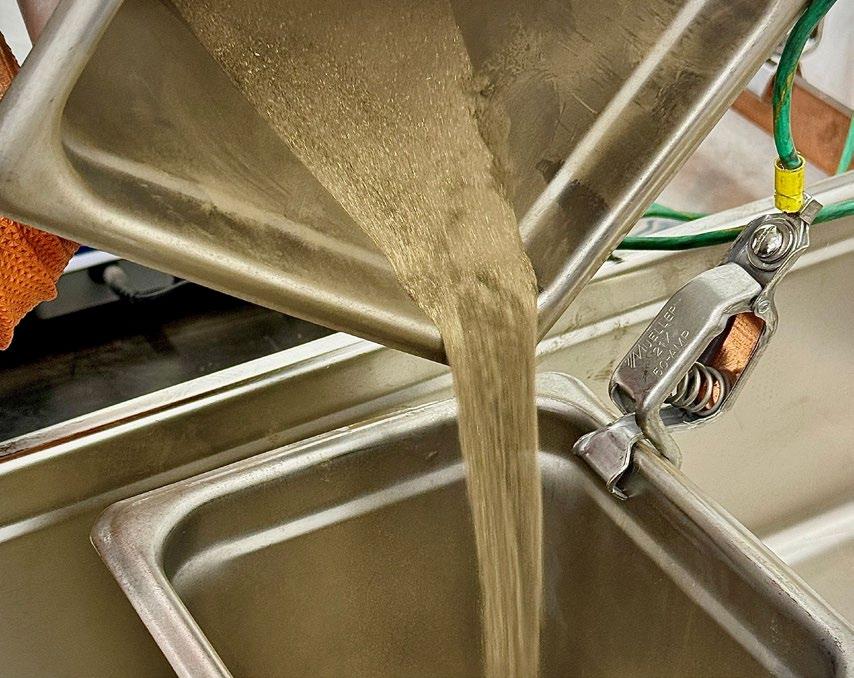

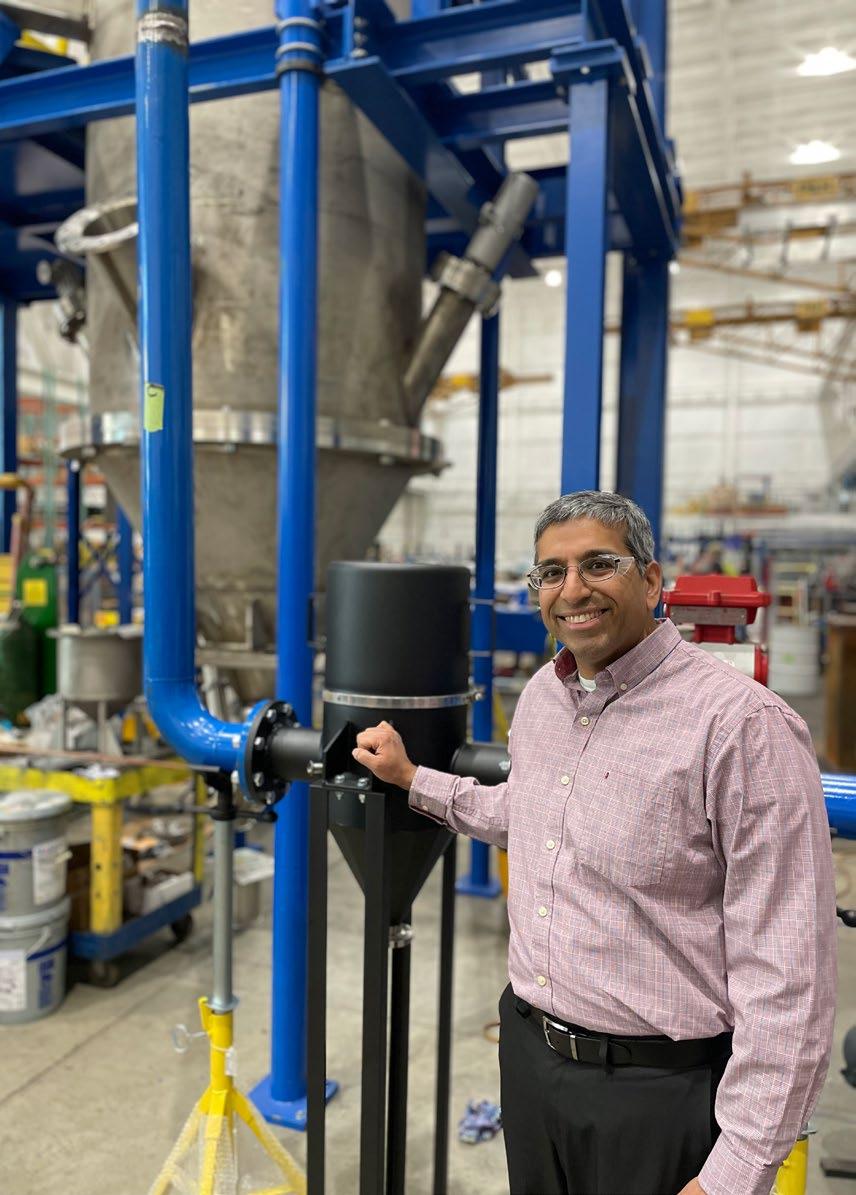
use. Efforts to reduce the cost over the years have been on two fronts: developing less costly methods of extraction from the raw ore (the Kroll process) and finding less costly manufacturing methods to produce intermediate forms such as powder, billet, plate, sheet, and pipe stock. Producing the sponge alone costs about three to six times more than producing the equivalent weight of stainless steel, a number that does not even include further processing into the intermediate stock.
The history of titanium
Titanium was discovered in the 1700s; its tenacious affinity for bonding with other elements is why it was named after the Titans, the original gods of Greek lore. Lacking any cost-effective means of production before the invention of the Kroll process, however, titanium remained mostly just a discovery on the periodic table, a curiosity for chemists to tinker with. It remained that way until the middle of the 20 th century, when the Kroll process enabled large-scale, albeit very expensive, production. Even still, that production was a fiercely guarded secret as it was a strategically valuable asset in the Cold War, being used in topsecret aircraft, submarines, and the like.
“For use in metallurgy, though, the challenge is that titanium bonds so strongly with oxygen that the process to un-bond it, the Kroll process, requires costly intermediate reagents and lots of energy just to produce the elemental titanium precipitate form, called sponge.”
Titanium is not a rare element. It is the ninth most abundant element in the earth’s crust. It is used primarily in its cheap and plentiful oxide form (titanium dioxide) as the biologically inert replacement for lead as a whitening agent in paint, cosmetics, and even foods. For use in metallurgy, though, the challenge is that titanium bonds so strongly with oxygen that the process to un-bond it, the Kroll process, requires costly intermediate reagents and lots of energy just to produce the elemental titanium metal, called sponge.
The titanium industry has actively explored lower-cost alternatives to the Kroll process. The Armstrong process has shown the most potential. In the Armstrong process, ore
is dissolved in an acid, which is then electrolysed and spray dried to eventually yield a precipitate that is in powder form, as opposed to the irregular chunks of sponge. In some Armstrong trials, this powder has even shown to be PM quality without further refining. If this process could scale up to replace the Kroll process, it would indeed be a major step toward reducing titanium production costs on both the extraction and powder-producing steps. But even still, for advanced manufacturing methods such as AM and Metal Injection Moulding (MIM), powder quality requirements limit the use of raw powder. Irregular titanium feedstock would need to be further processed to meet these stringent requirements. This brings us to the other front in the effort to reduce the cost of titanium production: reducing the cost of intermediate forms, more specifically, atomisation.
Engineers utilise powder-based titanium manufacturing processes because high-value aerospace components such as jet turbine blades or implantable medical devices benefit from the resulting unique physical properties. Most current applications of titanium are uses for which its superior qualities have no alternative: strength:weight ratio, yield strength and chemical stability at high temperatures, biocompatibility, and shape memory alloys. Each of these examples make titanium a metallurgical necessity.
But what happens when that cost is reduced, and the cost/benefit analysis can afford to consider applications more mundane than lifesaving necessities? In recent years, advances in Additive Manufacturing processes have brought part manufacturing costs down, but the cost of powder input remains high. Lowering the cost of powder will have a substantive impact on lowering the overall part cost for these applications and further increase powder demand for these new markets.
So at what price point does it become worthwhile to choose titanium when it is less than a necessity? This article will discuss
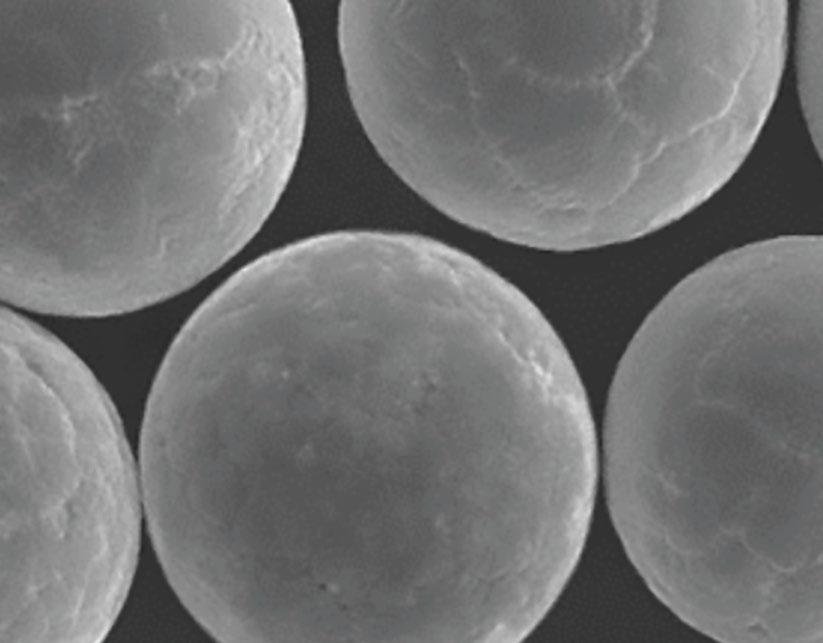

“In recent years, advances in Additive Manufacturing processes have brought part manufacturing costs down, but the cost of powder input remains high. Lowering the cost of powder will have a substantive impact on lowering the overall part cost for these applications and further increase powder demand for these new markets.”
various methods of titanium powder production and the bottlenecks that currently contribute to the high cost of titanium powder production – along with atomisation of other reactive and refractory alloys –pricing them out of reach for all but the most necessary applications or luxury indulgences.
We will provide some speculation of the markets in which other alloy solutions will become economically possible where no solution existed before. Retech is already facilitating these solutions in materials
that previously had no viable industrial-scale method of production, but many such applications involve fiercely guarded trade secrets.
Finally, we will conclude with the applications that have been waiting in the wings for their cue that there is now an economically-viable solution for those applications. Additionally, we look at the innovators for whom the current limitations of price and availability have created barriers to entry, and what they might be able to do once those barriers are lowered.

Atomisation technologies
As Powder Metallurgy has evolved and advanced, so have atomisation methods and equipment (Fig. 4). Atomisation techniques vary, but they tend to be built around two basic steps: a method to melt the metal and a method to disperse a stream of molten metal into fine droplets.
The earliest atomisers used a jet of water to disperse and solidify a stream of molten metal. The powder
size and shape are highly irregular and inconsistent, and predominantly used in the press and sinter process. Water atomisation is entirely unsuitable for reactive metals and is only worth mentioning here as a point in the development of the metal powder industry.
In later atomisers, gas atomisation methods tap the bottom of a ceramic crucible, dispersing the melt stream with jets of inert gas as it pours from the nozzle. The method is convenient in its ability to
“Plasma melting is not new for Retech, as the company has supplied industry with some of the world’s largest plasma melting systems for several decades. What is new is the ability to leverage several areas of strength and develop a production-scale powder solution for reactive and refractory alloy powders.”
utilise versatile feedstock, including scrap, revert, or virgin material. The powder created is mostly spherical, often with a wide Particle Size Distribution (PSD), and occasional porosity and satellites. This powder is suitable for many Additive Manufacturing techniques, but may not meet the quality control standards for some aerospace applications due to the contamination of powder with ceramic inclusions.
In efforts to improve the PSD, sphericity, and purity, plasma torches were introduced to produce titanium powders. Here, a plasma plume melts the tip of a wire and jets of inert gas disperse the melt into droplets. This method produces a high-quality powder, but requires a costly-to-prepare spool of titanium wire as feedstock.
Other methods use mechanical means of dispersing a melt stream into droplets. Centrifugal atomisers pour the melt stream onto a rapidly spinning plate, flinging droplets outward that solidify before striking the chamber walls.
Comminution reduces powder size by mechanical means of crushing or grinding. It is only suitable for brittle metals that crush rather than flatten.
The resultant powders show limited use in Additive Manufacturing, as they are too irregular in size and shape with poor powder flow and packing properties.
A cure for the unacceptably coarse particle shape from comminution, spheroidisation is a process that takes already atomised irregularly shaped powder and drops it through a heat source sufficient to momentarily remelt the particles just long enough for them to consolidate into a round droplet before resolidifying. While it was a useful step along the path to efficient commercialisation of Powder Metallurgy, the process is too inefficient and slow for commercial viability for most potential end uses.
Retech’s new Plasma Gas Atomisation (PGA) process
Combining the most desirable characteristics of the existing atomisation and melting methods, Retech’s latest atomiser development has the advantage of using a versatile feedstock, the powder quality meets the most stringent industry quality standards for advanced manufacturing verticals (i.e. aerospace, defence, and medical) and has the scalability to exceed the economic efficiency of alternate methods.
Plasma melting is not new for Retech, as the company has supplied industry with some of the world’s largest plasma melting systems for several decades. What is new is the ability to leverage several areas of strength and develop a production-scale powder solution for reactive and refractory alloy powders. For more than a decade, Retech engineers have been developing an integrated turnkey solution that maximises versatility in nearly every metric, allowing for:
A high level of scalability
Excellent scalability is possible, achieving atomisation rates as high as 1,500 kg/hour for Ti-6Al-4V, and calculations indicate the potential


for even larger systems. Exact rates vary depending on alloy.
One bottleneck in reactive and refractory powder production has been ceramic-free melting at scale. The plasma melting method achieves far higher melt rates than previous melting solutions for this class of alloys. The ‘Holy Grail’ of reactive
and refractory metal powder production has been an atomiser that can produce ultra-high purity powder at rates comparable to those achieved by steel and nickel atomisers. This is precisely what Retech has achieved with the Plasma Gas Atomisation process. Plasma Arc Melting (PAM) is a mature technology that Retech

“Because Retech’s Plasma Gas Atomisation technology is PAM-based, it can utilise any feedstock format that can be used for PAM. Since PAM has been in use for decades, numerous feeder methods have already been well established.”
has pioneered since it commercialised the first industrial scale system, for titanium, in 1980. This has been successfully used to produce aerospace-grade titanium products in the order of thousands of tons per year. The latest advancements in Plasma Gas Atomisation technology provide the industry with a production scale solution that is the culmination of over ten years of diligent research and development focused on overcoming the limiting factors when atomising reactive and refractory powder.
Even for applications where exceedingly high production rates are not warranted, Retech’s technology is still available as a cost-effective, low-maintenance atomisation option.
Any metal or alloy is suitable for Plasma Arc Melting
Titanium may be the most prominent example of reactive/refractory metals to be plasma gas atomised, but the process applies to any other metal in these classes. Plasma torch temperatures can exceed 10,000°C, making them capable of melting almost all materials. Even in its unalloyed, elemental form, titanium has many desirable structural, chemical and thermal characteristics. Some of the other metals have fewer applications requiring mass production in their pure elemental state, but instead are prized for their alloying advantages, enabling an already
versatile metal like titanium to be fine-tuned or dialled in for exact properties.
For some metals, atomising the material for Powder Metallurgy may be the only viable process for creating usable alloy forms. This can occur as a result of certain desirable properties that also involve other, inconvenient properties.
A wide range of feedstock formats
Retech’s Plasma Gas Atomisation technology is capable of atomising any of the various feedstock forms suitable for plasma hearth melting, including sponge, compacts, recycled scrap, or recompacted revert powder (Table 1). This offers far more than just convenience. Remelting scrap into ingot adds cost to the overall process. For atomisation methods requiring a highly processed bar or wire as a feedstock, the cost of preparing the bar or wire is a significant fraction of the overall cost of production and, by definition, the method is entirely ruled out as a plausible means of atomising alloys too brittle to form stable wires or ingots in the first place. As such, atomising from a wire is prohibitively expensive for many applications and downright impossible for others.
Because Retech’s Plasma Gas Atomisation technology is PAMbased, it can utilise any feedstock format that can be used for PAM. Since PAM has been in use for decades, numerous feeder methods
have already been well established. This shortens the feed process learning curve for customers.
Semi-continuous processing
PGA allows for semi-continuous processing. Utilising an air-lock style feeder system that does not interrupt melting to recharge, the PGA process only needs to pause occasionally when more raw material is added to the tilting hearth.
High purity powders with excellent sphericity
Retech’s plasma hearth design limits both high- and low-density inclusions, resulting in high-purity powders with excellent sphericity and a narrow powder size distribution curve. Powder size distribution will vary for each different alloy. For Ti-6Al-4V, powder mean sizes range from 20-120 μ m, depending on process parameters used.
Simplicity of operation
PGA eliminates clog-prone nozzles, improving reliability and simplifying cleaning and product changeover. Reactive and refractory metallurgy has never been associated with simplicity, requiring pressure chambers, shielded atmospheres, water-cooled crucibles, airlocks, and feed-through seals. Each new advancement in processing requires increasingly technologically involved solutions.
Conversely, Retech invested time and research into developing its plasma gas atomiser so as to produce a technically elegant solution to atomising this class of powders.
Economic implications and context
One of the key benefits of Retech’s Plasma Gas Atomisation process is that multi-ton, productionscale processing of advanced alloy powders is now achievable. The reactive and refractory metal powder industry has been bottlenecked for years by production

Retech: Plasma Gas Atomisation
PGA (Retech) Plasma (wire) REGA* R-CIGA**
Elemental or prealloyed barstock/ ingots, compacts, scrap
Elemental or pre-alloyed wire
Elemental or pre-alloyed barstock
Elemental or pre-alloyed barstock/ingots, dense compacts
(Requires a copper crucible)
volume efficiency limitations. The timing of its release auspiciously coincides with the increasing demand for metal powder by customers.
Understanding how PGA could turbocharge the Powder Metallurgy industry and Additive Manufacturing first requires understanding two different facets of the market and the narrowing gap between them.
The titanium industry got its start in the top-secret world of civil defence. For a time, trade and production of even the raw material
was classified. Titanium was used in secretive jet planes and space race applications where budget considerations were low on the priorities list. Those legacy applications evolved and filtered down to the general aviation industry. Top secrets became trade secrets, and titanium and its alloys became more ubiquitous in the energy production, aviation, naval, and medical implant markets, but they were all still niche applications for titanium. Powderbased part producers started here
“Understanding how PGA could turbocharge the Powder Metallurgy industry and Additive Manufacturing first requires understanding two different facets of the market and the narrowing gap between them.”
as well, developing and refining methods of reactive/refractory
Powder Metallurgy for products with high barrier of entry costs, such as medical implants or turbine blades.
At the same time, Additive Manufacturing – first in plastics, and more recently in metals – became a viable prototyping, pilot project, and custom fabrication technology. Know-how was developed and refined, but for many large-scale manufacturing applications, the cost of powder remained a barrier, along with the limitations of the Additive Manufacturing machines.
Meanwhile, as AM technologies mature, companies are finding more and more uses for titanium in their products – even consumer products such as luxury watches. It certainly helps titanium producers when titanium is perceived as a prestige product, with that prestige even spilling over into products that are not particularly reliant on optimising titanium’s unique properties, like smartphone cases or decorative automotive parts. Titanium is now used as a product name for car

models, and even as a luxury signifier for the credit card tier above platinum. Put more simply, titanium is cool now, and not just with consumers, but in the investor class too. This means major titanium producers and small titanium additive manufacturers alike can now attract investment dollars more easily.
So, just as investors are more eager to bring on titanium and additive manufacturers are more eager to source titanium powder, Retech’s Plasma Gas Atomisation technology
is well-poised to cut the cost of reactive and refractory powder atomisation significantly.
Kicking off this chain of investment is a recent investment in Retech itself – secured by Polish parent company, SECO/WARWICK Group SA – in the form of a $10 million subsidised loan awarded to Retech for the expansion of its US-based atomisation equipment manufacturing capabilities so that it can meet the growing demand for the new PGA systems. The $10 million loan comes from the Foreign Expan -
“So, just as investors are more eager to bring on titanium and additive manufacturers are more eager to source titanium powder, Retech’s Plasma Gas Atomisation technology is well poised to cut the cost of reactive and refractory powder atomisation significantly.”
sion Fund 2 FIZ AN managed by PFR TFI, which offers companies co-financing of their foreign investment projects through financial instruments tailored to the scale of the project and the capabilities along with the needs of the Polish investor.
As powder titanium techniques and technology from legacy applications filter downward, the tenaciousness and creativity of the start-ups percolate upward, and Retech PGA helps drive a reduction in the cost of reactive and refractory alloy powder production, many existing products will become cheaper to produce as a result of the reduction in materials cost. But also, many newly-proposed advanced manufacturing technologies will become viable where they were not before. And, due to the popularity of these alloys, they will attract investment dollars more easily.
This will contribute to a boom in the Additive Manufacturing of reactive and refractory components and solutions. The boom will then attract more investment, which will bring down prices even further until, eventually, some of these materials will become a commodity similar to the
commodification of aluminium over a century ago via the Hall–Héroult process.
While titanium is certainly the most utilised reactive metal, the knock-on effects of lower-cost titanium powders will also stimulate more demand for the various metals that are commonly alloyed with titanium, both as raw elemental metal, powder metal, and pre-alloyed powders. In addition, the PGA will enable large-scale production of other highly sought-after reactive and refractory alloys.
Conclusions
So, when and where can these newly available, and newly affordable, powders be expected to make their presence evident in our lives?
The first to acquire these new PGA systems have been companies producing proprietary alloys. Powder consumers seeking basic commodity powders will have to acquire them through one of the many producers who cater to those markets. Bringing these systems online does not happen overnight. In the meantime, Retech will continue to support PM industry partners with limited toll atomising for niche applications. Just as with plastic AM machines, cottage industries will spring up to cater to the AM startups and the raw materials will begin to percolate upward into the hands
of small startups and independent innovators.
“I look forward to what the big players will do with the less expensive powder that Retech will enable,” says Earl Good, Retech Managing Director and President. “But what really excites me is the opportunity to see what creative young minds can do with this once Retech makes it accessible enough that they can afford to have fun with Ti AM in a garage-tech sense; take bold steps without fear of mistakes. It is not so much about making the existing tech less costly, the excitement is in the fields where this class of alloys will become a feasible option, where it was not before.”
Sławomir Woźniak, CEO, SECO/ WARWICK Group concludes, “I’m confident our proudest success will be something beyond my imagination that one of these young innovators will create in the next five or ten years. If we can offer them the materials, our bottom line will take care of itself.”
Retech’s Plasma Gas Atomiser is here, now, atomising reactive/ refractory metals at commodity scale, in multiple facilities, with many more systems in the pipeline.
With its ability to economically produce scalable, reactive/ refractory powders, Retech’s latest innovation in PGA removes the bottleneck that powder producers have historically run up against
when attempting to scale up operations while remaining economically viable. This enables powder production of titanium and other reactive/ refractory alloys to achieve an economy of scale by leaps and bounds rather than minor increments.
PGA provides an economically viable method to produce reactive and refractory alloy powders.
• PGA is inherently scalable due to use of hearth melting via DC plasma and ability to continuously feed, melt and atomise powder.
• Significant reduction in powder cost from the PGA allows for improved yield, use of lowercost raw materials and recycling of revert.
Successfully produced complex refractory High Entropy Alloys (HEA), TiAl, Ni alloys on PGA with best-in-class powder performance.
Author Dr Aamir Abid Director of Powder Products and New Product Development Retech Systems LLC, a division of SECO/WARWICK Group



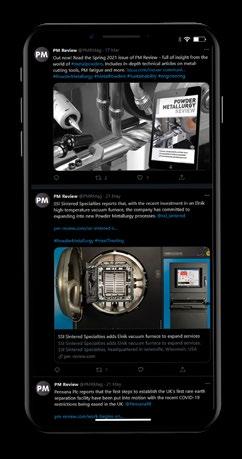

Sustainability in Powder Metallurgy: Highlights from the 41 st Hagen Symposium
The 41 st Hagen Symposium on Powder Metallurgy, organised by Germany’s Fachverband Pulvermetallurgie (FPM), took place in Hagen from November 30 to December 1, 2023. The event had a focus on sustainability and the changes needed for the PM industry to become greener through improved efficiency, reduced energy consumption and optimised raw materials usage. Dr Georg Schlieper reports on selected presentations that highlight some of the sustainability challenges being met by the industry. He also reports on the 2023 Skaupy Prize Lecture, given by Ruhr University Bochum’s Prof Werner Theisen.
The term ‘sustainability’ broadly refers to the goal for people to co-exist on Earth over a long period of time with minimal impact on the planet. In everyday use, the term often focuses on countering major environmental problems, including climate change, loss of biodiversity, loss of ecosystem services, land degradation, as well as air and water pollution. This very general definition encompasses everything that touches environmental, economic, and social concerns, which experts define as the three pillars of sustainability.
When we talk about sustainability in PM technology, we are looking at the impact that our manufacturing processes and products have on the environment as well as the economic aspects. A number of issues that impact sustainability can be identified, including:
energy consumption in PM manufacturing raw material utilisation
• product performance
• waste prevention weight savings
• product lifespan
• recycling, or end-of-life product reuse
• carbon footprint
The development of highperformance PM materials – as highlighted in the summary of the 2023 Skaupy Lecture that follows –can be regarded as a contribution to sustainability on their merit, as many of these PM materials make it possible to improve the effectiveness
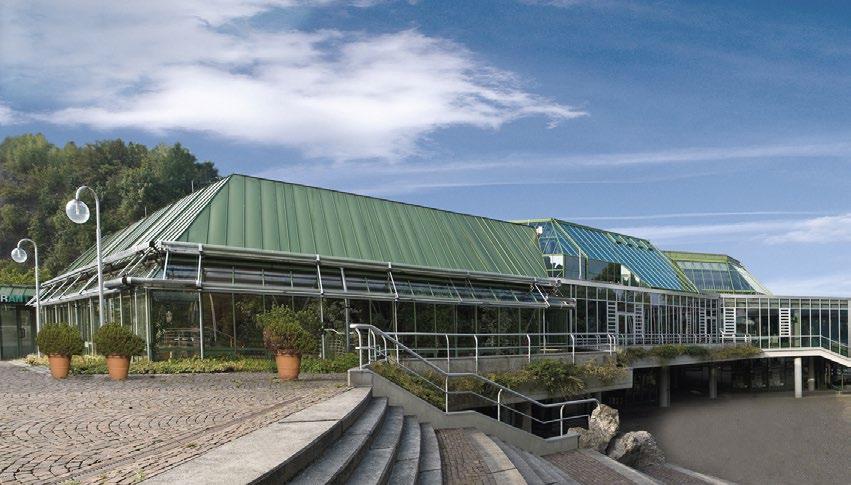

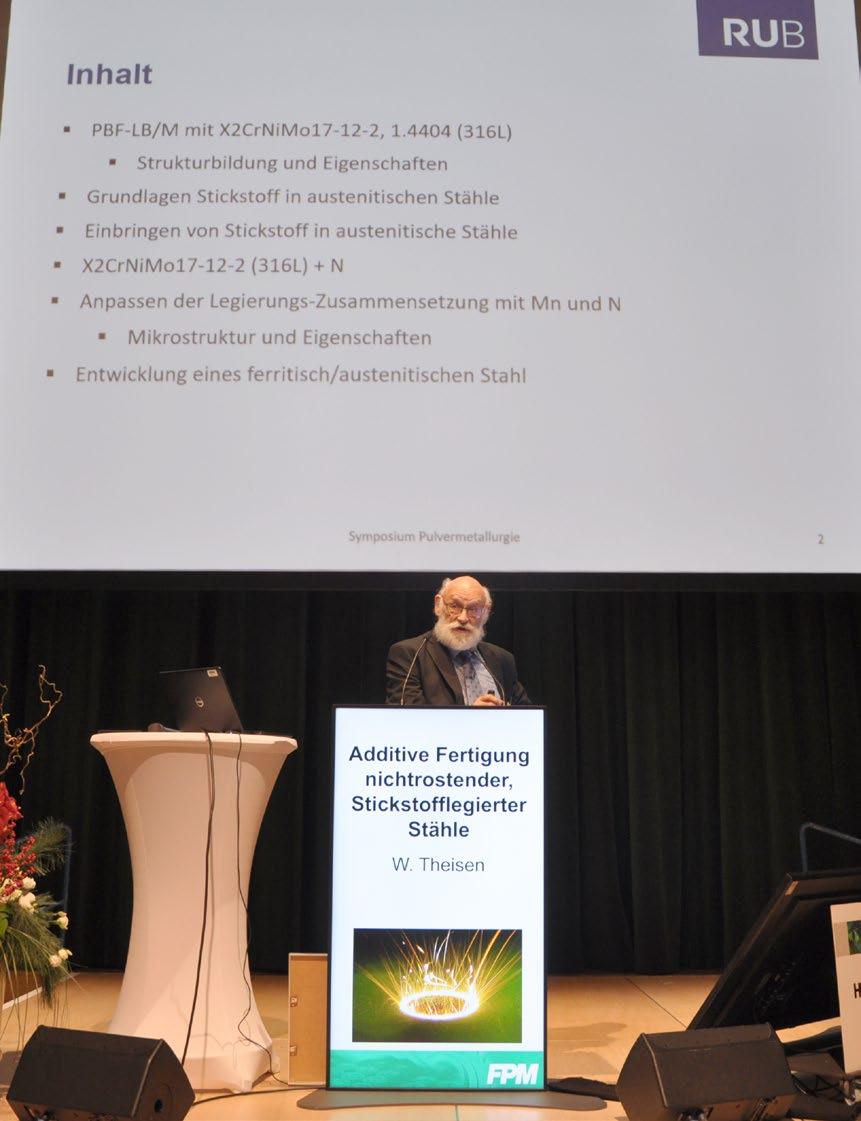
Fachverband Pulvermetallurgie)
“The development of high-performance PM materials can be regarded as a contribution to sustainability on their merit, as many of these PM materials make it possible to improve the effectiveness and service life of products, as well as potentially saving weight, thus saving raw materials.”
and service life of products, as well as potentially saving weight, thus saving raw materials.
Skaupy Lecture 2023: Prof Werner Theisen on nitrogen-alloyed stainless steel powders for AM
Werner Theisen, Professor Emeritus of Materials Science at the Ruhr University Bochum, received the 2023 Skaupy Prize from the Fachverband Pulvermetallurgie, a high honour that recognises outstanding achievements in the field of Powder Metallurgy. In his Skaupy Lecture, presented at the symposium, Theisen reported on the processing of nitrogen-alloyed stainless steel powders by Additive Manufacturing.
Austenitic stainless steel 316L (EN 1.4404) is characterised by excellent corrosion resistance, but does not have very high strength. If the strength were to be increased with carbon – as is common with many steels – the material would lose corrosion-resistant properties because chromium and carbon combine to form chromium carbide precipitates that reduce the chromium content of the matrix, especially at grain boundaries.
The strength-enhancing effect can only occur if the carbon atoms go into interstitial lattice sites. Therefore, the standard grade 316L stainless steel requires a maximum C content of 0.03%. Nitrogen, with a similar atom size to carbon, also increases the strength of steel in intermediate lattice sites, and it is possible to use carbon and nitrogen together to increase the strength of 316L without sacrificing corrosion resistance.
Samples of nitrogen-alloyed variants, 316L+0.1N and 316L+0.3N, were created by Laser Beam Powder Bed Fusion (PBF-LB) Additive Manufacturing. In order to achieve an even distribution of nitrogen in the powder, it was first heated in a vacuum furnace in a nitrogen atmosphere. After this treatment, a nitrogen content of

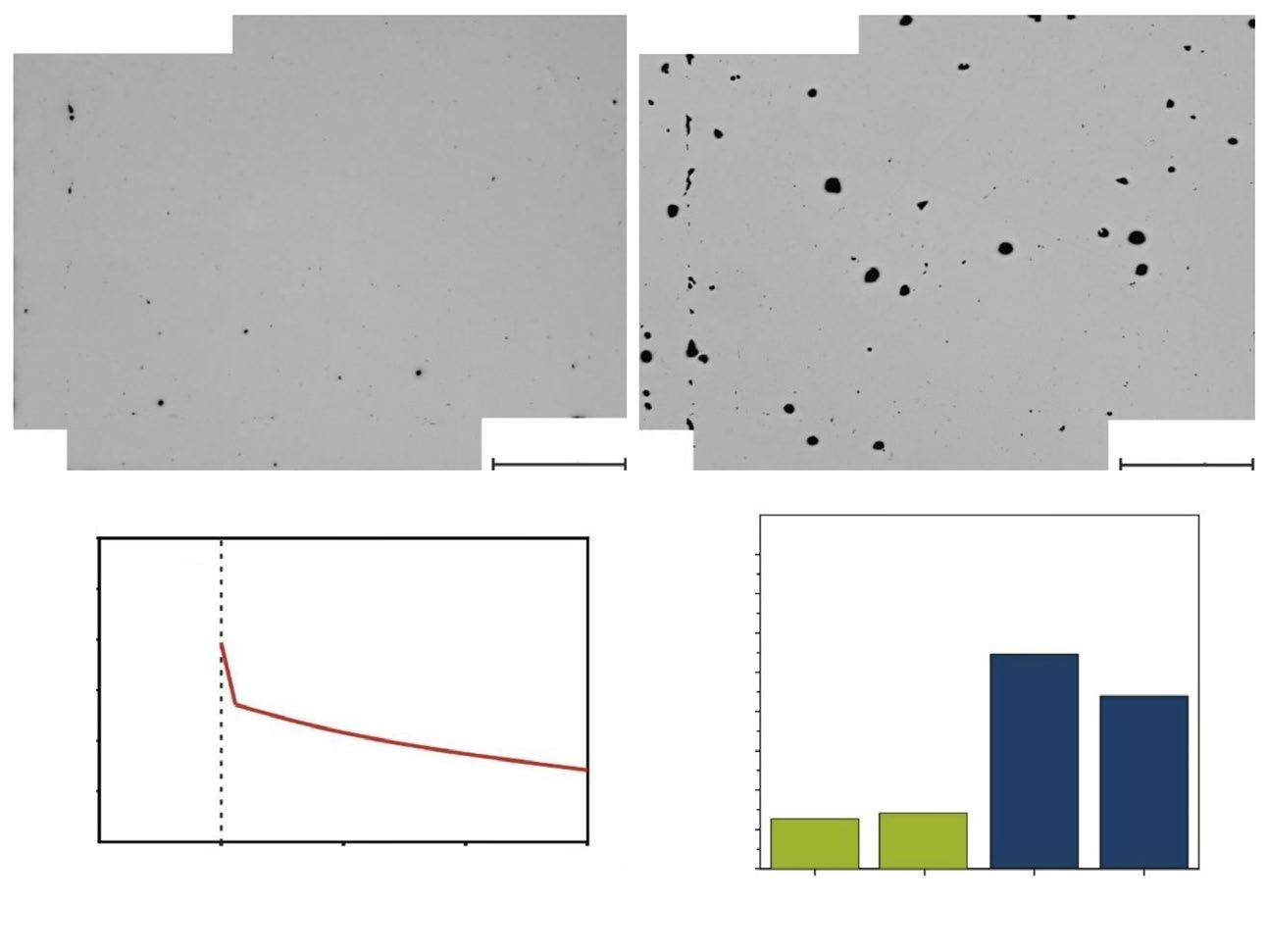
0.59% by weight was measured in the powder. To achieve the desired nitrogen content, the powder was then blended with standard 316L powder. Material samples from this powder mixture were then processed via PBF-LB in a nitrogen atmosphere.
Fig. 3 shows images of the built samples and the analysis of their nitrogen contents, whilst Table 1 shows mechanical characteristics obtained from tensile tests.
Similarly, Theisen’s team has developed two CrMn steels and an austenitic/ferritic duplex steel intended to increase the solubility of nitrogen and carbon without sacrificing corrosion resistance. Without going into further detail in this report, Fig. 4 shows that both the yield strength and tensile strength are increased considerably. Theisen concluded that the
“Nitrogen, with a similar atom size to carbon, also increases the strength of steel in interstitial lattice sites, and it is even possible to use carbon and nitrogen together to increase the strength of 316L without sacrificing corrosion resistance.”
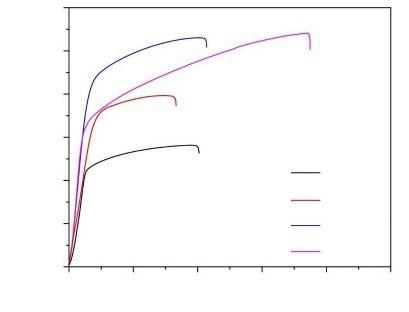

microstructures created during PBF-LB AM are ideally suited to utilise the advantages of nitrogen in austenitic lattices.
Sustainability in the hardmetals industry
In her presentation, ‘An outlook into the Hardmetal industry on sustainability and research,’ Susanne Norgren of Sandvik explored how the hardmetals industry needs to constantly adapt to the change
in demands driven by the world’s megatrends, such as sustainability, urbanisation and growing wealth, ageing, growing population, globalisation and digitalisation.
Saving strategic raw materials will become increasingly important in the future. In the hardmetals industry, a significant concern is reducing cobalt consumption.
Norgren referred to the development of cobalt-free binder systems by Leo Prakash and Björn Uhrenius in 1980, who laid the foundation for this trend.
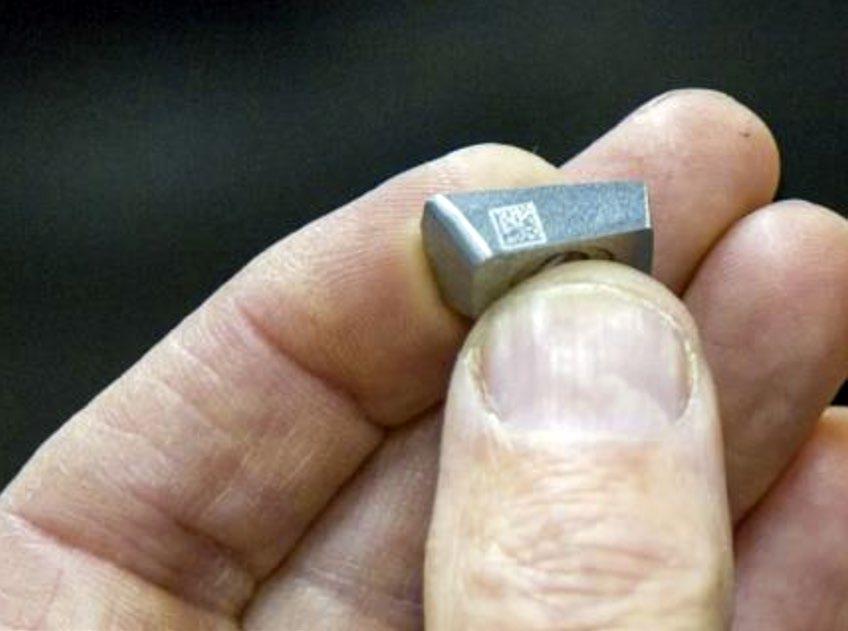
The recycling of cutting tools, mining tools and carbide wear parts is an important contribution to the reprocessing of raw materials. Marking the products with a data matrix (Fig. 5) makes it possible to store information about the production and material composition so that they can be recycled as a single material type.
Norgren stated that advancing digitalisation and computer models also make a significant contribution to improving sustainability, as they save time in the development of new products and avoid unnecessary experimentation, thus saving resources, energy and materials. This not only applies to the hardmetals (cemented carbide) industry but to industry in general.
Additive Manufacturing is known to be a raw material-saving process that supports the trend towards sustainable production, and gradually AM is also finding its way into the production of hardmetal products. Norgren presented an example of an additively manufactured hardmetal nozzle (Fig. 6).
In terms of interesting innovations relating to sustainability, Norgren highlighted a scoring system from the Japanese Cutting and Wear-resistant Tool Association, which is used to evaluate and promote products manufactured in an environmentally friendly way.
This system is intended to demonstrate successes in reducing the environmental footprint and provide an incentive for the production and use of environmentally friendly products.
Increasing energy efficiency in hardmetal production
Energy consumption and the opportunities for energy savings in the production of hardmetal tools were analysed by Sonja Adelhardt from Konrad Friedrichs GmbH. Her co-author, Timo Bäroth from ALD Vacuum Technologies, gave the presentation on behalf of Adelhardt, as she was unable to attend. The study investigated how much energy the individual production steps consume, using the example of a hardmetal ball-nose milling cutter with a diameter of 5 mm (Fig. 7). By creating the flutes of the cutter by green machining an extruded hardmetal rod, 20% of the material could be reused, corresponding to an energy saving of 7.2 kWh/kg.
The energy consumption for grinding hardmetal powder was determined to be an average of 210 kWh/t. The heating energy required for sintering is as high as 3 MWh/t (i.e. 14X as much as for grinding).
Taking into account the energy needed for cooling and the power
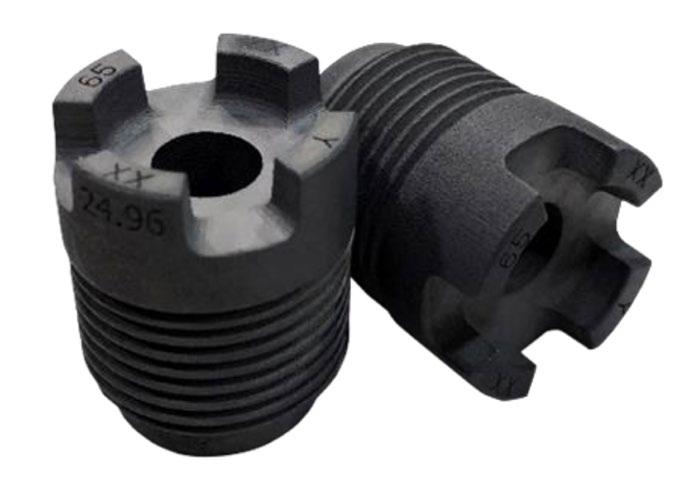
consumption of the peripherals, the total energy requirement for sintering was put at 4 MWh per ton of hardmetal.
A detailed analysis of the energy consumption of a sinter-Hot Isostatic Press (HIP) process – consisting of debinding, sintering, HIP and cooling – revealed energy-saving opportunities in the debinding phase, which consumed around a quarter of the total energy at 700 kWh, mainly by shortening the debinding process. However, it should be taken
into account that the wall thickness of the carbide parts also has a significant influence on energy requirements. Organic constituents decompose into volatile components and escape in vapour form. If the heating rate is too high, the pressure of these vapours will exceed the strength of the material, posing a risk of cracking.
Adelhardt examined the furnace pressure during debinding and determined that the evaporation rate is highest between 250°C and 350°C


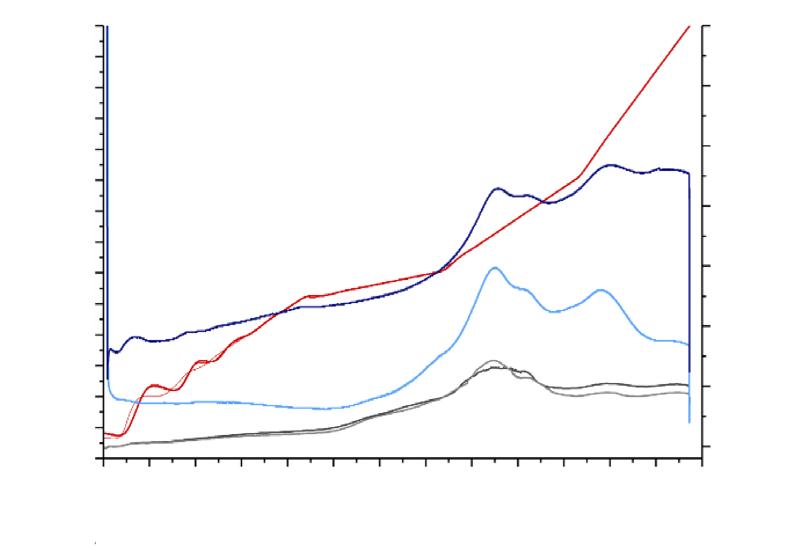
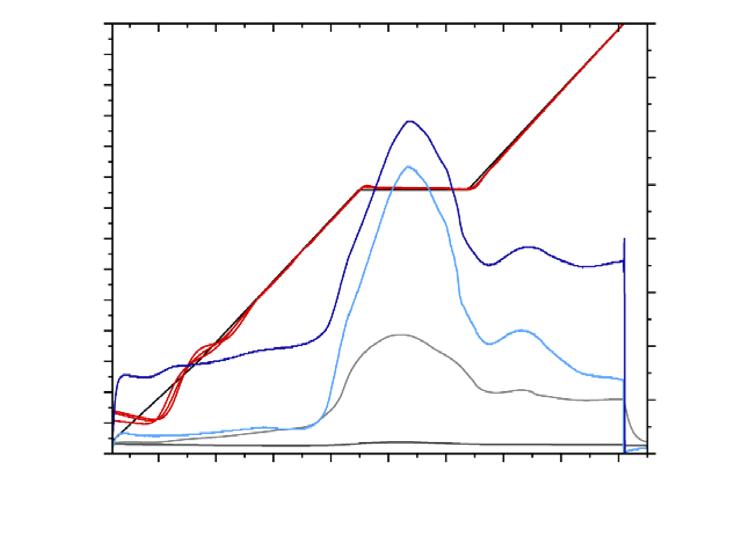
(Fig. 8). By regulating the heating rate depending on the furnace pressure, it was possible to reduce the debinding cycle time from 12.8 to 9.2 hours without compromising material quality. As a result, energy consumption during debinding was reduced by 60 kWh, or 9%.
The high-temperature processes of sintering and HIP consumed 1,250 and 850 kWh, respectively, while cooling consumed only 115 kWh.
Adelhardt concluded that energy savings in sintering and HIP can be achieved primarily by lowering the maximum temperature, but to achieve the same final product properties would require careful process optimisation.
Other considerations: coatings, recoating, recycling and waste
In her presentation, Margarethe Traxler, from Boehlerit, gave an insight into the development of coatings for hardmetal tools used for machining. The coatings produced by chemical (CVD) and physical (PVD) vapour deposition have significantly increased the service life and/or performance of hardmetal tools and thus make a valuable contribution to sustainability.
Heiko Wildner of Plansee, Austria, discussed Sustainable Development Goals and their impact on the PM industry, particularly refractory
metals. The useful life of hardmetal tools can be significantly extended in a way that saves raw materials if they are reground and the coating is removed and renewed. According to Wildner, this can be done up to fifteen times. Tungsten and hardmetal scrap can be recycled using the so-called zinc process.
Sebastian Weber reported on a study carried out at the Ruhr University of Bochum on processes for the recycling of chips and grinding sludge that arise during the production of broaching tools made of PM high-speed steel. The authors described two successful Powder Metallurgy routes to new products through waste recycling (Fig. 9).
The first route leads to a new semi-finished product made of highquality, high-speed steel. Chips and grinding sludge are first de-oiled in a multi-stage process, agglomerates of the finest particles are then crushed by ball milling, and, finally, non-metallic impurities are removed by magnetic separation. The recycled powder can be consolidated under pressure and temperature using Electric Discharge Sintering (EDS) or Field Assisted Sintering Technology, also known as Spark Plasma Sintering (FAST/ SPS). EDS and FAST/SPS are characterised by extremely short cycle times. The cylindrical pre-compacted powder blanks can then be loaded into a capsule for HIP treatment and processed into new semi-finished products. In this way, the material does not quite reach the quality of the original PM high-speed steel produced from gas-atomised powder, but comes very close to it.
The second route described by Weber was developed for a wear resistant material for use in drilling tools for mining. In this case, a certain portion of abrasive particles in the abrasive sludge is tolerated because it contributes to improved wear resistance. De-oiling and deagglomeration of the resulting powder is still carried out, but the impurities in the powder are not magnetically removed. The HIP process is dispensed with,
and instead a two-stage FAST/SPS process produces near-net-shape moulded bodies that serve as wear protection elements. Both routes are expected to offer energy savings compared to recycling by remelting conventionally produced high-speed steel tools.
Materials development using electric and magnetic fields
A new field of research offers the opportunity to develop innovative, energy-efficient, environmentallyfriendly and cost-effective routes for the synthesis and production of inorganic materials. Olivier Guillon from Forschungszentrum Jülich reported on current research work by various German research groups within the priority programme SPP 1959 ‘Fields Matter’, funded by Deutsche Forschungsgemeinschaft (DFG). However, only the activities that directly relate to Powder Metallurgy are outlined here.
A research group at the Technical University of Darmstadt, led by Prof Gutfleisch, used the Spark Plasma Sintering (SPS) technique to produce powerful nanocrystalline anisotropic NdFeB magnets. The influence of electromagnetic fields on diffusion and ordering processes in metallic alloys is becoming better understood. One goal of the research is to develop high-performance magnets that are free of rare earths.
At Forschungszentrum Jülich, field- and pressure-assisted sintering processes are being developed, such as FAST/SPS, Flash Sintering, Flash Spark Plasma Sintering (Flash SPS) and Ultra-fast High Temperature Sintering (UHS). Compared to sintering in batchtype or continuous furnaces, these processes save time and energy. In Flash Sintering, an electrical voltage is applied to the sample, which is heated with an external heating element until it becomes conductive. The sudden electric current that flows through the sample causes it to rapidly heat up and leads to rapid densification. In Flash SPS, a sample


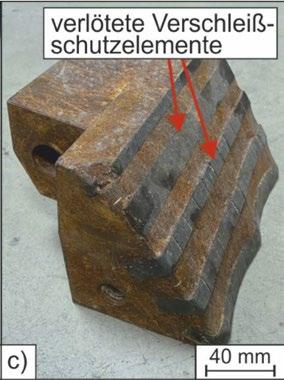

(a)
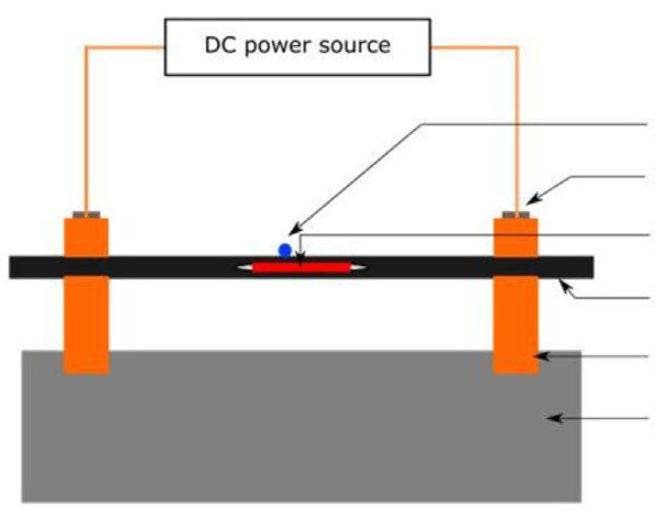
(b)
DC power source Copper electrode Carbon felt sample
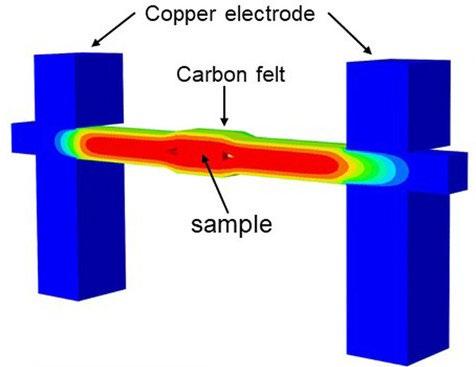
Focus of pyrometer
Electrical contact
Pre-compacted sample
Carbon felt
Copper electrode
Al 2O 3 base

117918)
is rapidly heated by a pulsed current and compressed under load. Flash SPS was said to be favoured for the production of NdFeB magnets and the recycling of magnetic waste.
In the UHS process, a precompacted ceramic or metallic
sample is positioned between two graphite felt strips and heated to the sintering temperature in a few seconds using a direct current (Fig. 10). Guillon predicts a bright future for field-assisted sintering processes.

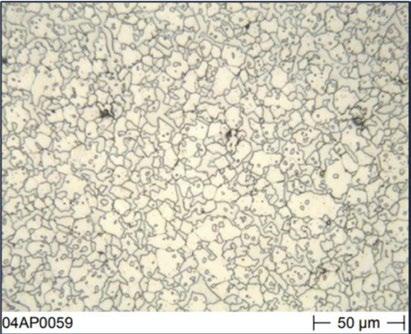


Sustainability improvements in MIM technology
Jack Schwarz, Plant Manager at GKN Powder Metallurgy’s Metal Injection Moulding (MIM) facility in Bad Langensalza, Germany, used examples to show how a resource-saving process such as MIM contributes to the sustainability of industrial production.
MIM technology offers the possibility of producing alloys that are difficult or impossible to produce by investment casting, such as X220NiCrMo 40-12-6 steel. The adjustment ring of a turbocharger made of this material, shown in Fig. 11a, is manufactured in large quantities by MIM with only minor post-sintering processing. The structure of the sintered component is isotropic and free from segregation (Fig. 11b).
An innovative solution that provides both energy and cost savings was shown in Schwarz’s second example (Fig. 12). Two MIM components act as spacers in a coupling device. In order to compensate for the manufacturing tolerances of the coupling sheets, the customer needs nineteen dimensional subgroups to achieve an overall thickness tolerance of 0.05 mm. These tight dimensional tolerances could not be produced reliably via MIM in mass production. Instead of mechanically reworking the MIM parts, they are measured in an automatic measuring station and sorted into various subgroups.
Schwarz’s third example was a MIM valve train component whose manufacturing process has been switched from investment casting to MIM (Fig. 13). The MIM part is lighter than the investment casting, thereby reducing the mass inertia losses of this dynamically highly stressed design. In addition, the MIM component must be extremely reliable because failure would result in significant consequential damage. These requirements are completely fulfilled by the MIM part.
Reducing energy consumption in MIM production is a topic that has
been discussed regularly for many years, and Schwarz reported on current strategies in MIM technology to save energy. Most of the electrical energy used in GKN’s MIM production is for debinding and sintering (Fig. 14).
In GKN’s plant, only continuous furnaces for debinding and sintering are used; these furnaces provide good energy efficiency at high loads. However, the energy demand remains high when the load factor is low, or a furnace is in standby mode. The difficulty in adapting the energy required in the furnace to the amount of MIM parts produced was illustrated by an example during the pandemic in 2020, when production fell to almost zero in one month.


Electricity consumption during this period was only reduced from an average of 420 MWh/month to 250 MWh/month, due to the standby operation of the furnaces. Energy costs in Germany rose sharply due to the lack of energy supplies from Russia in 2022, which further increased the pressure to reduce energy consumption. The throughput of the sintering furnaces was, therefore, increased as much as possible. Additionally, more energy-efficient sintering and injection moulding systems were used. As a result, it has been possible to reduce energy consumption by 18%.
High-strength sintered steel using hybrid master alloy technology
Press-and-sinter PM producers are under constant cost pressures. Therefore, material costs and costeffective manufacturing processes play a greater role here than in many other PM technologies. Stefan Geroldinger presented research results from the Vienna University of Technology on the development of PM alloys that avoid the alloying elements copper and nickel and still achieve attractive mechanical
“Press-and-sinter PM producers are under constant cost pressures. Therefore, material costs and costeffective manufacturing processes play a greater role here than in many other PM technologies.”
properties when processed in a belt or pusher furnace with sinter hardening.
The term ‘hybrid master alloy technology’ means that a pre-alloyed powder with a low alloy content and good compressibility is used as the base powder, and further alloying elements are added in the form of a master alloy.
A new pre-alloyed powder Astaloy CrS and the well-known Astaloy 85Mo, and two master alloys, MA1 and MA2, were used as base powders (Table 2). This resulted in sintered steels with 4% master alloy each containing the addition of graphite, so that a final C content of 0.6% was obtained, taking into account the C loss during sintering. The sintering
temperature was 1,140°C and the sintered density of the samples was 7.0 g/cm³. The sintered steels produced in this way achieve a hardness level of 450 to 500 HV30 by sinter hardening and tempering.
Conclusions and outlook
The Hagen Symposium has once again shown that Powder Metallurgy is a constantly evolving technology.
The technical innovations of the past decades are continually being updated and new technologies are already recognisable. The increasing implementation of recycling PM products at the end of their service life will contribute to saving raw materials.
Established sintering processes require high amounts of energy. Therefore, innovative sintering processes like FAST/SPS can partly contribute to reduced energy consumption in PM. The impact of artificial intelligence (AI) on the
sustainability of PM technology has not yet been assessed.
The good news is that the need to achieve sustainability has been recognised in the PM industry. Many activities to improve sustainability, such as reducing energy consumption, will also reduce manufacturing costs. However, while the implementation of costcutting measures is relatively easy to accomplish, there will be no easy way of avoiding major financial investments in order to make PM technology truly ‘green’. With increasing CO 2 taxes, EU legislation will inevitably increase the pressure on industry as a whole, and the PM industry in particular, to invest in climate-friendly measures.
Author Dr Georg Schlieper D-45149 Essen Germany info@gammatec.comHagen Symposium 2024
The 42 nd Hagen Symposium will take place from November 28-29, 2024, and has the theme ‘Powder metallurgy in stormy times.’
www.pulvermetallurgie.com

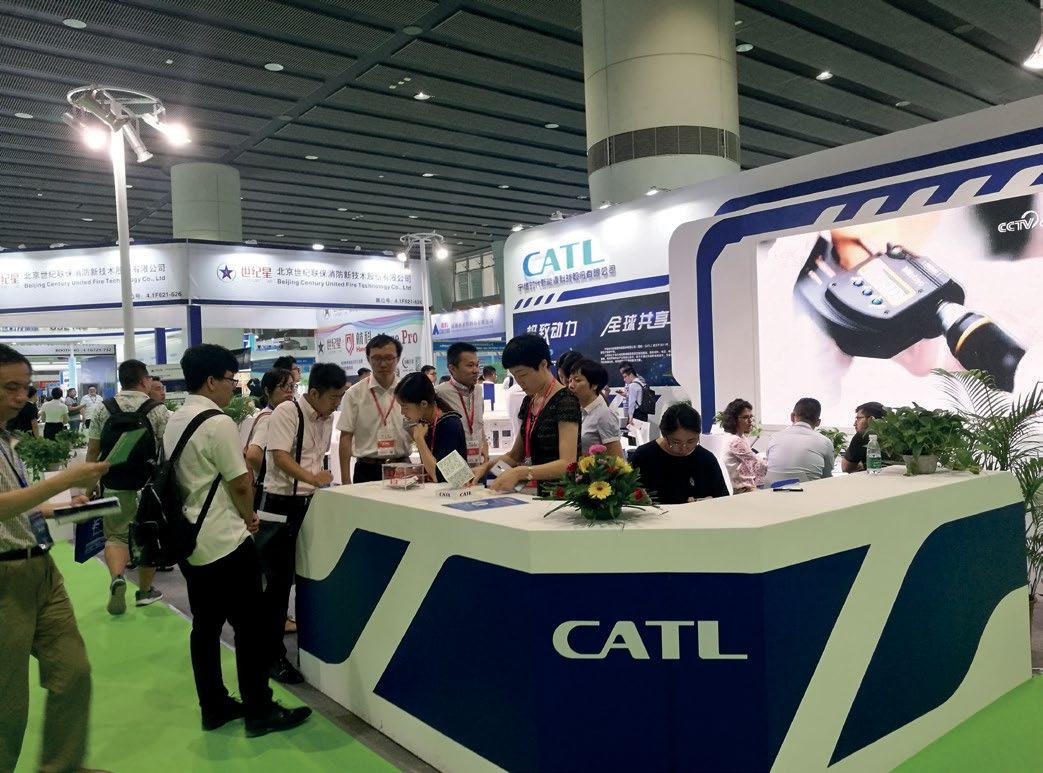
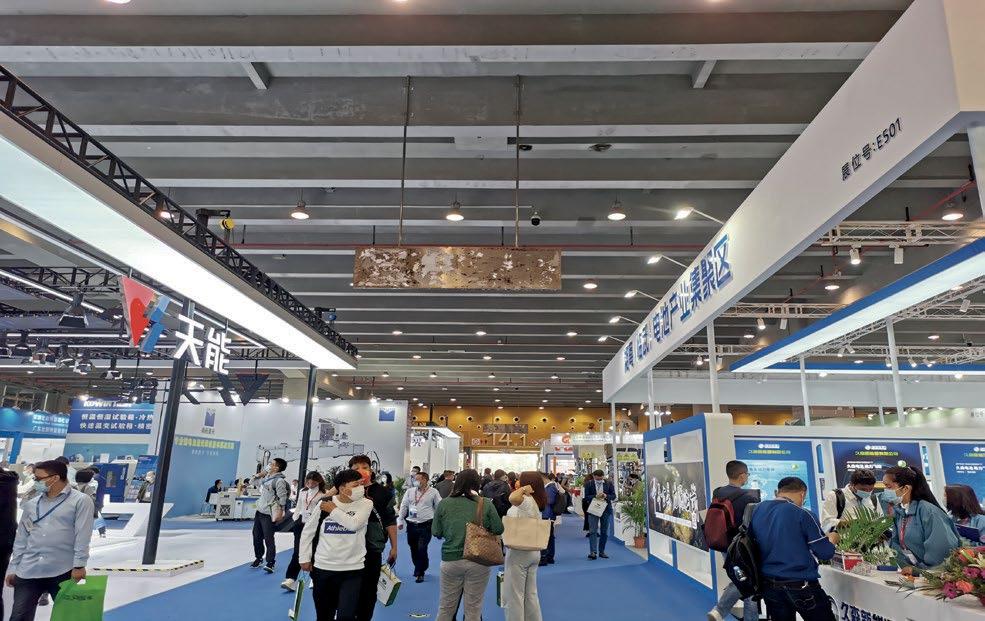
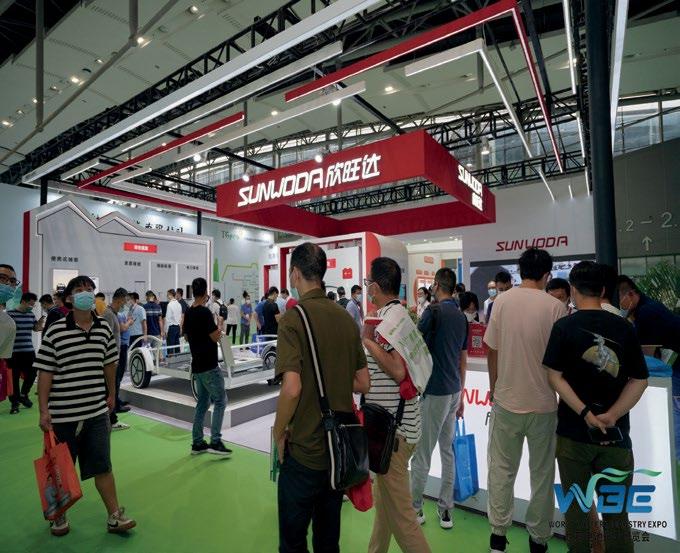
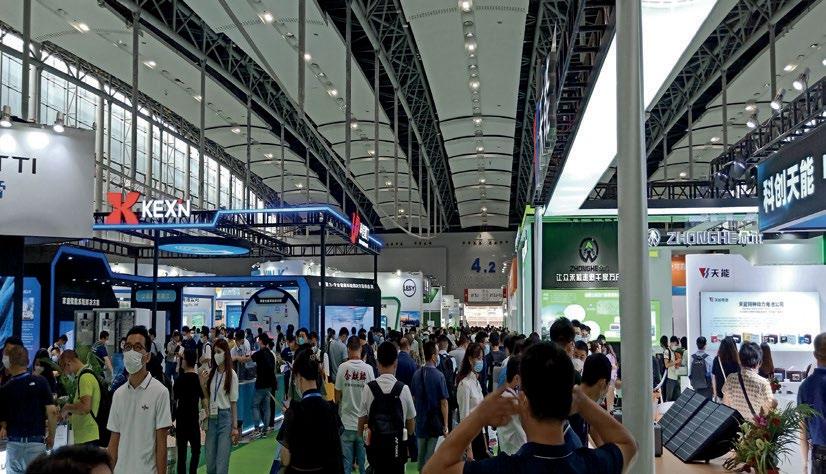

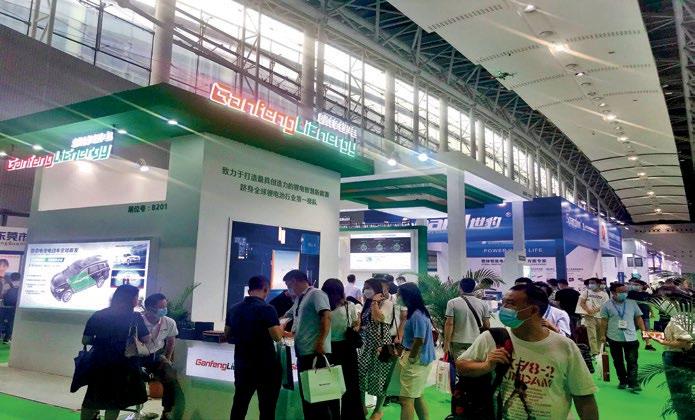
Americas’ Leading Conferences on Powder Metallurgy and Metal Additive Manufacturing are Coming to the Steel City!

PM, MIM, and Metal AM Tutorials

Carbide Technical Track

Daily Light Registration

Keynote Speaker: Damon West— “Be the Coffee Bean”

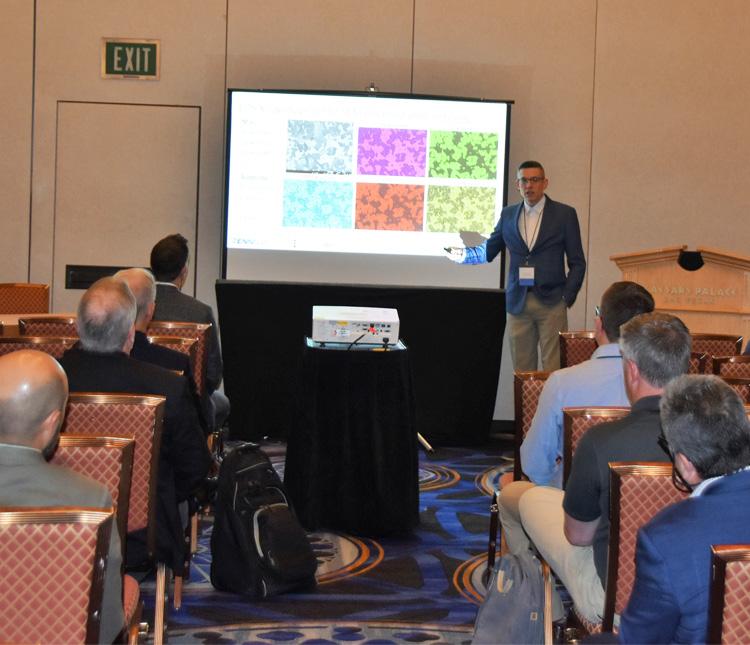






Innovations from Japan’s Powder Metallurgy industry: award winners
highlight novel automotive and healthcare applications
In 2023, the Japan Powder Metallurgy Association (JPMA) celebrated forty-five years of its PM component awards competition. This year’s competition recognises achievements within the Powder Metallurgy industry across three categories: New Products (New Design/Materials/Process Development), New Powders and Equipment Development. The organisers also recognised products not covered by the categories with the awarding of the Effort Prize. This year’s innovations ranged from reactor cores for electric vehicles to aluminium bronze powder.
Grand Prizes for new Powder Metallurgy products
High frequency, high strength PM soft magnetic reactor cores for electric vehicles
Fine Sinter Co., Ltd, and Daido Steel Co., Ltd. won an award for soft magnetic cores used in the power control units (PCUs) of electric vehicles (Fig. 1). Recently, there has been a growing demand for smaller reactor cores with high insulation properties that can support operation at higher frequencies. These parts are conventionally manufactured using soft resin insulation films. However, these deform during moulding, making it difficult to calculate insulation distance. With Fine Sinter and Daido Steel’s new reactor core, this issue was solved through the development of a powder with an aluminium oxide insulation film and a glass coating, in combination with the use of a new thermal process during manufacture. With these improvements, the companies
commercialised a core with both high insulation and strength.
The production of the powder with an Al 2O 3 film, however, presented challenges as the formation of aluminium inclusions inhibited
atomisation. To overcome this, the companies brought in large-scale gas atomisation equipment that could melt the metal in an inert atmosphere, making stable production possible. In addition, a new
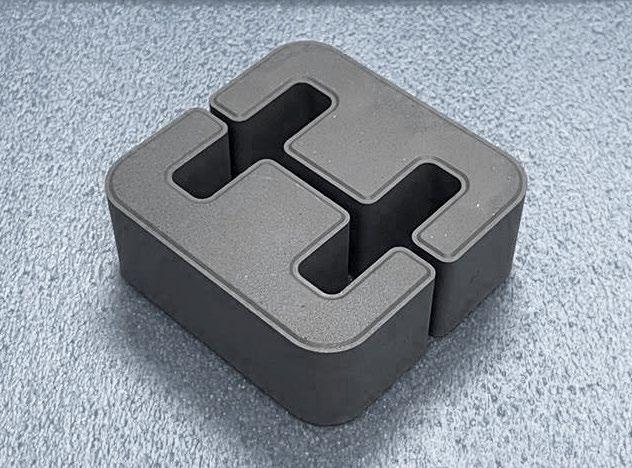


heat treatment process results in low iron (Fe) loss and reduced inductance variation, stabilising atmospheric Al 2O 3 film thickness to enable the mass production of the powder.
Moulded cores are easily damaged by conventional conveyance equipment due to low moulded strength. This led the companies to develop new conveyance and
handling equipment which optimised gripping force, position, falling height and angles, etc. The result was a 50% reduction in manufacturing time compared to conventional production lines.
In order to achieve high-strength, low-melting-point glass is softened, cooled and solidified through heat treatment. However, during heat treatment the degreased gas inhibits
“Moulded cores are easily damaged by conventional conveyance equipment due to low moulded strength. This led the companies to developing new conveyance and handling equipment which optimised gripping force, position, falling height and angles, etc. The result was a 50% reduction in manufacturing time...”
the adhesion of the glass, thus reducing its strength. To overcome this issue, a new mechanism was implemented whereby the exhaust route of the evaporated degreased gas is kept constant and decomposes only outside the furnace.
By implementing unmanned operations, from powder moulding to packaging, Fine Sinter and Daido Steel reportedly achieved a 40% increase in productivity.
High-precision PM parts for a new semi-active suspension system
Fine Sinter Co. Ltd. also won an award for piston and pilot case parts used in a semi-active suspension system for large SUVs (Fig. 2). The installed unit performs precise damping force control to improve off-road performance and vehicle stability. The damping force control valve – which was traditionally on the outside – is now built into the shock absorber, saving space and reducing weight.

The built-in valve mechanism consists of three components: the piston and two pilot cases, between which the piston is sandwiched. A narrow, complex internal oil passage is subject to high internal pressures, meaning each component requires high sealing performance, rigidity, and precision.
The piston’s diagonal ports (oil passages) are often produced by machining, but Fine Sinter was able to manufacture them by placing the oil passages on the outside of parts during manufacture, then assembling two matching parts. With this method, however, came concerns about buckling due to the stress placed on the complex structure, leading Fine Sinter to adopt Fe-Cu-C, which is more rigid than Fe-C. The trade-off with the high rigidity was that straightening performance during a recompression step decreased; here, the team used CAE analysis to optimise the product and mould shapes. This
significantly reduced machining and succeeded in lowering costs. In addition, Fine Sinter suppressed the variation in the pressing direction of moulding compression (variation had increased due to the complexity of the shape) by improving process control through the use of a special jig, enabling the strict requirement of an assembly clearance of 10 μ m or less to be met.
By optimising the shape of the surface and the compression die of the pilot case in order to satisfy tight dimensional tolerances, the company was able to successfully incorporate the internal control valve, contributing to a 20% reduction in unit size and a 30% weight reduction.
PM oil-impregnated bearing unit for CPAP equipment
Porite Corporation was recognised for a bearing unit used in a Continuous Positive Airway Pressure (CPAP) device that is used for treating sleep apnoea, a condition
in which breathing stops and starts during sleep (Fig. 3). To circumvent a loss of oxygen, a CPAP machine sends pressurised air from the nose to the airway, thus spreading the airway. A blower motor is used to introduce the pressurised air, and it is necessary to adjust the discharge rate of the air according to the patient’s breathing; as such, high responsiveness to follow the high-speed rotation of the motor is required. In addition, as it is in contact with the human body during sleep, the machine must be relatively quiet and offer a long life.
The reduction of shaft vibration is important for lowering noise; to do this effectively, the clearance between the shaft and the bearing is typically reduced. Sliding loss, another issue, is caused by an increase in fluid resistance. Porite succeeded in reducing sliding resistance to its lowest iteration by developing a bearing with a medium relief shape into which the central

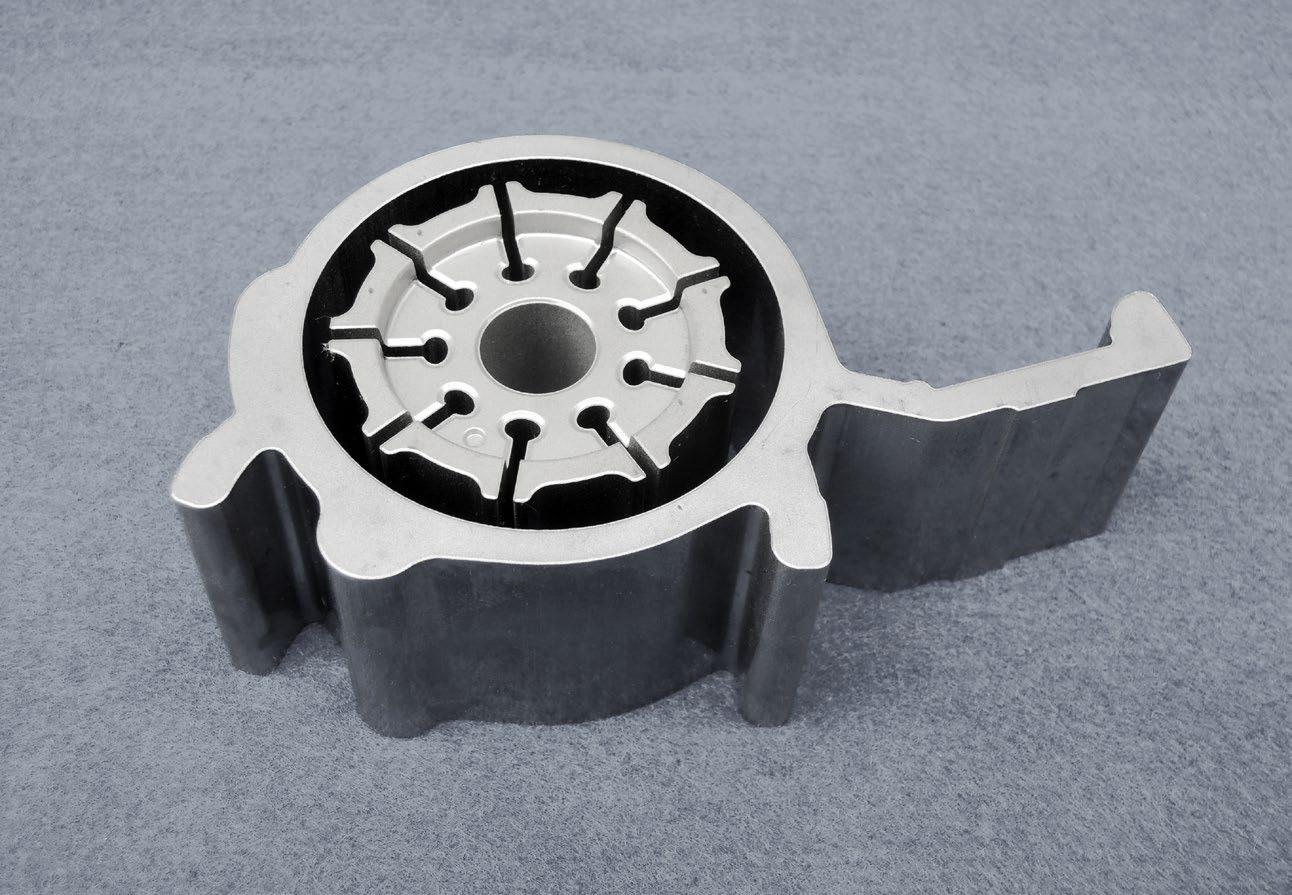
“The development focused on satisfying the demand for larger capacity by increasing the overall part length and lowering loss by using thinner vanes. The total length of these parts is 40 mm, approximately 50% larger than conventional parts.”
part of the shaft sliding surface glides and features a fine dimple on the sliding part. In addition, the company aims to further improve sliding loss through the combined use of low-viscosity, ester-based oil.
Porite was also concerned about the decreased viscosity of impregnated oil due to frictional heat during high-speed rotation. The company optimised the bearing material and suppressed the oil leakage scattered
through the shaft by using a sintered seal cap impregnated with oil repellent. This was placed on the end face of the bearing to serve to prevent oil leakage. Reduction in oil consumption is directly linked to product life, so changes such as those above directly contribute to this factor.
Porite has successfully commercialised these oil-impregnated bearing units for CPAP equipment, replacing conventional ball bearings.
Long, complex rotor and slide for variable displacement vane pumps Sumitomo Electric Industries, Ltd. won an award for a rotor and slide for variable displacement vane pumps that improve the efficiency of large engines (Fig. 4). The development focused on satisfying the demand for larger capacity by increasing the overall part length and lowering loss by using thinner vanes. The total length of these parts is 40 mm, approximately 50% larger than conventional parts because of the need for a large discharge volume for pump function. Accordingly, a number of measures were taken to meet the pump specifications.
For density balance, the tool punches for compacting the rotor are usually divided into two punches due to the inner concavity of both end faces. However, the slits for the vanes would result in a disconnected structure for the operating punches, which could increase the
risk of tool breakage. As a countermeasure, the company focused on the fact that the concavity remains the same level (4 mm) even though the overall length is larger than that of conventional parts, and the company adopted non-divided single upper and lower punches.
In addition, due to the extremely narrow slit width (1.8 mm) in the conventional method (compacting the slits using side cores fitted to a die), the tools were damaged because of resistance when the green compact was ejected. Therefore, Sumitomo developed a method of embedding side cores in the die using double shrink fitting based on FEM analysis, enabling the mass production of the rotor.
The slide requires a high degree of peripheral contour despite the long/complex shape, which necessitated designing tools based on a prediction of dimensional changes in each process. A slide has two points of reference: a centre for position adjustment and a rotor eccentric point. The conventional tool setting based on one point – the rotor eccentric point of the slide –caused scratches on products during the sizing process. Therefore, the company calculated the tool settings based on the above two reference points according to actual use, satisfying the precision requirements of the slide.
In conclusion, Sumitomo Electric Industries’ success in the development of the components contributes to the improvement of fuel efficiency and CO 2 reduction in large motors.
Raw Material Grand Prize: metal powders category
A new aluminium bronze powder for PM
Fukuda Metal Foil & Powder Co., Ltd. won an award for a new aluminium bronze powder. Bronze is a copper alloy with high strength, heat resistance, corrosion resistance, and wear resistance, and is widely used in ships and mechanical parts. Many aluminium bronze parts are manufactured by casting and then machined to improve dimensional precision.
Traditionally, manufacturing aluminium bronze parts using Powder Metallurgy has been difficult because the alumina layer formed on the powder surface presents challenges during sintering.
In this development, Fukuda Metal Foil & Powder Co removed the alumina layer as AlOF gas by adding AlF 3 as a sintering aid to the Cu-Al alloy (the raw powder) and succeeded in promoting diffusion among powder particles and, thus, sintering the aluminium bronze. Furthermore, the company added CaF 2, which forms a liquid phase
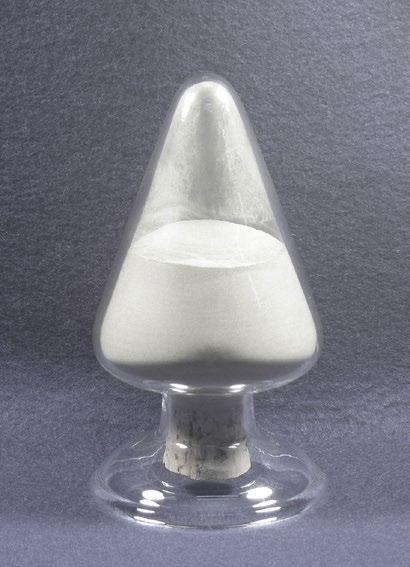

with AlF 3, to enhance the action of the sintering aid and improve sinterability.
This powder, however, required sintering in pure H 2, which was regarded as impractical. This led the company to add Cu-P to improve sinterability, achieving sintering in an atmosphere with a low H 2 concentration. As a result, it has become possible to sinter the aluminium bronze in a low H 2 concentration atmosphere, including N 2, thereby making it more suitable for mass production.
“Many aluminium bronze parts are manufactured by casting and then machined to improve dimensional precision. Traditionally, manufacturing aluminium bronze parts using Powder Metallurgy has been difficult because the alumina layer formed on the powder surface presents challenges during sintering.”

This powder has now been adopted for the production of bearings for automotive fuel pumps, which are used in environments immersed in fuels, such as gasoline, and is expected to be used for biofuels and synthetic fuels in the future. Additionally, adding aluminium bronze as a new material selection for Powder Metallurgy is expected to apply to the fields that require corrosion and wear resistance.
Effort prizes
The following companies were selected from the competition entrants for an ‘encouragement award’ as the entries were recognised as having unique characteristics.
PM parking components for EVs Sumitomo Electric Industries, Ltd was recognised for sintered parking support parts used in the parking
“This powder has now been adopted for the production of bearings for automotive fuel pumps, which are used in environments immersed in fuels such as gasoline and is expected to be used for biofuels and synthetic fuels in the future.”
lock mechanism of EV transmissions. The parking support works via the following mechanism: when the transmission shift lever is placed in the park position, the mating part (parking wedge) rides on the tapered part of the parking support and pushes up the parking pawl, which locks the parking gear and fixes the axle.
Initially, the customer gave the end face of the parking support a concave shape, which necessitated compacting with divided tools to adjust the density balance. However, there were disadvantages of compacting with divided tools, including concerns about tool damage and difficulty in ensuring flatness. Accordingly, Sumitomo proposed that the customer reduce the stepped surface, enabling the addition of a concave shape of the parking support parts with an integrated tool.
Another issue was the strict requirement of parallelism for
the end face of the part, due to the mounting of a leaf spring to the surface. In the conventional method, this specification could be met only by machining. Nevertheless, an extremely uniform density distribution ensured parallelism without machining – this was done by applying powder scraping technology and adding a powder relief shape, including introducing the integrated tool mentioned above. In doing so, Sumitomo Electric Industries has accomplished the mass production of sintered parts without machining.
Oil-impregnated sintered bearings with excellent wear resistance As demand for reduced fuel consumption and lower exhaust emissions has increased in recent years, the management of cooling systems in automotive applications has become ever more critical. A motorised open/close valve can be used to precisely control the flow rate of cooling water or gas. Porite Corporation has developed an advanced bearing that is used in these motors.
The valve-switching motor has to operate in a wide temperature range and is subject to high levels of vibration. Therefore, a durability evaluation had to include operation at a range of temperatures. A heat cycle test was used to apply vibration while moving the temperature from 40-160°C. Abrasion resistance and low-temperature noise suppression were required as a function.
The material used in this product, Cu-Fe-Sn-C-P, is primarily composed of copper-coated iron powder with a proven track record in automotive components, supplemented with graphite. The company ensured wear resistance, frictional performance, and lubrication by coating the surface with copper over an iron skeleton and incorporating solid lubrication through graphite. To ensure a stable supply of lubricating oil from high to low temperatures, the company introduced a density gradient with higher density on the inside which
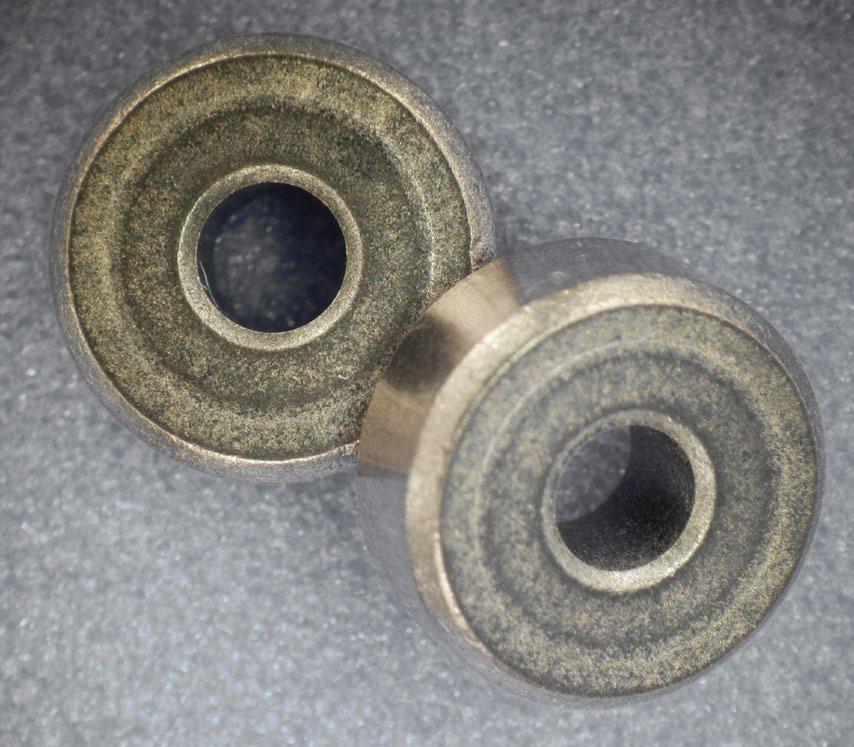

decreased towards the outside, maintaining the oil content while controlling the supply from the sliding surface. A density gradient was created by incorporating a convex shape near the inner diameter of the bearing end face and compressing it appropriately during re-compression.
The outer diameter side serves as an oil reserve, and oil is supplied to the inner diameter side by the capillary force generated by the density gradient. As a result, the formation of an oil film on the inner diameter surface is accelerated, improving the sliding characteristics. The recompression step during compaction increased the surface hardness of the bore diameter and improved wear resistance.
The requirements for a wide temperature range were acheived by adopting a fluorine oil with little evaporation under high temperatures and reduced viscosity rise under low temperatures.
Japan Powder Metallurgy Association
MatsudaShoji Bldg. 3-42-7, Taito, Taito-ku, Tokyo 110-0016 Japan
www.jpma.gr.jp
info@jpma.gr.jp
Advertisers’ index & buyer’s guide
Our advertisers’ index and buyer’s guide serves as a convenient guide to suppliers across the PM supply chain. In the digital edition of PM Review magazine, available at www.pm-review.com, simply click on a company name to view its advert, or on the company’s weblink to go directly to its website.

COMPACTION PRESSES,
CONSULTING & TOLL SINTERING
Combining
Reach
Industry events
PM Review is dedicated to driving awareness and development of Powder Metallurgy and its related technologies. Key to this aim is our support of a range of international partner conferences. View our complete events listing on www.pm-review.com
2024
PM China 2024
March 6–8, 2024 – Shanghai, China en.pmexchina.com
AMUG 2024
March 10–14 – Chicago, IL, USA www.amug.com
EPMA Energy Seminar
March 12–13 – Le Creusot, France seminars.epma.com/event/energy-seminar-2024
The 2 nd European Automotive Decarbonization and Sustainability Summit 2024
March 19–20 – Frankfurt, Germany www.ecv-events.com/ads/EuropeanAutomotive
ceramitec 2024
April 9–12 – Munich, Germany www.ceramitec.com
Hannover Messe
April 22–26 – Hannover, Germany www.hannovermesse.de
The Advanced Materials Show May 15–16 – Birmingham UK www.advancedmaterialsshow.com
The Advanced Ceramics Show
May 15–16 – Birmingham UK www.advancedceramicsshow.com
The Magnetics Show 2024
May 22–23 – Pasadena, CA, USA www.magnetics-show.com
EPMA AM Seminar
June 4–5 – Augsburg, Germany seminars.epma.com/event/am-seminar-2024
2 nd European EV Thermal Management Summit 2024
June 6–7 – Frankfurt, Germany www.ecv-events.com/ads/ EuropeanEVThermalManagement
Advanced Manufacturing for Defense
June 11–12 – Pasadena, CA, USA www.idga.org/events-advancedmanufacturing
Dritev
June 12–13 – Baden-Baden, Germany www.vdiconference.com/dritev
PowderMet2024/ AMPM2024
June 16–19 – Pittsburgh, PA, USA www.powdermet2024.org/ www.ampm2024.org
RAPID + TCT 2024
June 25–27 – Los Angeles, CA, USA www.rapid3devent.com
WBE 2024
August 8–10 – Guangzhou, China en.battery-expo.com
PMTi 2024
September 4–6 – Madrid, Spain www.pmti2024.com
Euro PM2024
September 29 – October 2 – Malmo, Sweden www.europm2024.com
The Advanced Materials Show USA
October 8–9 – Pittsburgh, PA, USA www.advancedmaterialsshowusa.com
World PM2024
October 13–17 – Yokohama, Japan www.worldpm2024.com
Formnext
November 19–22 – Frankfurt, Germany www.formnext.com
Looking for an event partner?
PM Review has collaborated with various Powder Metallurgy and automotive events, ranging from major trade shows to smaller technical conferences, throughout the year. If you would like to partner with us for your event, contact Merryl Le Roux: merryl@inovar-communications.com
